#alternate future dave aesthetic
Text

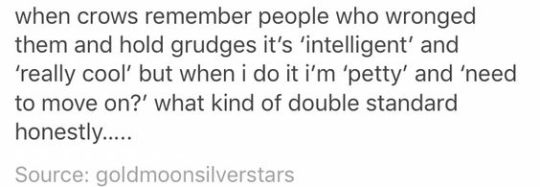
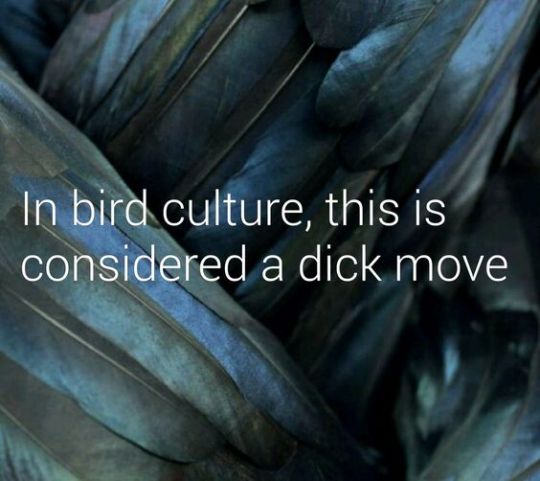

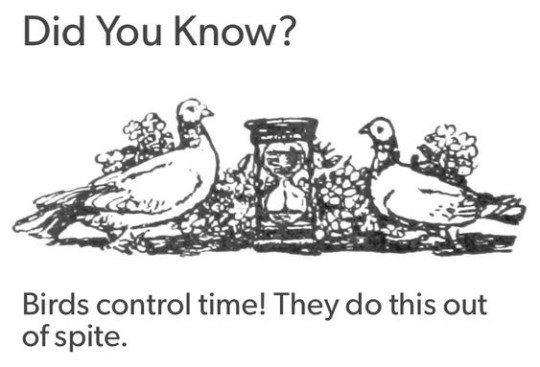




Shitty Davesprite aesthetic: it's so incredibly weird to realise how much of early tumblr culture was just homestuck repackaged so normal people didn't realise. i've been saying "caw caw motherfuckers" for years. what the hell
#davesprite#homestuck#hs#alternate future dave#davesprite aesthetic#homestuck aesthetic#hs aesthetic#alternate future dave aesthetic#davesprite kin#homestuck kin#hs kin#hskin#alternate future dave kin#shitty aesthetic tm
145 notes
·
View notes
Note
I SEE THOSE TAGS . EXPLDOES
please omg ramble this is so interesting
ok im awake and also formulating. the bag of cats is wide open and by god those cats are running around knocking over glasses
Ok so theres 8 gyms, 4 elite 4, and 1 champion, as well as the professor. Thats 16 spots.
I dont know who the professor would be... i could see rose because shes so silly and "oh yes i am very worldly believe me i am very cool". She would probably make fore-shadowy comments whenever the player sees her.
Her Ace would be Gothitelle both because heehoo goth pokemon but also because gothitelle is said to be able to see the future through the stars.
She would also have an Absol, because she's working around and planning for disasters a lot.
I also want to give her a misdreavus or mismagius, though that's more for the aesthetic than for a bigger reason.
As a professor, she would be studying the intersection between death/disaster and life, and how pokemon help those interactions.
I think that John would be the ex-champion, who's now in charge of a gym (probably 6 or 7). He'd (of course) be a flying gym. He'd make jokes the entire time, and you'd have to walk through a bunch of pranks and net traps to get to him. He'd probably make references to slightly different pasts (like- oh you used that move? I thought you used x). Pretty even balance between physical and special attack.
His ace would be Braviary, because they're very friend-focussed. He'd also have a Swellow- swallows are common in washington, so it makes sense in a meta standpoint. I think Dad would have gifted him a pidgey so they could grow together, so he would also have a Pidgeot. Im gonna give him a Dragonite because they're also very good fliers, and I think he'd have found a dratini in lowas. I'll also say... Noivern, for the organ on lowas, and I want to give him a Corviknight but I feel like thats much more of a Dave pokemon. Looking further, I think he would have a Xatu, to kind of represent the revamp powers he gets- Xatu is a newer pokemon that he got right before he was beat as Champion, so John's still working on befriending it and understanding all of Xatu's social cues.
Speaking of Dave! He'd be the gym right before John- he wanted to become an Elite 4, and is still kind of gunning for that position, but is chill working smaller. He'd be a steel type gym. The gym'd have a lot of clock motifs around, and the field would look a lot like a clockface. There would be a secret room where you could talk to the Mayor, and see Can Town, with a chance to catch a special pokemon (haven't decided who though) He'd be more physical attack, but a few special attack moves.
His Ace would be Corviknight (cough cough knight bird whose a crow. yay!). He got a little rookidee as a kid, and that rookidee's seen a lot of shit while being with Dave. Corviknight is VERY defensive, and Dave trusts it with his life.
Dave would also have a Klinklang (clock motif) and Bisharp (swordfighter). His final pokemon would be an Aegislash, but he's not very well acquanted with Aegislash, and tends to get a little frustrated.
Jade would be an Elite Four member. She's one of the stronger ones, and super badass, but likes to goof off and be silly when not battling. She'd pop in and out of player meetings. She's VERY focused on special attack. She's a bit leery of psychic type pokemon, especially pokemon who have a reputation for mind control.
Her Ace would be a shiny Arcanine who's very quiet/aloof. She would also have a Lycanroc (midday), a Gourgheist (who's got more than a few psychic attacks), a Reuniclus (who knows Rock Slide or Gyro Ball), a Dragapult (im going off my memory of her having a gun, also she would like the Dreepy she finds and then hang out with it a lot) and finally a Greninja (galaxy frog!). I wanted to give her a Drednaw instead of a Dragapult, so that might be an alternative.
Those are the first four kids, I have plans for the trolls and some other guys that I'll put in a separate post.
6 notes
·
View notes
Text
Judgement to the Desiccated ft. Karina
length ✦ 5573
genres ✧ sm type future; asphyxiation; blackmail; virtual_servant!Karina;
✦✧✦✧✦✧

Air did a poor job of not being polluted so Lee Soo Man flooded the world instead. The man himself certainly must be long gone and could not have been in charge of that decision but the legacy of his company far exceeds the legacy of any other human collective in history. Once on this planet, gas was the fluid of choice for respiration and breathing was an unconscious reflex. Now there’s Aether by SM. How very on-brand of them to have the liquid air you breathe follow perfume naming conventions.
Open your eyes and exit the sleeping chamber. Aether has you work for each inhalation, it desaturates the color of the bedroom—maybe there’s a subtle but uncomfortable tinge of yellow—and it makes your nose itch. Your muscles wield much less force than they used to because of the lack of resistance the fluid provides. Moreover, it smells like hairspray as though the ozone layer is taking sardonic revenge.
Screens impersonating windows track your eyes to ensure realistic parallax, playing the scene of divine blue heavens that could not exist. An azure sky is a reward for those planets that have an atmosphere and a sun for light to scatter. Your walls are either chrome or drywall white and your whole bedroom is plainly decorated just like the day you moved in.
“Etymology of bedroom,” you think out loud, though it falls on no ears.
“Bedroom is a compound noun consisting of bed and room. Bed goes back to Old English bedd ‘sleeping place, plot of ground prepared for plants,’ which goes back to the Germanic-”
Plants and sleep are both strong words to use nowadays. The former doesn’t exist in nature and it seems you’re the only one who bothers with the latter. Faint buzzing distracts you from the AI’s response and signals you to the nano drones that swim throughout the liquid to process carbon dioxide from your lungs. This whole ordeal could’ve been much worse if you didn’t have brain interfaces doing the hard part of controlling your diaphragm. The most you need is a purposeful thought. Still, it gets tiring having to think the same thought every three seconds. In. Out.
Was the metaphorical Soo Man teaching a lesson in perseverance? You love K-pop and imagine it’s how trainees used to practice dancing, singing, being charismatic. Being an idol had to be as natural as breathing air. Inhale and exhale. Right now with any antiquated programming language you clung on to, you could write a single for loop that did the same job. For every three seconds: breathe in, breathe out.
“What’s for breakfast today?” Not loud enough. “What’s for breakfast?” you think it louder.
“Welcome, master. Ae-Karina is ready for service.” It’s quite a kindness for SM to blur the bland dystopia you live in by augmenting reality through your neural device. A bosomy woman in a gold-lined but otherwise modest maid outfit appears from the corner of your eye and she bows. Ae-Karina is bewitching and almost becoming of her basis as its graphics have gradually upgraded over the rotations but you wouldn’t misconstrue the avatar as human.
“I said, what’s for breakfast!” It feels impolite to scream in your head, there’s other residents there, but finally the fridge lights up.
“Of course master. May I remind you eating is unnecessary?”
In. Out. Every day, she does remind you, yes. How kind of the company to put all your nutritional requirements in the new air. Aether goes in then Aether goes out. You wish the thoughts of breathing could fade into the background but they’re just like your cravings for food. Always hungry but never starving, whole though not once satisfied. Your eyes pause at her gorgeous face and she tells you there’s bacon. Take it from your fridge. Bacon goes in. Well, the drones take care of the out.
Your assigned living space is the entire 207th floor of a tower. Two hundred and seven floors below the surface. The neighbor a few floors upstairs says that he thinks living deeper is a sign of status. What a luxury. That guy should check the status of his facial muscles, maybe improve his code that lets him tell lies while he’s at it. A couple hundred flights of stairs to swim up is a useless skeuomorphism of skyscrapers in the days of the sun. In fact they were more than useless, you would've preferred a single vertical hallway as it would have let you propel upwards unimpeded. Each floor is the exact same, a glass door that affords no privacy for its residence, a false tree on each side. At the upper levels, malls, convenience stores and other gaudy retail, but it’s the gyms that mock you that you mock in return. They’re always empty.
Finally reaching the top is no true break even if it is a change in scenery. Inhale. Aether tastes a little different up here. Exhale. Can’t say you like it.
Countless satellites form a parody of the star from which the planet flew away, the false image refracted by the upper boundary of Aether. They can’t take away your memories of this star. Looking up at the sky once blinded you with ultraviolet radiation, burning your cornea. It was beautiful. Now everyone’s decided that if they’re playing the part of corporate dystopia, they might as well fit the aesthetic. In a way, it’s self-fulfilling. They wouldn’t have chosen a neon pink sun to compliment the blue and metallic gloom of the cityscape if it weren’t so ingrained in popular media already.
Still, you would’ve expected Google or Walmart to become the megacorp responsible for the state of the world, not a Korean entertainment company. Must’ve been quite the red paperclip scenario. Instead of material design or utilitarian architecture, tacky artistic structures line the streets. The same advertisements for albums that they’ve been selling for the past however long. It's all so obvious, the city could've been designed from scratch to accommodate new forms of travel and goddamn liquid air but instead they went with futuristic Tokyo.
Dubstep permeates your inner ear implants. A notification informs your thoughts that it’s “Hip-hop EDM dance pop with a strong jungle house groove and urban influences.” It’s dubstep. Liquid carries barely any sound so SM affords the option for implants if you're nostalgic for one of the senses. Even though it’s a slower form of communication than direct neural transfer, the noise comforts you. Of course the company would choose dubstep as their background music, but maybe they make money off refunds somehow. It switches to Ice Cream Cake. Much better.
You walk the not so busy roads towards a short brick warehouse in the distance and heavy rain soaks your clothes. No such thing as weather without the sun and water but it’s all simulated anyway.
A warm Seulgi adlib and you know it’s Psycho that starts playing. No, none of your senses are real. The most you could trust is your vision but even that’s being lied to. You could be living in a vat and fed all these thoughts, but then why make it so mediocre? Not paradise, nor torture but a lukewarm in-between. Guess that's what happens when SM Entertainment manages the post-apocalypse. Good on them for trying. The alternative would be a frozen hellscape without solar radiation. Can’t deny their work with geothermal and nuclear energy to keep the Aether warm so that you didn’t have to live underground for the rest of human history. It’s quite great PR to save humanity.
“Hey now, we’ll be okay,” repeats a few more times than you remember.
The Idea Factory Alpha White Delta Green says the neon tubes lighting the front of the brick and mortar building. Your ID card bears a name but it’s not yours, not until they approve your name change. Those usually get processed faster with how often people liked changing their names.
Sit at a desk with a sterile white keyboard and slick new monitor. Type and empty words appear on the screen: “Think for the many, not for the one. We need to think ahead.” A thumbs up. The company appreciates the input. That’s probably enough work for one day. Some SNSD live stages help the time pass, SM certainly appreciated the streaming numbers and it would net you some social points.
It’s hard to say what comes to mind when they ask you to envision a world without the sun and air, especially since it’s what you’ve known for... Two hundred years? There’s no frame of reference, that much you can tell from when you counted seconds to see how often the satellites completed their orbit. SM really took time to have them propel at random speeds, they love withholding sensitive information like that from citizens. To be fair, time is sensitive. Guess the meaning of that phrase changes like all parts of language.
Look around. Dozens of employees at identical workspaces all try to answer the same questions. Naturally, there’s no need for manual labor anymore but there will never be a replacement for human ingenuity. Nice slogan but you know you’re only here for data. Can’t see a need for customer retention though—what’s the alternative, skip Earth? See you on another planet?
“Hey bro, you come up with anything new?” Dave says. Two desks away, you see the enthusiastic, surprisingly spry man play around with a Newton’s cradle. The balls at each end bounce back and forth, not slowing down their rhythm any time soon.
“I think I got something,” you say, “Earth is not the answer. It can’t be, long term.”
“Ooh, I like that. Actually, I really like that.”
“What are you gonna do, copy me?”
“Of course not. You know how much SM hates plagiarism.” Click. Clack.
“Ha. As if there’s a single original thought left in the world.” Click. Clack. The imaginary sounds of metal spheres bouncing play in your mind. They got the volume wrong, no way it’d sound that loud from that distance. “You’d think with all their resources, they’d have figured out space travel by now.”
“I don’t think they want to leave, bro. Wouldn’t be great for profits.”
Your mouth opens to laugh and causes laugh8942.mp3 to play in Dave’s head. “I love it. SM probably hates that sass too,” you say.
“Oh no, they’re gonna arrest me for thoughtcrimes. Nah, they love creativity, just when it suits them. Also, if they actually did bust you for wrongthink like rumors say, I wouldn’t have this on me.” Dave twirls a finger and points at you and you thank his absurd flair for the histrionic that keeps you amused with such drab work.
“NewDrug.mp6. Would you like to play it?” the dry system voice notifies you.
“Woah woah there tiger, hold on.” Dave must’ve noticed your intrigued eyes and holds his hands up. “You might wanna experience that at home. But if you’re interested in more, ask for chicken parm at the vegan place. You know the one.”
Dave leaves his desk. He doesn’t return. You finish your work. Inspire. Expire. You’d rather not.
In contrast to your commute to work, the roads fill with others on your way home. You have to know. Take solace in the comfort of a bench where a huge McDonald’s arch bathes the surroundings and its people with a yellow glow. Really shouldn’t watch it now, especially if Dave says it’s a home type of watch but you have to know. A family of five watches you pass out. They, along with every other passerby, ignore your still body draped over the chrome outdoor seating as you look like yet another junkie. The title is correct after a fashion, the simulation is some sort of new drug. The details of the exploits that happen in the immersive replay wash over you but you don’t need them to know that it’s the sort of lewd that SM would not allow—at least not publicly and not without the right exorbitant payment.
Suit pants and underwear go straight to the laundry. That must’ve been an embarrassing sight but no one bothered to stop you, so it doesn’t matter. Look up where this vegan place was that Dave so presumptuously assumed you knew about and you find that it’s about four Avengers’ stores down from work. He must’ve eaten there before.
“Yo Dave, just wanna make sure, what’s the name of the vegan place called?”
“What are you talking about, man? You telling me there’s some secret underground farms that SM wouldn’t know about?”
You can’t tell when you got to work, a lack of standardized timing would help as well the haze of living in a monotonous dark. “Nah, I mean, for the-”
“I have no idea,” Dave emphasizes each word, “what you’re talking about.”
“I see.”
Work flies by, unusually.
“Hey, can I get a chicken-”
“Uh, this is Maron’s Veggies Only, it clearly says on the sign.”
Clear your throat. “Parm.”
The shifty part-time worker looks around and rubs his fingers gesturing for money. “No digital.”
Over the counter, you pass him a gold coin stamped with a holographic 1 and he hands you a USB stick and a laptop in return. How old-fashioned.
“It’ll sync with whoever you have set as your avatar experience aspect,” the worker says.
“Thanks.”
Ever vigilant as the patrol is, the alleys are the last place you want to go to hide with the obvious criminal element within them all but you head to one anyway. Dump the anachronistic technology in your storage pocket dimensions. Looking at its contents, you’d have to clean that mess up later, but the more you look like an average slob the better. The biggest problem with the inventories is all the people squatting in them. Inspectors wouldn’t care about the archaic ruins you left in yours.
“Welcome, master. Ae-Karina is ready to service.”
“I’d like to go on a date. A special date.” You highlight the key word special and sit on your living room couch. No one’s going to look in your glass door and regardless, you wouldn’t be the pervert for glimpsing into someone’s home.
“Ah yes, master. Ae-Karina is ready to fully service,” she says with a provocative tint in her tone, her sclera disperses to black to match. A pole drops from the ceiling while parts of her maid outfit dissolve which reveals more of the silky skin of her thighs, her lissom arms and most importantly her overflowing breasts. Ae-Karina wraps her legs around the pole and spins around, teasing fingers trace curves on her body to harden you. Her dance is precise but sultry regardless. She pulls up her short skirt to flaunt more of her ass beneath white panties and then pulls down to flourish her cleavage, not trapped by a bra. “Are you enjoying your maid’s show?”
“Very much so, yes,” you say.
Half of a smile forms before a glitch occurs and she teleports next to you, fully nude. It doesn’t pull you out of the illusion however. You just stare and drink in the splendor of her created body.
“You’re not going to touch?” Ae-Karina says.
A feel of her tits and you find it softer than pillows you used to rest on. Soft isn’t much of a character that exists anymore when the whole world is engulfed in liquid. No one has beds, especially with the rarity of sleep. Therefore, her mounds are a consummate dedication to the texture as you squeeze and pinch at her cute nipples.
Her maid outfit rematerializes as she straddles you. It provides more friction to your pants as she begins her lap dance. The weight of her body dragging across your legs and clothed erection induces your carnal impulses further. If only you could fuck the virtual idol. You have to make do with the imprint of her pussy lips on your bulge sliding up and down. Breath in. Breath out.
Ae-Karina pulls down your boxers and spits on your erection. It's not real but her hands so slick on your cock and you let reality slip. Real is for the past, you have desires gratified in the present. There is no real person nibbling at your neck but your nerves activate in sexual desire without discernment for truth. No, she doesn't love you, but when the voracious mass of ones and zeroes says it loves its master, you say it back.
"I love you."
ILOVEYOU infected ten million computers in 2000. An explosion. Calibration engaging. It’s 1:21 PM, Sunday, July 18, 2286 and hypothetically the sun would be out in its full rage. At this latitude and longitude, you’re at what was once the epicenter of all—Seoul, where a fountain caused a chain reaction allowing the hopeful remnant of a world to exist. It lasted a surprisingly long time without the sun and without Aether but the dying planet would succumb inevitably to the ever-increasing contamination so SM of all corporations took charge. A different kind of chain reaction occurred when they acquired a restaurant chain that discovered the recipe for liquid air. The law is on its way and prepared to punish you to its full extent.
You reel while your ears ring. An even sexier version of the woman you already fantasized about appears from your peripheral vision in the crater of your floor. A skimpy cop outfit, striated with reflective material that seems to wane black at different angles, outlines Karina’s curves. She has a tool belt with absurd gadgets, such as a knife baton hybrid, a taser combined with a spray bottle and a Tamagotchi. None of this is necessary. They could just immediately arrest you, impose limitations on your devices. Sure, SM cloned people to deal with underpopulation, but why Karina would be the enforcer is a whole nother issue. Maybe the entertainment company loves their irony?
“Halt. You’re under arrest. Any resistance will be penalized according to the combined Terms of Service of all SM and SM associated products.”
Fucked anyway, you figure you might as well go for it. Escape into your inventory and only seconds later you’re forced out. You manage to get what you need regardless.
“Violation of access rights will be charged to your account.”
It’s so obvious but there’s a reason you kept so much gold in physical storage. As you swim away, the sides of your apartment start to bubble. Bubbles? Already, your limbs feel unsteady. Something’s wrong in the Aether.
“This is standard procedure for escaping suspects that are indoors. Again, this is all agreed to under the Terms of Service.”
“When the fuck did I ever click accept to that shit?”
“When you were born in this world and decided you want to stay in it,” Karina says out loud. You hear her say it. Your physical ears process the vibrations in the air that come from her mouth. Gravity thwarts your desperate escape as your limp body floats on the limit between liquid and air. The atrophy of your muscles becomes apparent within the gaseous atmosphere. She watches you sink down as the room drains of all the false air though her eyebrows crease when she inspects you closer. Your breaths are involuntary. Despite your muscles shorting out, the force of gravity and the pressure of the gas bearing down on you, you’re breathing and you don’t mean to. Her eyes wander farther down. On your pants, a concrete rod stamps the fabric.
“Oh, you like what you see?”
“Shut up, criminal. Anything you say can and will be used against you.”
“Your pussy,” you say and she scoffs.
“Original.” Karina bites her lip as your erection continues to grow behind its prison. You use all effort to put your hands up.
“Please, miss Karina. I’ve been bad.”
“I could punish you even more for sexual assault.”
“Then do it.”
Heat radiates the room in a way you haven’t felt in a while and droplets of sweat form on each of your bodies, especially on the thighs that her revealing outfit parades. Her facial features contort in deliberation and the wait kills you. You bat your eyes at her before Karina takes off her tight shorts and drops herself into your anticipatory face. This makes no sense but none of this life made any sense so you decide to go with the tides.
Centuries of training your respiration has led to this moment, but when you finally have real air to breathe, you spit at the opportunity and choose to suffocate. Then you spit at her pussy and lap it up. Karina’s nectar transfixes your olfactory glands, for once a smell that isn’t the sterile Aether. Your eyes are mesmerized in parallel because of the perfect design of her pussy, a single crease that leads into her hole that your tongue emphatically explores. Karina spreads her thighs wide to reveal a small nub that craves attention. So give it. Suck and swirl and flick your tongue, and the woman provides you the tight clench of her legs as a gift. And the sounds, rediscovered glorious noise. Loud, almost too loud, and clear is how they assault your ears, even surrounded by the flesh of her thighs. Muffled by the weight of her legs, you hear Karina moan in approval but she’s still clearly in charge with how she chokes you with her legs. This is not about your pleasure but hers, and any satisfaction that you derive is not only incidental but probably punishable by SM copyright law.
Karina squirms her hips subtly on your mouth. Her eyes are sharp and she’s just about to stop your hands from moving but she notices them clasp together.
“I’ll do anything to make you cum, please.” you say sloppily as her pussy juices fill your cheeks and drip down your chin.
“God. I can’t.” She takes deep, contemplative breaths. ”That’s more time added on for inappropriate behavior.” Her groaning and brief squeals make her words sound incogent.
You give her a concluding lick and a kiss on her slit. “So what have you been doing right now then?”
Point to a corner of the room and a subtle red light indicates a recording camera. At once, she pulls out a hose from a pocket that could not fit it and the vacuum submerges the room with noise. Her expression shifts quickly to serious.
“We don’t play games here in SMTOWN unless it’s SuperStar so don’t fuck with me.”
“Look who's trying to be a comedian. How about you fuck with me any further and the video gets released.”
“That’s funny, you think you have any sort of power-”
“Yoo Jimin, I suggest you don’t push me more.”
“Where do you know that name from? Right now.” She weighs herself down on your neck.
“You think I don’t have contingencies for if I die too? Karina, we can make this a win-win scenario. We both get to cum, we both get to walk away unscathed.”
“Fuck you.”
Your weak arms wander between her thighs. At any moment, a feeble punch towards your face or another ten seconds of asphyxiation and she could call your bluff. Even if you did have the ability to expose her perversions in any way, there would be no permanent recourse, not as long SM was in charge. So it surprises you when Karina takes off her shorts.
“Goddammit. Your cock just looks too good. And your mouth, how are you so good with it?” Put up five fingers when she motions to remove her top as well, and instead she opts to take off your clothes, seizing your pants and throwing them to join the rubble in the room.
A finger slips in, then two and a third dares. Her flawlessly architected pussy lips clings to your digits and Karina shudders in reply. You explore her wetness and find it’s smooth to the point of having no faults, but her juice inside is gloppy and causes your fingers to stick more than the liquids she spills from her slit.
“Who said you’re allowed to have more?”
You lap up the nectar on your fingers. “Then why’d they make you taste so good?”
Your thumb teases her sweet tight asshole and puts just the slightest amount of pressure on it while you finger her with more intensity. The mass of her butt burdens your torso the closer she gets to orgasm. Her eyelids squeeze close and you see her body ripple in anxious pleasure. Karina shows off her pearly whites, teetering on the cliff of hysteria.
“Yes, yes! I’m so close,” she screams.
"Not yet."
“Fuck." Karina sobs, "God. Damn, fuck I'm sorry. I'm sorry. Just fuck me.”
“My pleasure,” you say. There’s no need for you to grab her since she brings herself down to your groin, which you’re thankful for as your arms are as good as jelly now. Fortunately, your cock throbs as hard as ever while Karina’s slit rests on it.
“Say you’ll delete it all, all the evidence, promise me.”
“You’re gonna fuck me first or what?” Your breath hitches while she makes a strangled noise as her velvety walls swallow your cock whole to leave no room for comfort. Her tightness is stifling and you have to start counting just to breathe again.
“One two-”
“Be quiet.”
But there is no quiet when pleas for your cooperation intersperse her excessive profanities when she seats herself into your cock and ricochets up and down. Sweat emanates from her creamy skin while her legs widen to find a better angle for her supporting knees in her cowgirl position. Grapefruit and other citrus mingle with the scent of the sweat, fruits you haven’t seen except on billboards in music videos. As much as your mind crackles and your blood roars for every atmosphere of pressure Karina’s walls provide on each thrust in and out, you can’t help but reminisce on sweeter, more innocent times.
The white fluorescent lights in your apartment sputter. For all the advancements in technology, some among many things never change. Light refracts differently in air, less bright, but you can see the pure enjoyment on Karina’s face no matter the luminescence. Karina slows her ride to pull her hips down harder instead and she jolts when your cock finds the most tender spots inside her pussy and it interrupts her babbling.
Karina almost hyperventilates when she gets up to spit on your cock. She pulls out some kind of meter from her tool belt and sighs when there’s no beeping and you recognize it having to do with carbon dioxide. She gets back to dribbling saliva and the filament trailing down to your shaft mesmerizes you. This spit is real, not simulated, and it wettens your erection in a mix with her pussy juices to paralyze you further in your already listless state. Her bare thighs jiggle and you can’t exert much force with your hands but her buttcheeks are firm with just a bit of give.
“Thank you for this cock, thank you for being bad,” Karina says as you watch her ass sink deeper while her pussy holds your dick taut. She’s frenetic when bounces up and down to play an unadulterated orchestra of slick noises between your groins.
“You’re welcome,” you accomplish getting out the words between planned breaths. Your hands cup her buttcheeks but you fear they may break with how she strikes her ass into you.
Karina turns around once more to give you the spectacle of her facial expressions as she fucks herself into you. Knead her calves laying on your torso and they take no energy to spread them though she brings them back together, compressing your hard shaft within her pussy. A new game you play with her, a separate rhythm of loosening and tightening. Her feet press on your chest to help her bounce, but the way they bear down on your lungs against the timing of your breathing causes you to fumble. Your cock bends straight forward as she plunges herself into you and it sends prickles to your entire skin, making the new angle difficult but worth it. Karina takes your hand and starts sucking on your fingers.
“You want my promise that bad?” you say.
“Yes, as bad as I want your cum. I swear, I need it.”
She draws her knees up to her torso and hugs her legs to keep thighs as tight together as possible. Karina couldn’t keep her word, she was trying to kill your cock with constriction.
“Fuck, your pussy is so fucking tight. God, Karina, fuck. You’re so good.” Even if good isn’t the word you want to use to describe her.
“Do it, please, please. I’m sorry, I’m so sorry, baby. Karina can be a good girl, a good maid, a good cop, whatever you want. Just don’t get me in trouble, please.”
Karina’s mouth stops saying words though her lips writhe, drunk in increasing lust. Her cheeks flush, before the rest of her skin joins in redness while she grapples your chest and whatever spare limb she can find. You still struggle wresting control of your body but nature seems to take over when you drive yourself into her and match her needy cadence. The air in the room is replaced by a new air but it isn’t Aether. Passion, sweat, heat and all fluids that you both exude join squelching sounds, slaps and moans in harmonic bliss when her body tenses and she screams. As her body tightens, her pussy especially holds your cock for dear life and endeavours to wring out all your semen as her wetness throbs and spills. Karina starts counting to three repeatedly and you laugh though your amusement quickly subsides when you feel her juices become more viscous and she continues her ride, even in the dying pulses of her climax.
“Was I good?” Karina asks.
Just a moment goes by before you mentally send her a screenshot of all the recordings being deleted. Karina hasn’t stopped fucking you yet so at least it wasn’t a ploy.
“Thank you, thank you, I love you.” The flexion of her pliant legs brings them all the way back to rest on top of your legs. Karina lays prone above you and finally give you a kiss. The citrusy flavor may be closer to lime than grapefruit but it’s been so long that you can’t remember which scent is which. Lips crash and her tongue lashes out at yours trying to establish dominance. Keep still to let her investigate your mouth while her pussy does the same to your shaft.
You savor the way Karina’s top emphasizes the bouncing of her tits synchronous with the rebounding of her waist on your cock, but your mouth waters when she frees them. Take the shortest moment to relish in the sight before Karina smothers you with her plump globes. You wriggle your face to try to breathe. Inhale, up and exhale, down, but all you inhale is the scent of her orbs’ sweat. Her hips undulate with a pace at least double yours breathing and the echoes of slapping flesh resonate throughout the air-filled chamber. The loudness is unlike any you’ve experienced in a long time. It’s almost a flashbang every time her ass slams into your lap, especially as you start to see white when orgasm threatens to overload you with preludial pulses.
The last words you hear infected ten million computers in 2000. Fade to black. Cut. You’re slammed out of existence back into existence as a sun rebirths both within you, heating your core to a dangerous high, and from your eyes, dazzling you in an unforgiving white light. In the throes of unconsciousness relapsing to consciousness back to tenebrosity, your streaks of semen suspend in the Aether like a dead tree resting from the wind. What flashes your mind in its orgasmic state are two things only you would remember, plants and weather. Your hyperventilation is unconscious but not unwelcome, as it’s the first time in a while your breaths were reflexive even in the liquid air. However, basking in your newfound power, you start to choke. Right. You breathe in and out again. In and out. In. Out. In. Out. Back in.
“Replaying KarinaArrestsYou.mp6.” A hint of vexatious glee in the system’s otherwise dry voice. You don’t stop for it.
✦✧✦✧✦✧
AFF, AO3
It’s pretty silly but the idea danced around in my head ever since I saw the absolute Black Mirror concept that SM had for aespa and I concur that Karina is insanely hot.
As I’m writing this, this Kurzgesagt video on the idea of a rogue Earth comes out and now I have to rewrite stuff to make it at least a little consistent. I’m obviously already going nuts with all these ridiculous sci-fi concepts but this video almost feels too targeted to me writing this for me to ignore it.
420 notes
·
View notes
Text
Thoughts and questions on Volume 9, routes 1 and 2! (a day late orz.)
-The entire volume in a picture: that one crying cat that's white and Screming. Both with and without heart emojis, as there's both happystuck and sadstuck here.
~ROUTE 1~
-Nepeta, canonically: :33c
-MC's just doing friendship stuffs because they don't have anything else to do now... Recovering their Friendsim memories AND discovering they can't get to their old friends anymore's really put a damper on their mood, at least here.
-No matter the universe or game you come from, cat rps are forever.
-just like jade, sgrub would have allowed nepeta to finally meet her friends in person........
-Nep stims with her claw gloves and doesn't really do the whole eye contact thing. She also clearly values not being lied to, as seen in how many times she asks MC if they really know Equius; I'm not sure if that Need to be Completely Sure of what people are telling her is because she has been hurt before*, but if it is I'm going to be very :,((( and also DDD:<
*like how rejection sensitive dysphoria is an adhd thing but Also is kinda because of trauma?? anyways. in this house we stan nepeta leijon and would lay down our lives for her.
-UM those dreams of Nepeta's sure sound like dreambubbles... and the easiest way to access the dreambubbles (besides physically going to the Furthest Ring) is going to sleep without a dreamself... so what's up with Dream Nepeta??? is she alright???? and if not then Why would she specifically get offed???
-Regarding Nep's not seeing the MC in her dreams: until very recently, all of their alternate selves were hovering around alpha MC, and then they were absorbed into them. That might be a thing to consider??
-We get a brand-new Narratively Unimportant Trait: Nepeta used to live in a normal hive until it -and likely also her neighbourhood- was apparently destroyed by drones or something for who knows why, and that's the reason she now lives in a cave in the middle of nowhere. She doesn't clearly remember this event, probably because she was very, very young (and she's 13 here) and because it was extremely traumatic. And she almost certainly hasn't had any face to face interaction with another troll since then... no wonder Pounce's so purrotective of her.
-(how'd she get things like wifi or sopor slime for her cave?)
-Nepeta managed to escape certain death by fleeing to the wastes, but where does Polypa live in Friendsim's present time? I might be wrong but iirc she does not live with Tegiri...? then again, Nep still has her lusus.
-newsflash: alternia is suck
-MEOWRAILS REUNION!!!!!! fimally.... (though wouldn't equius have told nepeta about the mc??)
-In her group end, she gets to befriend Jade and Dave even if she doesn't meet Equius irl, and they bond over their respective fursonas.
-Why does Nepeta have Two Good Ends? Because she deserves it (and because her bad end is very sad).
-MC's powers sure are growing, if they're able to teleport people without touching them and also overpower Bec. Not that they're of use in Nep's bad end, where Dave and Jade just. Dissolve into alternia or something.
-On the topic of Narratively Unimportant Traits again: remember how screwed up Dave's and Jade's respective upbringings were??? Here's a reminder!! He just holds MC's guts in place when they take Pounce's attack (and outright says he's got experience with that kind of wounds); meanwhile she sews them up- it's the first time she sews up something that isn't a corpse. And both of them had to get their medicine from... unusual sources, to say the least.
-nepeta went to get some leaves, to heal mc
~ROUTE 2~
-One'd expect the MC to know about Sollux at least, considering what went down in Karkat's routes... unless they don't have access to their memories of Pesterquest's bad ends?
-They heard about him enough to get incredibly hyped up about befriending him, though! And by “incredibly” I mean Please Chill A Little.
-Where in Nepeta's route they were just sad and really bummed out, here MC is convinced that there's another mastermind using them and their friendship quests for who knows what nefarious purposes; they also ponder what else they might have forgotten. Considering we did many stuffs to Pesterquest's reality in Aradia's route, who is it with the Evil Plans this time???
-how does gamzee even have a driving license / access to a (clown) car?????????
-Of course Sollux picks the bee-themed train. How many other Bug Themes might Alternian trains have? Because there's a lot of fancy and funky bugs... many butterflies, ladybugs, orchid mantises...
-mc's phone confirmed to be 1) still alive and 2) a troll nokia or something
-According to Sollux, MC's been messaging him non-stop for the last few days?? We don't get any confirmation on this happening, but we know that Sollux can actively perceive MC's narration- just as he could perceive CD's commands back in Homestuck. (Dave, who can also hear the narration, had something similar with AR; Terezi and Rose also perceived their exiles' commands, but the only one to also have Weird Meta Shit in Pesterquest was Rose.)
-Remember when we though Karkat was stranded on Earth on his good end? Well it looks like Sollux's the one actually stranded, in his bad end! Hope either MC'd get him back home eventually or he found somewhere safe to camp....... though it's a bad end so we'll have to wait and see if it's referenced later on.
-Sollux is understandably still upset about being used by Vriska to kill Aradia, which we know happened about a sweep ago. No but really, what's up with PQ!Aradia?? Why did she just disappear?
-He's also understandably freaked out about the whole “finding out a random troll whose voice he heard (= is going to die soon) is in the same bee-themed train compartment as him” thing; did MC's mere presence avert that possible bad future, or what?
-We get confirmation that Sollux's psionics are stronger than Azdaja's and Kuprum's, though we pretty much knew this already. More like it's further established that stronger psionics equals smoother movement.
-what's that, gamzee didn't completely break all the laws of physics* when he got out of the cloun car? fear not- sollux's going to take care of that with his powers! (*he did cronch all his bones though)
-Sollux and Kanaya are friends! Though (iirc) they didn't really interact that much in Homestuck, they were close enough to go through what sounds like some sort of aesthetically recognizable phase together... and whatever it was, we're sure as hell not finding out. At least in this timeline, Kanaya introduced Feferi to Sollux.
-solluxander is canon btw
-There is some extra worldbuilding about psionics, which basically amounts to “if you overuse them you'll perish” (which we also knew already) but like, with chemistry stuffs. Considering our Friendsim psionics, age almost surely affects a troll's ability to not keel over after using their powers too much...
13 notes
·
View notes
Text
Cramp’s Comic Recommendations For Fans Of Classic Rock And Co.

Allright here we go. This is my current list of comics/manga/graphic novels you might enjoy if you’re into classic rock. Before we get started I’d just like to let you all know:
- This list is far from being complete. I’m sure there are many more groovy comics out there that I’m simply not aware of yet so if you have any suggestions feel free to add them :)
- I know I said “Classic Rock” but some of my choices may drift into other musical directions
- Needless to say I do not own any of the following images. They all belong to their rightfull owners and I’ll use them as visual reference material only.
- Sorry for eventual misspelling
Let’s go ^^
1. Bob Dylan Revisited
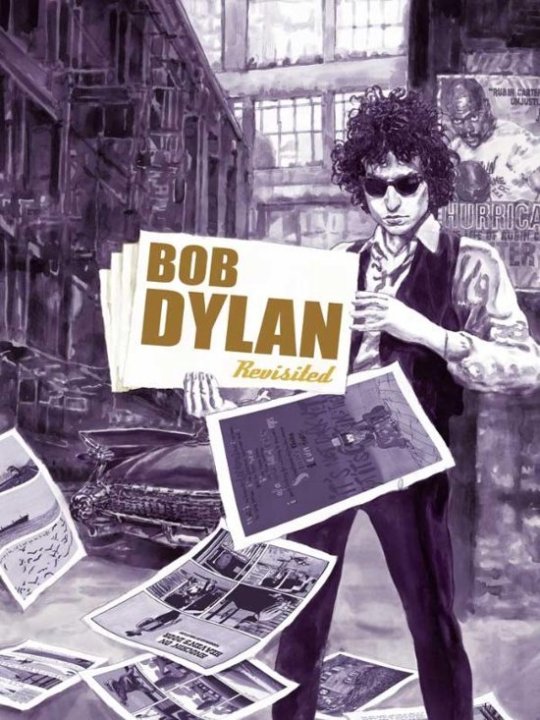
Let’s start with an obvious choice. This is a collection of 13 well-known Dylan Songs, each of them graphically interpreted by a different artist. The most striking feature therefore is the high variety of different art styles. Some of them are cartoony, some are very abstract while others are almost photo realistic.
Dylan’s mesmerizing lyrics have always been inspirational and these beautiful depictions truly are a sight to see.
Including works of Thierry Murat, Lorenzo Mattotti, Nicolas Nemiri, François Avril, Jean-Claude Götting, Christopher, Bézian, Dave McKean, Alfred, Raphaëlle Le Rio, Maël Le Mae, and Henri Meunier, Gradimir Smudju, Benjamin Flao, Jean-Phillippe Bramanti and Zep.
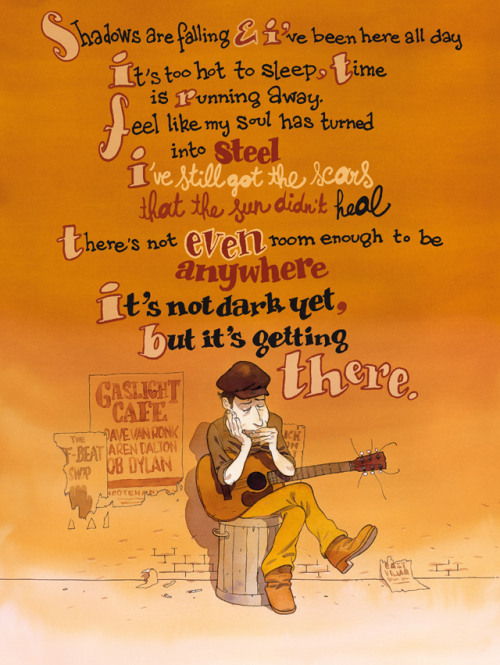
Zep’s take on “Not Dark Yet”
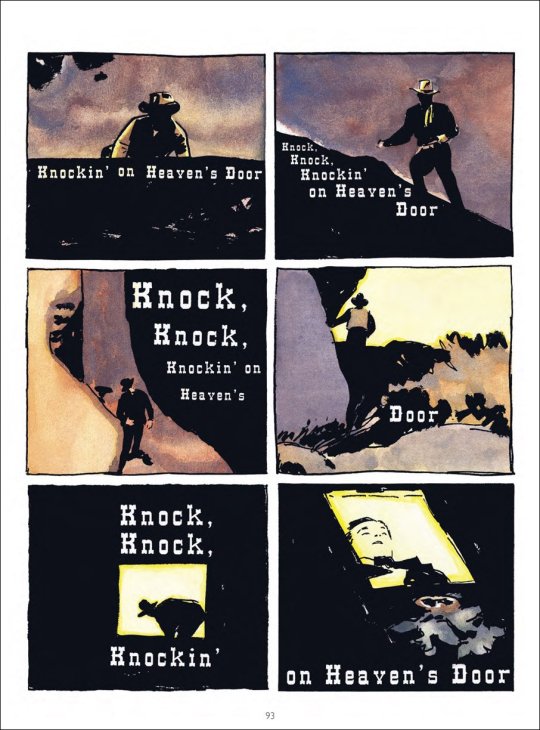
Jean-Phillippe Bramanti’s interpretation of “Knocking On Heaven’s Door”
Definitely worth checking out not only for Bob Dylan Fans.
2. Baby’s In Black” by Arne Bellstorf
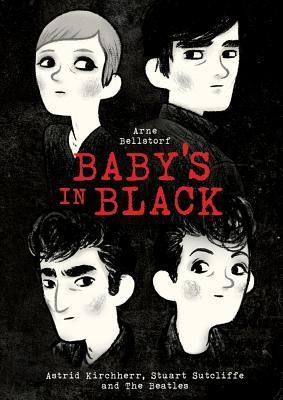
I’ve seen several people in the Beatles fandom complain about the lack of Stuart Sutcliffe material when it comes to early Beatles history.
Well, here it is: a graphic novel that focuses on the relationship between Stuart Sutcliffe and fotographer Astrid Kirchherr who took the very first professional photos of the Beatles during their time in Hamburg (1960-61).
Told mostly from Astrid’s point of view this comic presents itself in a grey and melancholic tone that fits the rather sad story. Bellstorf’s drawings are simplified and charming (they remind me of early sixties children book illustrations which suits the setting’s time period)

If you’re interested in early Beatles history (especially their Hamburg days) you should give this one a try.
3. Blue Monday by Chynna Clugston Flores
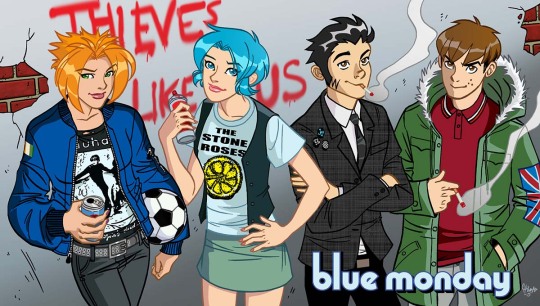
I really wish I had known about this amazing comic series a few years earlier, not only because this is a slice of life/coming of age story with teenage characters who are actually likeable and relateable but also because “Blue Monday” is an overall highly entertaining depiction of early nineties teen culture/rebellion in an American suburb that comes with a lot of references to Britpop, mod culture, Buster Keaton movies and Adam Ant (to name only a few).
To quote the author herself: “It’s like Archie on crack, with cursing and smokes”.
The art style of Chynna Clugston Flores is very vivid and expressive and has a certain stylistic touch of anime/manga (like a lot of comics from the early 2000s). I also really enjoy all of the graphic fashion details in this one. Plus, this is the first comic with it’s own soundtrack and that’s always a nice bonus.
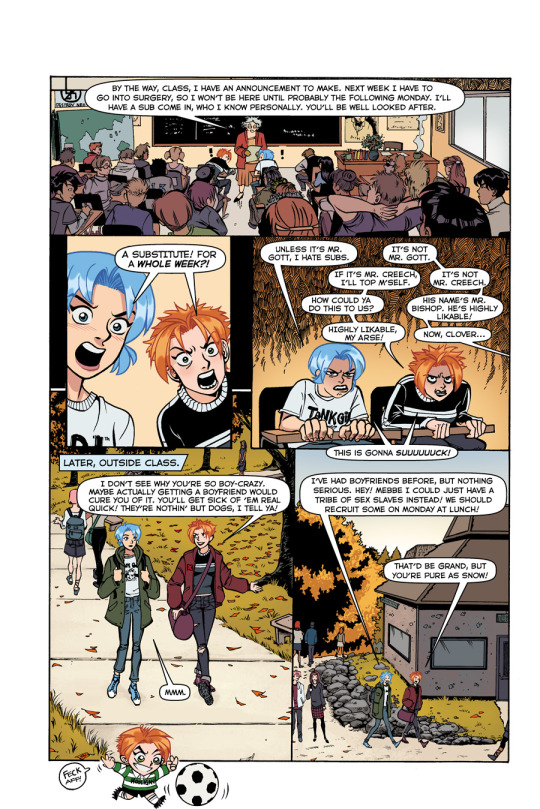
I’d recommend “Blue Monday” for fans of Britpop, Punk, New Wave and early 1990′s culture.
4. Punk Rock And Trailer Parks by Derf Backderf
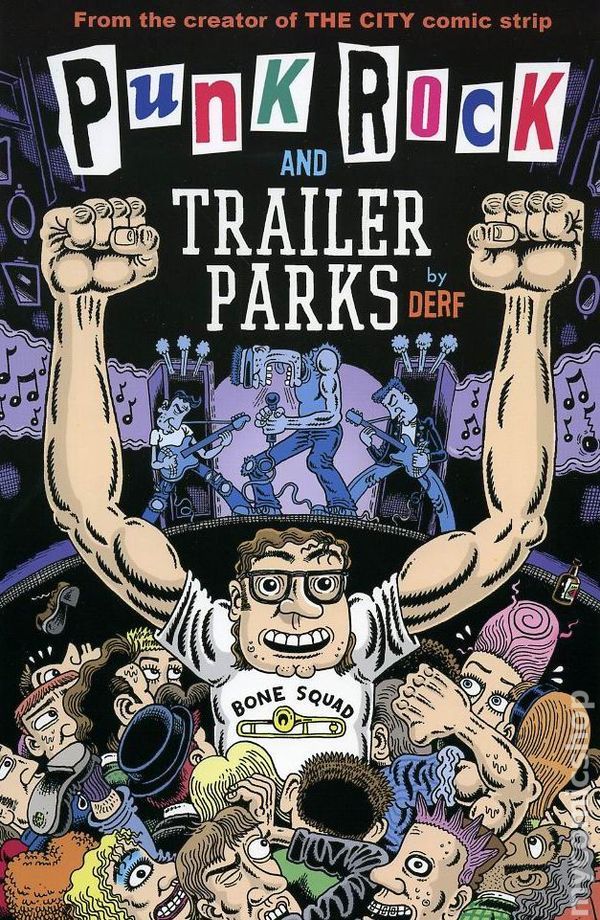
Another story about growing up in American small town madness, this time set in 1980s gritty Punk subculture of the former rubber city of Akron, Ohio. Protagonist Otto who likes to refer to himself as “The Baron” becomes fascinated with Punk after attending a Ramones concert. He meets several Pubk icons (thus as The Clash, The Plasmatics, rock journalist Lester Bangs and many more) and becomes someting of a local punk star himself.
Derf Backderf (who is best known for his highly acclaimed graphic novel “My Friend Dahmer” and his Eisner award winning comic “Trashed”) created a comic that is as “raw and dirty as punk itself”. His art style is an unique combination of expressionism, underground cartoons and punk magazines.
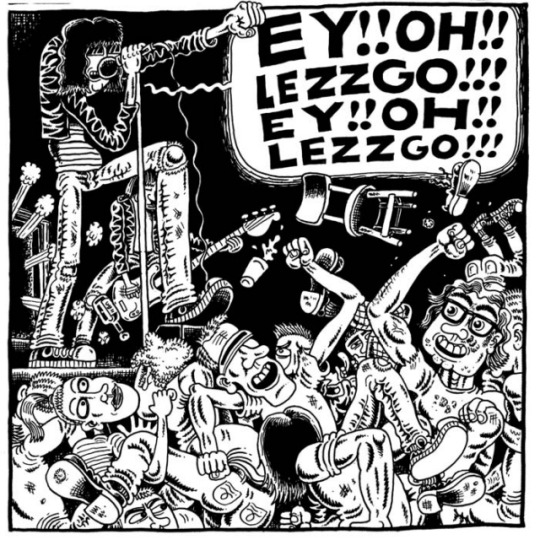
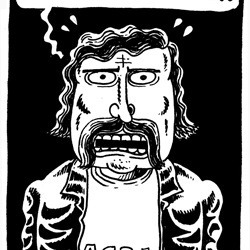
“Punk Rock And Trailer Parks” is a must-have for punk fans (especially if you’re into The Ramones and The Clash. It made me a huge fan of both of them).
5. “CASH - I See A Darkness” and “Nick Cave - Mercy On Me” by Reinhard Kleist

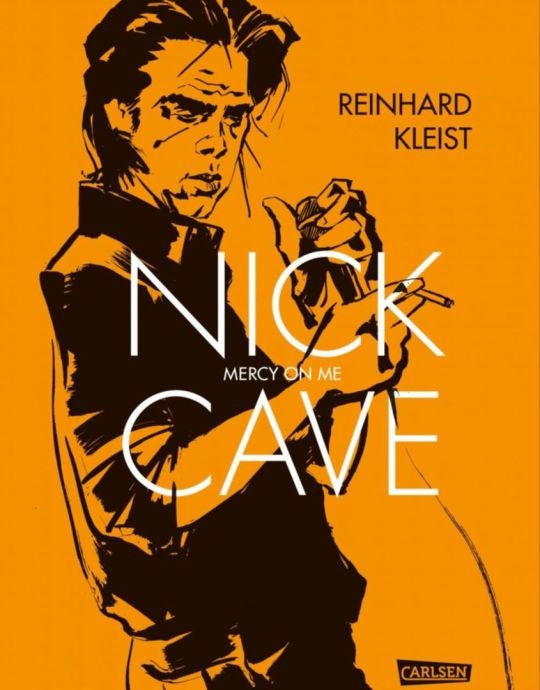
Two biographical graphic novels by Reinhard Kleist, both of them tell the story of a fascinating personality in rock history and both of them are incredibly well drawn. Kleist’s art is full of life and movement and very atmospheric due to his impressive use of stark contrasts.
I personally love his semirealistic way of drawing people and I’d highly suggest you to check out his other works too. He made a lot of biographical comics that really amazed me.
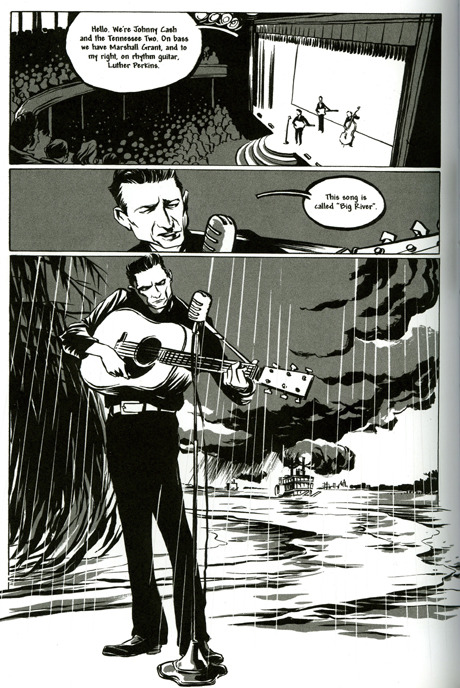
CASH


Cave
Definetly worth reading. Not only for Johnny Cash and Nick Cave fans.
6. Nowhere Men by Eric Stephenson, Nate Bellegarde, Jordie Bellaire and Fonografiks

I talked about this one a while ago but I’ll gladly do it again since it’s just too cool. “Nowhere Men” is set in an alternative past/present and future where scientists became as popular as pop stars (catchphrase “Science is the new Rock n` Roll”) but somewhere along the way something definetly went wrong.
The hype of science shares obvious similarities with the beatlemania of the 60s and the founding of Apple back then. Furthermore, the characters are partly inspired by well-known personalities of Rock history. There are many more or less hidden nods and references to musical popculture wich is why I put it on this list.
Nowhere Men is a thrilling sci-fi dystopian that requires an observant reader because there is a lot of jumping back and forth i time and inbetween information. The art style is realistic and full of very vibrant colours.
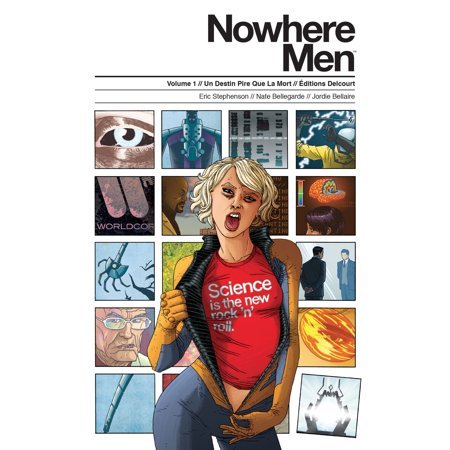
I found myself reading this multiple times to get all of the details in the world building. A thoughtful and brilliant writing indeed.
7. P.I.L. by Mari Yamazaki

Japan 1983: 17-year-old Nanami couldn’t be more frustrated. Her grandfather loves to spend all of their household money on useless luxury junk and her strict school criticizes her messy hairstyle. Caught between teenage rebellion and responsibility as she tries different side jobs to earn at least a little bit of money, Nanami also has a thing for punk music and overall everything originated from England.
P.I.L. tells the story of conflict between two generations who aren’t as different as they might seem. Sometimes funny and heartwarming, sometimes with a bit of drama this is a charming slice of life/ coming of age josei with a more simplistic but aesthetical pleasing art style.
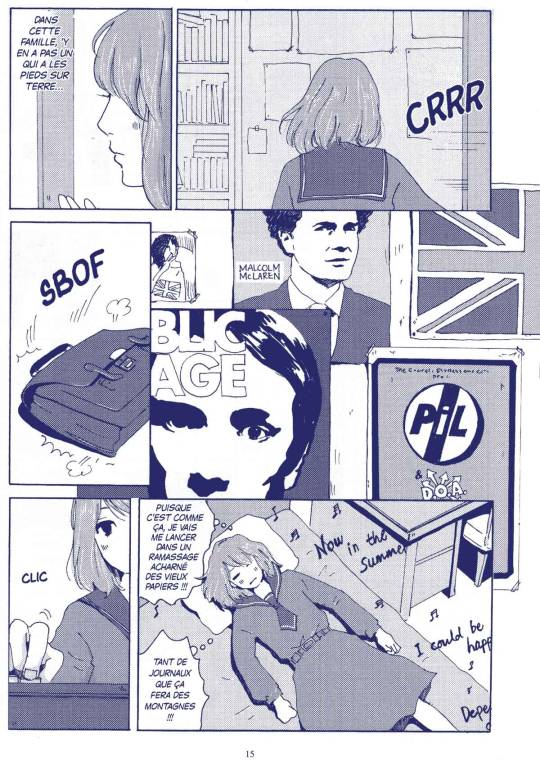
as the title might suggest, Nanami is a big fan of P.I.L. and other bands of the punk, neo punk and new wave movement such as The Stranglers and The Killing Joke
8. Yellow Submarine by Bill Morrison

A comic adaptation of an animated film such as Yellow Submarine? Yeah, I was skeptical at first too but hear me out: This is really great. Morrison did an amazing job at capturing the trippy and psychedelic feeling of the legendary Beatles film. As the 1968 film used the medium of animation as an actual form of art to accomplish things only animation can do, Morrison did the same thing and used the advantages of the comic medium to accomplish things only comics can do. And it works. It really works.
Every single page of this colourful book has a different panel layout. Some of them are so beautiful and creative that I’d love to have a full-size poster version of them :’D

If you liked the film, if you love the psychedelic age, you’ll probably like the comic too.
9. In The Pines by Erik Kriek
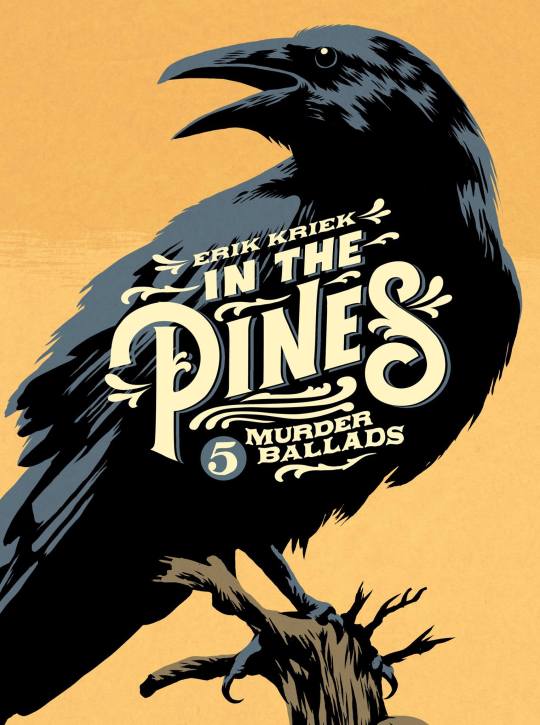
“In the pines, in the pines, where the sun never shines...”
5 Murder Ballads, some might call them dark Country Music, each of them beautifully illustrated by Erik Kriek. Atmospheric, dark and gritty and always on point to match the spine-chilling western-like storytelling of these ballads, great for fans of horror literature a la E.A.Poe.

10. Andy - A Factual Fairy Tale by Typex
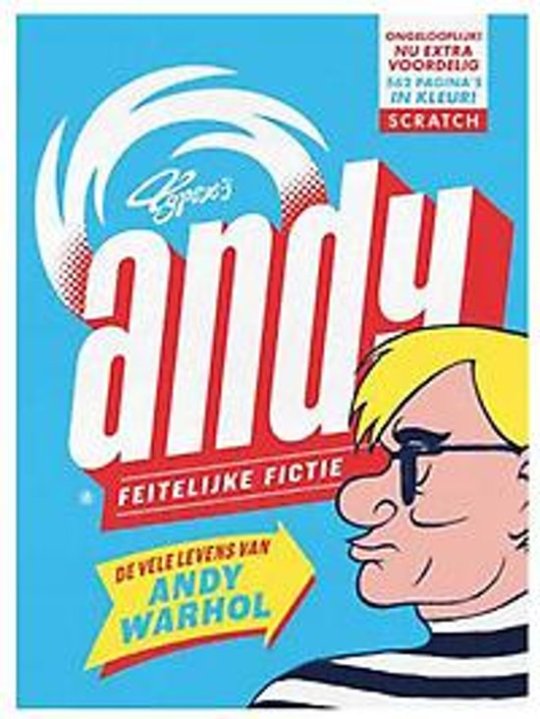
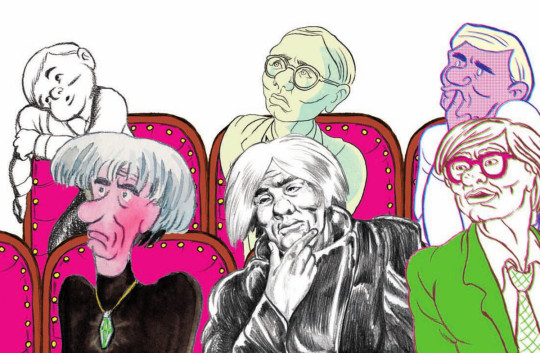
Allright folks this is it:
Typex’s “Andy” is by far one of the best comics/graphic novels I’ve ever red. It defenitely is my personal favourite reading of 2019 (and tbh I kinda doubt anything will top this anytime soon)
This is more than just a biographical take on of the most enigmatic pop-art artists of 20th centuary’s America, this is a portrait of the 20th centuary itself. There are so many references to art, history, literature, music and more that I could fill a book counting them all. And of course this is a monument for the medium of comic itself. Typex really managed to show what comic’s are capable of (At this point I’m really sorry I can’t explain it better I’m not good in writing stuff like this yet...)
Visually one of the most appealing things are the different art styles Typex manages to pull off so well for every chapter in Warhol’s life because each of them are a mirror of their zeitgeist. The introduction of Warhol’s childhood during the 30s is drawn in a cartoony style of old news paper comic strips. The chapter of 1967 has a psychedelic edge. The chapter of the early 60s shows similarities with the works of Roy Liechtenstein
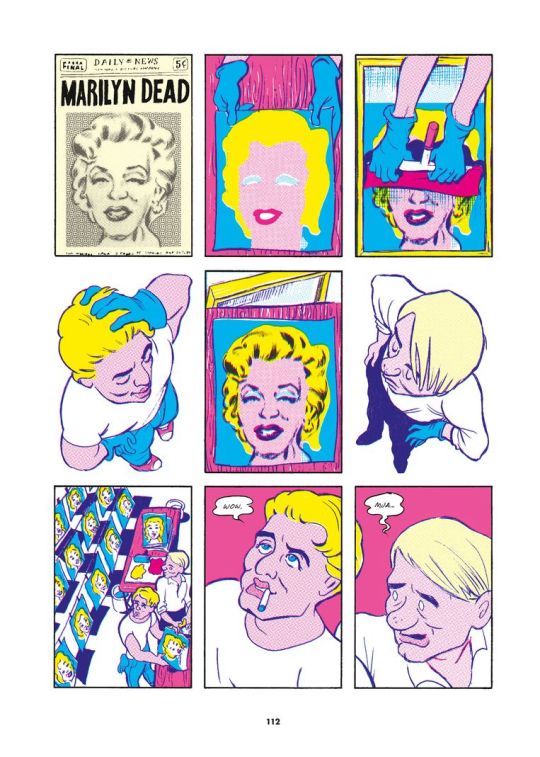
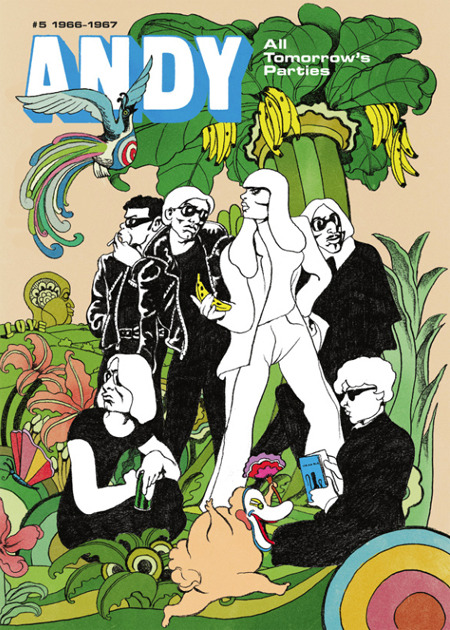
So many icons from the 1930s-1980s have a cameo in this graphic novel it’s just amazing. If you’re even remotely interested in anything of this time period you’d definitely should read this. (seriously, READ THIS). But at this point I’d also like to mention that this comic does not shy away from showing very explicit content and sensetive topics (please keep in mind this has a mature rating for a reason)
Yeah so I couldn’t give this piece of art enough praise. It is absolutely brilliant, a masterpiece in every sense and word.I wasn’t too aware of Typex before but appearentely he also did a graphic novel on Rembrandt. I’m gonna read this too.
Some honorable mentions:
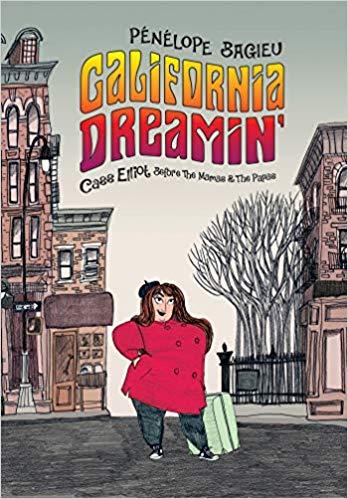
California Dreamin` by Penelope Bagieu
I haven’t red this one yet so I can’t say anything more about it. But I wanted to let you know that a graphic novel about the life of Cass Elliot exists.
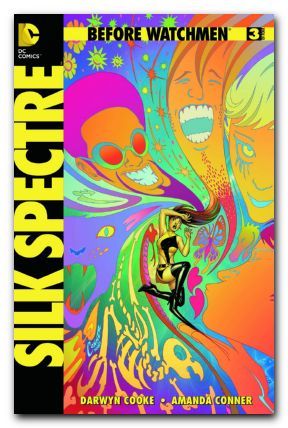
Before Watchmen: Silk Spectre by Darwyn Cooke and Amanda Conner
One of the prequels of the legendary “Watchmen” by Alan Moore and Dave Gibbons. It’ “only” an honorable mention because you’ll have to be familiar with the Watchmen universe to fully get all of the story. This prequel focuses on Laurie Jupeczyk, the second Silk Spectre and her own adventures during 1967, the summer of love in San Francisco.
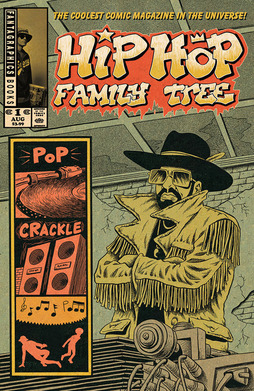
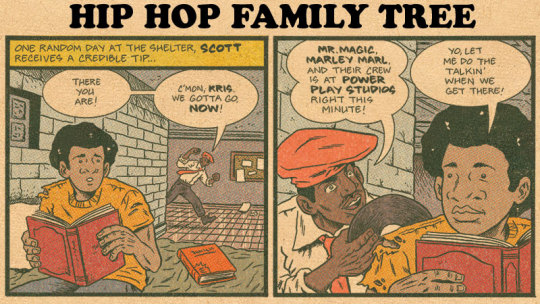
Hip Hop Family Tree by Ed Piskor
Another one I haven’t fully red yet, but so far I’m loving it. It basically tells the history of Rap and Hip Hop from the early 70s to the mid 80s. The art style is intentionally old-school wich really fits it’s tone and setting.
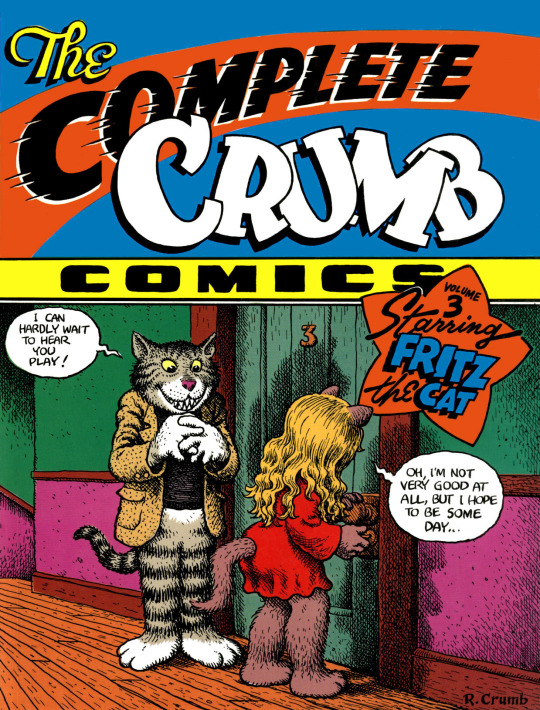
Fritz The Cat by Robert Crumb
I suppose I can’t make a list like this without at least mentioning an absolut icon of the underground comix movement. Crumb created the adventures of this nasty junky cat during the 60s. Fritz can be seen as a satirical mirror of counter-culture’s zeitgeist.
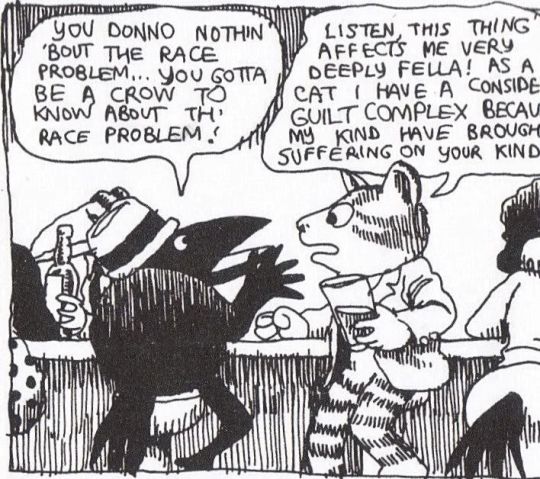
and speaking of Crumb, his “Heroes of Blues, Jazz and Country” trading cards are neat too...

allright that’s it for now. like I said, if you have anymore suggestions, feel free to add ^^
#long post#Cramp talks#classic rock fandom#comic#thierry murat#lorenzo mattotti#nicolas nemiri#francois avril#jean-claude götting#christopher#bezian#dave mckean#alfred#raphaelle le rio#mael le mae#henri meunier#eric stephenson#Nate Bellegarde#jordie bellaire#fonografiks#ed piskor#erik kriek#derf backderf#arne bellstorf#penelope bagieu#mari yamazaki#robert crumb#typex#reinhard kleist#chynna clugston flores
41 notes
·
View notes
Text
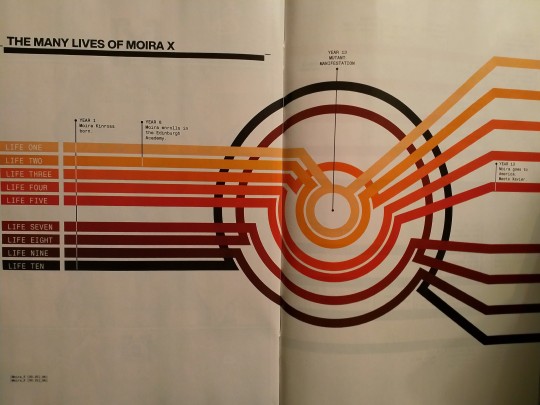
It’s interesting to see Hickman graphics in an X-Men book- I remember the design work of his early Image stuff, but it didn’t really feature much in his work for Avengers as I recall it, so I thought perhaps it wasn’t allowed at Marvel. It is, to be fair, quite a stylistic change from your average House of Ideas aesthetic, but his infographics are all over both House of X and Powers of X, so I guess they aren’t seen as that controversial after all.
What might be controversial is the idea of Moira MacTaggert as a mutant, rather than the human scientist she has been since she was first introduced by Chris Claremont and Dave Cockrum way back in 1975. In the traditional X-Men way, she has since been killed and brought back, so let’s not get too precious about these things- the credibility of X-character continuity was long ago sacrificed on the altar of chasing sales- since it’s interesting to see a ‘lesser’ character revisited, instead of a story attempting to once again revitalise/introduce someone of the Summers or Grey bloodlines, or picking a member of a classic line up to demonstrate how they have been underrated for some 20-50 years, depending on who it is.
Her mutation is also an interesting variation- reincarnating as herself is quite different from the usual power sets we see, much more reminiscent of a literary device than a superhero one, as the character is immortal, but only within her own repeated lifetime, so she revisits the events of her life with an existing awareness of them, and driven by her inner scientist to learn and change things for the better. But this ‘gift’ may not even be immortality- Destiny ominously warns her in one of her incarnations that she has a limited number of reincarnations and she needs to learn what she has to do with her life, or she will die again, painfully, and perhaps never come back to make things right.
This is pretty representative of the fact that Hickman’s X-Men is not exactly stuffed with the action packed mutant drama of your usual X-Event, and it’s a welcome change of pace. The series’s history of regular relaunches with new line ups after some cataclysmic event is quite repetitive when you look back, so this unusual approach of not quite telling us what has happened to the present continuity, while showing past, future and alternative events feels quite fresh, even if it may ultimately have to lead to the traditional slew of new number ones and familiar titles with fresh rosters, but hopefully seeds are being planted here that will also make that feel more new than previous occurences. Maybe, like Moira, the X-Office will learn from its rebirths?
From House Of X 2, by Jonathan Hickman, Pepe Larraz, Matte Gracia & Clayton Cowles
7 notes
·
View notes
Text
Neon Waves and the Unexpected Sound: Readable Noise reviews Riptide Music Festival- Day 1

South Florida’s premiere alternative music festival continues to hit it’s mark in combining the old and new
Fort Lauderdale- FTL has always been a city within a city.
Bordering the Miami gateway and its Northern areas of suburbia, it’s an odd metropolitan escape that has never quite received the note of recognition it deserves. Except for of course, in the arms of its beaches.
Stretching for miles, the solar mirrored sand along the Atlantic is serene as it is comforting, with a State Park nestled almost oddly alongside it. And it’s in this multi leveled plateau that 104.3 The Shark makes it’s home for Riptide Music Festival; South Florida’s only alternative based music festival, following the departure of it’s predecessor, 103.1 The Buzz’s annual Buzz Bake Sale.
The station, started by the former operator of the aforementioned FM local staple, John O’ Connell, is done in good hands and with good intentions; the festival occupying a good stretch and interspersed with two stages in one hand, and a cavalcade of acts in the other including modern staples in the form of The Killers, Silversun Pick-Ups and newcomers, the 1975.

What is so vastly important however, is the reception and welcoming of new acts to the fold; such as White Reaper, who opened the festivities on the Sharkwrecked Main Stage, Friday afternoon.
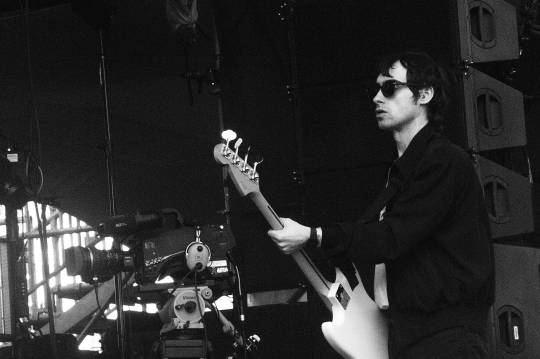
The quartet from Kentucky are an interesting and refreshing mix of The Cars sensibilities, alongside 90’s pop-punk. With tight melodies, and that special thrill that comes from seeing an act fresh not only in their element, but their ambition. It’s something that instantly makes you smile, and happily sway in their sound, with songs rooted in proper composition but with an unexpected, exciting edge to the performance.
It’s an introduction that is not only needed, but necessary in the genre, allowing new blood in as, no pun intended, chumming the water as proof of existence that the genre is still alive and well.

Whether through the open and unique performance of Morgxn, whose infectious smile and honesty in their performance that touched on Southern gospel rock with an Elton John showmanship, or the female version of Rhye’s silky smooth vocals, in the form of DC’s own Shaed; it’s an infusion that leaves you breathless. This is the new class in it’s prime, and just a taste of some of the forms that are to come.

One of those interests being K. Flay. There is an undeniable, enjoyable bite to her tracks, like a flavor you can’t quite describe but enjoy all the same. It’s a feeling that carries into whose live performance, and makes itself more clear. A gritter version of Phantogram’s Sarah Barthel, Flay’s stage presence is electric, opening “Not In California” to an already palpable crowd, she carriers herself in her words, and using that presence as an instrument itself. It’s something wonderful, and a wonderful addition to the start of the festival.

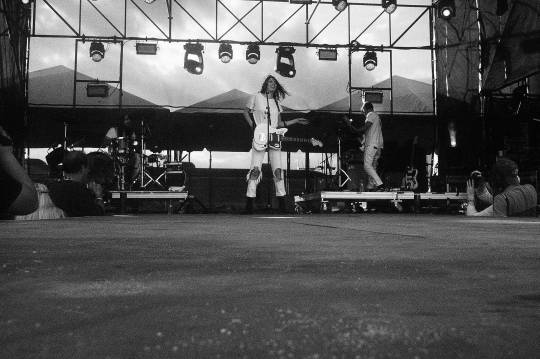
And with the new, so comes due respect to the those that helped pave way to the current path, in the form of Silversun Pick-Ups.
It’s also here, that we unfortunately ran into the sole issue of the ambitious festival and its current venue.


While the experience is rightfully and Thankfully fan friendly, geared with the right intentions (a day out on the Florida sands, with music and good memories in both the sun and moonlit hours), it made behind the scenes work at times, tenuous. Due to the venue itself, and the corporate strings that do follow with more major festivals operated by outside hands, we were unable to watch more than three songs of most of the bands featured in this review, including that of SSPU, Matt Maeson, and all acts throughout Saturday’s festivities as well.

This is not at all to say the fault fell with the behind the scenes crew, who were more than gracious to all reporting on the festival.
However, with tied hands, the opportunity of accurately capturing the tempo, surprises and the elation of both bands and fans present were a bit chaotic at times, given the strict time restraint allowed by higher powers to capture photographic moments. It was truly the only downside of this otherwise truly special music festival.
After all, where else would you find Silversun Pick-Ups, whose glistening opening song “Neon Wound” was met with incredible, and deserved reception from the audience and perfectly cascading into latest “It Doesn’t Matter”, proudly showing the incredible power and chemistry the quartet still have; or The Revivalists, whose Southern honey tinged rock feels as at home on the picture perfect shore as it does in the glades, dancing to their sway of smooth ballads and jam oriented blues?


In that same vein of great surprises featured in this festival, were Judah & The Lion; a Cage The Elephant style of bombast meets Johnny Rotten explosion. With a flurry of strobe lights greeting their arrival, it was an unexpected and special treat to witness, opening with “Pep Talk” and seamlessly crescending into “Quarter Life Crisis”, frontman Brian Macdonald is a powerhouse to watch, and is reminiscent of those legendary live shows.
Their performance was a truly wonderful treat, with tracks that while undeniably smooth, formed like a punk show and leaving the crowd alight with excitement. Nowhere else will you get audio fireworks other than with this sound, and it’s one we were grateful to see for the time we were given to.
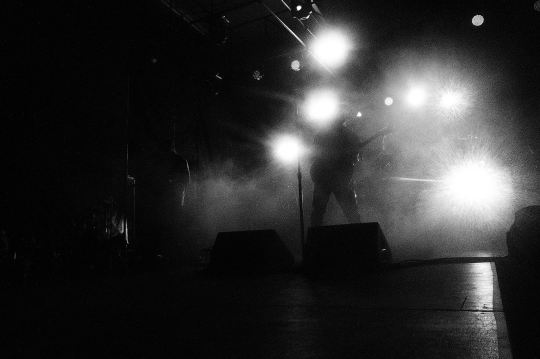

And as the sun set, and the muggy Florida cool of the night set in, the Main Stage crowd began to grow closer in quarters, as the 1975 set the beginning machinations for the final songs of the first night to a frenzied crowd.
It isn’t a stretch to say the fervor attached with the Manchester based group is that of almost reminiscent of The Beatles in the frenetic frenzy that follows them with their audience, which while perhaps surprising at some moments, is not out of the ordinary.

Their digital aesthetic intertwined with modern age love songs are relatable on an odd wavelength, and never left feeling out of place. In addition, their stage performance is electric, with frontman Matthew Healy coming out in full form wearing a Fugazi longsleeve and swinging his mic around as the act performed “Give It A Try”. And while most bands reach for their own brand of identity, as all acts should, it’s extremely rare that a band can actually make their own aesthetic, with a following that actively and appropriately combines photographs of love, heartache and neon with the act’s lyrics; something that the band also do in graphics of vaporwave stylings throughout their performance. Say what you may about the band, who are definitely riding and enjoying their wave, it’s always something special when an act can connect on such a level that sound becomes material.


And it’s on that note that we get to the main headliner for the night, alternative and rock legends, The Killers.
The Las Vegas act first arrived on the scene in 2004 with a then uncarried bombast, catering to a curve no one had quite yet acknowledged, much less heard of. Following in the footsteps of New Order, The Cars and Depeche Mode, it was still a ground less followed as it was sacred.
As it should be, with the new wave acts paving the way for the future, which following the Madchester and deep house tiering, coupled with the arrival of grunge rock and nu-metal, remained a path that seemed to have stopped dead. Enter in the quartet, who not only took back up the mantle, but aimed to become it, releasing “Mr. Brightside” and “Somebody Told Me” with a glamour and decadence not quite Las Vegas, but not quite English either. They were the perfect hybrid of UK arena interspersed with American ambition, and it’s a formula that is still followed today by the band, albeit with a pinch more Springsteen.
As the band open with signature “Jenny Was A Friend Of Mine” if you have followed the band since their debut, it’s a consistent and almost parental wonder to see how far they have come.

As with any band you may have grown up with, there is always that glimmer of wonder; something uncontainable that rises like static electricity after it’s first viewing, or listen. It’s a hard feeling to ensure, time after time and after nearly two decades, their formula is still potent.
With frontman Brandon Flowers coming more into his own, drummer Ronnie Vannucci still being the electrifying mixture of John Bonham meets Keith Moon and even adapting with evolution; allowing guitarist Dave Keuning and bassist Mark Stoermer optional time away from touring while still being part of the experience, something that no band never truly been done before.
It’s a testament to the strength of the act themselves, still able to carry a crowd like absolute ease, performing “The Way It Was” with earnest bombast, and proof of the faith in their tracks. Whereas some acts might choose to leave their hits for the latter part of the set and lure potential new ears into the fold by keeping those immediately recognizable songs to the end, they proudly display it on their sleeve; Flowers leading into “Smile Like You Mean It” with a serene build-up of synths, or even the instant crowd pleaser of “Somebody Told Me”, all with neon graphics accompanying, alongside a glittering assembly of lights, complimenting the show as it’s own type of instrument.

Their regard of the experience to be a apart of the music, giving support to each respective feel is the showmanship of Vegas coming off their sleeves, and it works well.
Including, and most importantly, for the audience themselves, with a recent concert rite of passage that The Killers have started doing at their shows: inviting any potential audience members who dare hold up signs asking to play a track with the band, and honoring that request. Tonight’s aptly named “Victim” was Jayson, a native of Gainesville who accompanied the act on “For Reasons Unknown” and absolutely nail it; mirroring Vannucci’s signature energic frenzy throughout the hills and valleys of the tracks composition, had the crowd chanting following his performance, and deservedly so.
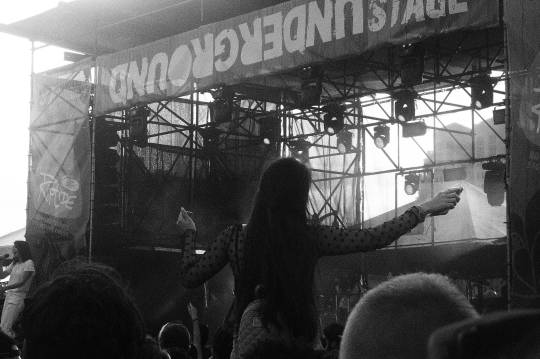
And as the night continued with a spectacular cover of Tom Petty’s “American Girl”, and the act’s own “Run For Cover” you see the Las Vegas act still elicit that same special blend of magic the band have created; raising crowds to an electric level, and bringing the best out of tired feet and glittering eyes. It’s a recipe that’s hard to nail, and even harder to consistently deliver. And as The Killers arrived at their closing track, “Mr. Brightside” (cooly and beautifully split up into half Jacques Lu Cont remix and half original banger), with Flowers remarking earlier in the night the incredible spirit of the tightly packed crowd, promising to return next year, is where you see it.
Underneath the moonlight, and river of lasers and lights the desert act combine into their shows, the heartbeat of a crowd coming together for one more song. Right as the last note plays, and the sand settles once more, that smile starts creeping up without any necessary thought. It’s the strength of music delivered right, in a climate that’s created in the best components. And
Thankfully, bands like those featured today, alongside Riptide itself, are helping to truly keep that feeling alive.
See our exclusive live captures of White Reaper here: https://www.youtube.com/watch?v=ReS-lFOhMAM
And Shaed here: https://www.youtube.com/watch?v=v5aNNCRAvec
(Words and Photos: Jenelle DeGuzman)
#Riptide Music Festival#riptide#the killers#shaed#the revivalists#white reaper#silversun pick-ups#matt maeson#k. flay#judah and the lion#judah & the lion#review#alternative#fort lauderdale#readable noise#fort lauderdale beach#live music
1 note
·
View note
Text
Electronic Music Styles - Electronic Music
Acid Jazz
The music played by a generation raised on jazz as well as funk and hip-hop, Acid Jazz used elements of all three; its existence as a percussion-heavy, primarily live music placed it closer to jazz and Afro-Cuban than any other dance style, but its insistence on keeping the groove allied it with funk, hip-hop, and dance music. The term itself first appeared in 1988 as both an American record label and the title of an English compilation series that reissued jazz-funk music from the ’70s, called “rare groove” by the Brits during a major mid-’80s resurgence. A variety of acid jazz artists emerged during the late ’80s and early ’90s: live bands such as Stereo MC’s, James Taylor Quartet, the Brand New Heavies, Groove Collective, Galliano, and Jamiroquai, as well as studio projects like Palm Skin Productions, Mondo Grosso, Outside, and United Future Organization.
Acid Techno
When the squelch of mid-’80s acid house music was given time to sink into the minds of impressionable youths, they became quite influenced by the sound. Many who began to make music in the early ’90s applied the sound to harder techno instead of the warm sounds of classic Chicago house. Quite similar to early German trance, Acid Techno includes the earlier recordings of Aphex Twin, Plastikman, and Dave Clarke, among others.
Alternative Rap
Alternative Rap refers to hip-hop groups that refuse to conform to any of the traditional stereotypes of rap, such as gangsta, funk, bass, hardcore, and party rap. Instead, they blur genres, drawing equally from funk and pop/rock, as well as jazz, soul, reggae, and even folk. Though Arrested Development and the Fugees managed to cross over into the mainstream, most alternative rap groups are embraced primarily by alternative rock fans, not hip-hop or pop audiences.
Ambient music evolved from the experimental electronic music of ’70s synth-based artists like Brian Eno and Kraftwerk, and the trance-like techno dance music of the ’80s. Ambient is a spacious, electronic music that is concerned with sonic texture, not songwriting or composing. It’s frequently repetitive and it all sounds the same to the casual listener, even though there are quite significant differences between the artists. Ambient became a popular cult music in the early ’90s, thanks to ambient techno artists like the Orb and Aphex Twin.
Ambient Breakbeat
Ambient Breakbeat refers to a narrow subgenre of electronic acts with less energy than the trip-hop or funky breaks, but with a pronounced hip-hop influence to their music. Some of the more downtempo works on British labels like Mo’Wax and Ninja Tune paved the way for New York’s DJ Wally (of the Liquid Sky Records brigade) and British artists such as Req, each good examples of the style.
Ambient Dub
Coined by the Beyond label for its compilation series of the same name, Ambient Dub has since been generalized by artists, critics, and audiences alike to refer to any form of rhythmic, usually beat-oriented ambient using the tastes, textures, and techniques of Jamaican dub-style production (e.g. reverb, emphasis on bass and percussion, heavy use of effects). Although the term has fallen out of favor due to the fevered intermingling of styles characteristic of post-rave electronica, it remains useful in demarcating the denser, more electronic applications of dub from the more hip-hop derived styles of downtempo, atmospheric beat music. Artists include the Orb, Higher Intelligence Agency, Sub Dub, Techno Animal, Automaton, and Solar Quest.
Ambient House
An early categorical marker used to distinguish newer wave ambient artists such as the Orb, the KLF, Irresistible Force, Future Sound of London, and Orbital, Ambient House was often applied indiscriminately to designate dance music not necessarily just for dancing. In its more rigorous application, ambient house implied music appropriating certain primary elements of acid house music-mid-tempo, four-on-the-floor beats; synth pads and strings; soaring vocal samples-used in a dreamier, more atmospheric fashion. It’s since been replaced (or rather, some would argue, complicated) by a barrage of more specific terms and is rarely used.
Ambient Pop
Ambient Pop combines elements of the two distinct styles which lend the blissed-out genre its name-while the music possesses a shape and form common to conventional pop, its electronic textures and atmospheres mirror the hypnotic, meditative qualities of ambient. The mesmerizing lock-groove melodies of Kraut-rock are a clear influence as well, although ambient pop is typically much less abrasive. Essentially an extension of the dream pop that emerged in the wake of the shoegazer movement, it’s set apart from its antecedents by its absorption of contemporary electronic idioms, including sampling, although for the most part live instruments continue to define the sound.
Ambient Techno
A rarefied, more specific reorientation of ambient house, Ambient Techno is usually applied to artists such as B12, early Aphex Twin, the Black Dog, Higher Intelligence Agency, and Biosphere. It distinguished artists who combined the melodic and rhythmic approaches of techno and electro-use of 808 and 909 drum machines; well-produced, thin-sounding electronics; minor-key melodies and alien-sounding samples and sounds-with the soaring, layered, aquatic atmospheres of beatless and experimental ambient. Most often associated with labels such as Apollo, GPR, Warp, and Beyond, the terminology morphed into “intelligent techno” after Warp released its Artificial Intelligence series (although the music’s stylistic references remained largely unchanged).
Bass Music
Springing from the fertile dance scenes in Miami (freestyle) and Detroit (electro) during the mid-’80s, Bass Music brought the funky-breaks aesthetic of the ’70s into the digital age with drum-machine frequencies capable of pulverizing the vast majority of unsuspecting car or club speakers. Early Miami pioneers like 2 Live Crew and DJ Magic Mike pushed the style into its distinctive booty obsession, and Detroit figures like DJ Assault, DJ Godfather, and DJ Bone melded it with techno to create an increasingly fast-paced music. Bass music even flirted with the charts during the early ’90s, as 95 South’s “Whoot (There It Is)” and 69 Boyz’ “Tootsee Roll” both hit the charts and went multi-platinum.
Bhangra started in Northern India, and shows what happens when you blend traditional music with electronic dance sensibilities. It has now spread to other parts of Asia and the UK.
Big Beat
Rescuing the electronica community from a near fall off the edge of its experimental fringe, Big Beat emerged in the mid-’90s as the next wave of big dumb dance music. Regional pockets around the world had emphasized the “less intelligent” side of dance music as early as 1994, in reaction to the growing coterie of chin-stroking intellectuals attached to the drum’n’bass and experimental movements. Big beat as a distinct movement finally coalesced in 1995-96 around two British labels: Brighton’s Skint and London’s Wall of Sound. The former-home to releases by Fatboy Slim, Bentley Rhythm Ace, and Lo-Fidelity Allstars-deserves more honors for innovation and quality, though Wall of Sound was founded slightly earlier and released great singles by Propellerheads, Wiseguys, and Les Rythmes Digitales. Big beat soon proved very popular in America as well, and artists attached to City of Angels Records (the Crystal Method, Überzone, Lunatic Calm, Front BC) gained a higher profile thanks to like-minded Brits. Other than Fatboy Slim, the other superstar artists of big beat were the Chemical Brothers and Prodigy, two groups who predated the style (and assisted its birth). Both the Chemical Brothers and Prodigy were never tight fits either, given productions that often reflected the more intelligent edge of trip-hop, and rarely broke into the mindless arena of true big beat.
The sound of big beat, a rather shameless fusion of old-school party breakbeats with appropriately off-the-wall samples, was reminiscent of house music’s sampladelic phase of the late ’80s as well as old-school rap and its penchant for silly samples and irresistible breaks. Though the sample programming and overall production was leaps and bounds beyond its predecessors, big beat was nevertheless criticized for dumbing down the electronica wave of the late ’90s. Even while recordings by the Chemical Brothers, Prodigy, and Fatboy Slim hit the American charts and earned positive reviews-granted, from rock critics-worldwide, many dance fans rejected the style wholesale for being too reliant on gimmicky production values and played-out samples. Big beat lasted a surprisingly long time, given the restraints of a style reliant on the patience of listeners who’ve heard the same break dozens of times, as well as the patience of DJs to hunt local thrift stores to find interesting samples on old instructional records.
Dance Hall Reggae
This dance music style takes reggae and electrifies it, strips down the beat to the essentials of drums and bass, and adds a vocalist doing rapid-fire “toasting” over the beats. Several pop groups have adopted this style and had hits, but the results are pretty diluted compared to the original.
Dance-Pop
An outgrowth of disco, Dance-Pop featured a pounding club beat framing simple, catchy melodies closer to fully-formed songs than pure dance music. It’s primarily the medium of producers, who write the songs and construct the tracks, picking an appropriate vocalist to sing the song. These dance divas become stars, but frequently the artistic vision is the producer’s. Naturally, there are some major exceptions-Madonna and Janet Jackson have had control over the sound and direction of their records-but dance-pop is music that is about image, not substance.
Dark Ambient
Brian Eno’s original vision of ambient music as unobtrusive musical wallpaper, later fused with warm house rhythms and given playful qualities by the Orb in the ’90s, found its opposite in the style known as Dark Ambient. Populated by a wide assortment of personalities-ranging from aging industrial and metal experimentalists (Scorn’s Mick Harris, Current 93’s David Tibet, Nurse with Wound’s Steven Stapleton) to electronic boffins (Kim Cascone/PGR, Psychick Warriors Ov Gaia), Japanese noise artists (K.K. Null, Merzbow), and latter-day indie rockers (Main, Bark Psychosis)-dark ambient features toned-down or entirely missing beats with unsettling passages of keyboards, eerie samples, and treated guitar effects. Like most styles related in some way to electronic/dance music of the ’90s, it’s a very nebulous term; many artists enter or leave the style with each successive release.
Detroit Techno
Early Detroit Techno is characterized by, alternately, a dark, detached, mechanistic vibe and a smooth, bright, soulful feel (the latter deriving in part from the Motown legacy and the stock-in-trade between early techno and the Chicago-style house developing simultaneously to the southwest). While essentially designed as dance music meant to uplift, the stark, melancholy edge of early tracks by Cybotron, Model 500, Rhythm Is Rhythm, and Reese also spoke to Detroit’s economic collapse in the late ’70s following the city’s prosperous heyday as the focal point of the American automobile industry.
The music’s oft-copied ruddy production and stripped-down aesthetic were largely a function of the limited technology available to the early innovators (records were often mastered from two-track onto cassette). The increasingly sophisticated arrangements of contemporary techno (on through to hardcore and jungle), conversely, has much to do with the growth and increasing affordability of MIDI-encoded equipment and desktop digital audio. Second- and third-wave Detroit techno, too, has gained considerably in production, although artists such as Derrick May, Juan Atkins, and Kenny Larkin have sought to combine the peerless sheen of the digital arena with the compositional minimalism of their Detroit origins.
No longer simply contained within the 313 area code, Detroit techno has become a global phenomenon (partly as a result of the more widespread acclaim many of the original Detroit artists have found in other countries), buoyed by the fact that many of the classic early tracks remain in print (available through Submerge). Detroit’s third wave began re-exploring the aesthetic commitment of the music’s early period, with hard-hitting beats (Underground Resistance, Jeff Mills), soulful grooves (Kenny Larkin, Stacey Pullen), and a renewed interest in techno’s breakbeat roots (Aux 88, Drexciya, “Mad” Mike, Dopplereffekt).
Disco marked the dawn of dance-based popular music. Growing out of the increasingly groove-oriented sound of early ’70s and funk, disco emphasized the beat above anything else, even the singer and the song. Disco was named after discotheques, clubs that played nothing but music for dancing. Most of the discotheques were gay clubs in New York, and the DJs in these clubs specifically picked soul and funk records that had a strong, heavy groove. After being played in the disco, the records began receiving radio play and respectable sales. Soon, record companies and producers were cutting records created specifically for discos. Naturally, these records also had strong pop hooks, so they could have crossover success. Disco albums frequently didn’t have many tracks-they had a handful of long songs that kept the beat going. Similarly, the singles were issued on 12″ records, which allowed for extended remixes. DJs could mix these tracks together, matching the beats on each song since they were marked with how fast they were in terms of beats per minute. In no time, the insistent, pounding disco beat dominated the pop chart, and everyone cut a disco record, from rockers like the Rolling Stones and Rod Stewart to pop acts like the Bee Gees and new wave artists like Blondie. There were disco artists that became stars-Donna Summer, Chic, the Village People, and KC & the Sunshine Band were brand names-but the music was primarily a producer’s medium, since they created the tracks and wrote the songs. Disco lost momentum as the ’70s became the ’80s, but it didn’t die-it mutated into a variety of different dance-based genres, ranging from dance-pop and hip-hop to house and techno.
Downbeat is a quite generic term sometimes used to replace ambient house and ambient techno, considering that the amount and complexity of electronic listening music described under the “ambient” umbrella had made the terms practically useless by the mid-’90s. It often implies the use of moderate breakbeats instead of the steady four-four beats of most ambient house or ambient techno. The style also breaches territory claimed by trip-hop, ambient techno, and electro-techno. In its widest possible definition, downbeat is any form of electronic music created for the living room instead of the dance floor.
Dream-Pop
Dream Pop is an atmospheric subgenre of alternative rock that relies on sonic textures as much as melody. Dream pop often features breathy vocals and processed, echo-laden guitars and synthesizers. Though the Cocteau Twins, with their indecipherable vocals and languid soundscapes, are frequently seen as the leaders of dream pop, the genre has more stylistic diversity than their slow, electronic textures. Dream pop also encompasses the post-Velvet Underground guitar rock of Galaxie 500, as well as the loud, shimmering feedback of My Bloody Valentine. It is all tied together by a reliance on sonic texture, both in terms of instruments and vocals.
Dub derives its name from the practice of dubbing instrumental, rhythm-oriented versions of reggae songs onto the B-sides of 45 rpm singles, which evolved into a legitimate and accepted style of its own as those re-recordings became forums for engineers to experiment with the possibilities of their mixing consoles. The practice of re-recording reggae tracks without vocals dated back to 1967, when DJs found that dancehall crowds and partygoers greatly enjoyed being given the opportunity to sing the lyrics themselves. Around 1969, some DJs began talking, or “toasting,” over these instrumentals (known as “versions”), frequently reinterpreting the already familiar original lyrics. The most important early DJ was U-Roy, who became renowned for his ability to improvise dialogues with the recorded singers; U-Roy ran the sound system owned by engineer King Tubby, who mixed all of the instrumental tracks over which his DJ toasted. Eventually, Tubby began to experiment with remixing the instrumental tracks, bringing up the level of the rhythm section, dropping out most or all of the vocals, and adding new effects like reverb and echo. The results were seen by many reggae fans as stripping the music down to its purest essence. 45-rpm singles with dub versions on the B-sides became ubiquitous, and King Tubby’s credit on the back soon became a drawing card in and of itself. Full-fledged dub albums began to appear in 1973, with many highlights stemming from Tubby’s mixes for producers Bunny Lee and Augustus Pablo (the latter of whom also played the haunting melodica, which became one of dub’s signature added elements); other key early producers included the minimalistic Keith Hudson and the colorful, elaborate Lee “Scratch” Perry. By 1976, dub’s popularity in Jamaica was second only to Rastafarian roots reggae, and the sound had also found acceptance the UK (thanks largely to the Island label), where roots reggae artists like Burning Spear and Black Uhuru became just as well-known for their forays into dub. The Mad Professor and the experimental Adrian Sherwood helped Britain’s dub scene remain vital in the ’80s, but in spite of skilled newcomers like Scientist, Prince Jammy, and Mikey Dread, Jamaican popular taste had by then shifted to DJ toasters and lyrical improvisers, which led to the prominence of dancehall and ragga. The downtempo atmospherics and bass- and rhythm-heavy textures of dub had a lasting influence outside of reggae, beginning with Public Image Ltd.’s 1979 Metal Box/Second Edition album; during the ’90s, dub was frequently incorporated into the melting-pot eclecticism of underground avant-garde rock, and Britain’s thriving electronica/drum’n’bass scene owed a great deal to dub’s mixing and production techniques.
Blending ’70s funk with the emerging hip-hop culture and synthesizer technology of the early ’80s produced the style known as Electro. But what seemed to be a brief fad for the public-no more than two or three hits, including Afrikaa Bambaataa’s “Planet Rock” and Grandmaster Flash’s “The Message,” neither of which made the pop Top 40-was in fact a fertile testing ground for innovators who later diverged into radically different territory, including Dr. Dre (who worked with the World Class Wreckin’ Cru) and techno godfather Juan Atkins (with Cybotron). Electro also provided an intriguing new direction for one of the style’s prime influences. Herbie Hancock, whose 1973 Headhunters album proved a large fusion hit, came storming back in 1983 with the electro single “Rockit.” Despite its successes (documented in full on Rhino’s four-disc Electric Funk set), the style was quickly eclipsed by the mid-’80s rise of hip-hop music built around samples (often from rock records) rather than musical synthesizers. Nevertheless, many techno and dance artists continued harking back to the sound, and a full-fledged electro revival emerged in Detroit and Britain during the mid-’90s.
Electro-Acoustic
Electro-Acoustic music thrives in more unfamiliar territory; the styles that emerge are often dictated by the technology itself. Rather than sampling or synthesizing acoustic sounds to electronically replicate them, these composers tend to mutate the original timbres, sometimes to an unrecognizable state. True artists in the genre also create their own sounds (as opposed to using the preset sounds that come with modern synthesizers). In progressive electro-acoustic music, the electronics play an equal if not greater part in the overall concept. Acoustic instruments performed in real time are usually processed through reverb, harmonizing, and so on, which adds an entirely new dimension to the player’s technique. At best, this music opens up new worlds of listening, thinking, and feeling. At worst, progressive electronic artists worship technology for its own sake, relinquishing the heart and soul of true artistic expression.
Electro-Techno
Influenced by the early-’80s phenomenon of electro-funk but also reliant upon Detroit techno and elements of ambient house, Electro-Techno emerged in the mid-’90s when a full-fledged electro flashback hit London clubs, complete with body-rocking robots and vocoder-distorted vocals, inspired by original electro classics like Afrikaa Bambaataa’s “Planet Rock.” The actual fad-spearheaded by Clear Records and led by artists like Jedi Knights, Tusken Raiders, and Gescom (masks for Global Communication, µ-Ziq, and Autechre, respectively)-was quick in passing, but it inspired some excellent music during the latter half of the ’90s, including the work of England’s Skam Records, Sweden’s Dot Records and, closer to the original sources, Detroit’s Drexciya and AUX 88.
Electronic is a broad designation that could be construed to cover many different styles of music-after all, electronic instrumentation has become commonplace, and much dance-oriented music from the late ’80s on is primarily, often exclusively, electronic. However, in this case, it refers mostly to electronic music as it took shape early on, when artists were still exploring the unique possibilities of electronically generated sound, as well as more recent music strongly indebted to those initial experiments. Avant-garde composers had long been fascinated with the ways technology could be used to produce previously unheard textures and combinations of sounds. French composer Edgard Varèse was a pioneer in this field, building his own electronic instruments as early as the 1920s and experimenting with tape loops during the ’50s. Varèse’s work was hugely influential on American avant-gardist John Cage and German composer Karlheinz Stockhausen, both of whom greatly expanded the compositional structures in which electronic devices could be incorporated. But electronic music didn’t really begin to enter the wider consciousness until around the ’70s, when sequencers and synthesizers became more affordable and easier to obtain. Wendy Carlos’ 1968 Switched-On Bach album, a selection of Bach pieces performed on the Moog synthesizer, had ignited tremendous public attention, and Stockhausen’s teachings had begun to inspire a burgeoning experimental music scene in Germany. Kraut-rock groups such as Can and Neu! integrated synthesizers and tape manipulations into their rabid experimentalism, but the two most important electronic artists to emerge from the scene were Kraftwerk and Tangerine Dream. Kraftwerk pioneered the concept of pop music performed exclusively on synthesizers, and their robotic, mechanical, hypnotic style had a tremendous impact on nearly all electronic pop produced in the remainder of the 20th century. Tangerine Dream, meanwhile, was indebted to minimalist classical composition, crafting an atmospheric, slowly shifting, trance-inducing sound that helped invent the genre known as space music. Other crucial figures included Klaus Schulze, who explored a droning variation on space music that was even more trancelike than Tangerine Dream, and Brian Eno, whose inventive production and experiments with electronics in a pop context eventually gave way to his creation of ambient music, which aimed to blend thoroughly into its environment and often relied heavily on synthesizers. Ambient and space music helped give rise to new age, which emphasized the peaceful, soothing, and meditative qualities of those influences while adding greater melodicism; the progressive electronic branch of new age crafted a more dramatic, lushly orchestrated style that broke with electronic music’s roots in minimalism. Synth-pop, techno, and its artier companion electronica all owed a great deal to the basic innovations of early electronic artists as well.
A suitably vague term used to describe the emergence of electronic dance music increasingly geared to listening instead of strictly dancing, Electronica was first used in the title of a series of compilations (actually called New Electronica) spotlighting original sources of Detroit techno such as Juan Atkins and Underground Resistance alongside European artists who had gained much from the Motor City’s futuristic vision for techno. The word was later appropriated by the American press as an easy catch-all for practically any young artist using electronic equipment and/or instruments, but electronica serves to describe techno-based music that can be used for home listening as well as on the dance floor (since many electronica artists are club DJs as well).
Euro-Dance
Euro-Dance refers to a specific style of club/dance music produced on the European continent during the ’80s and ’90s. Euro-dance is generally informed by disco, hi-NRG, and house music, and performed entirely in the recording studio on synthesizers and drum machines; the producers are much more responsible for the finished product than the singers. Like its close relative Euro-pop, it’s usually simple, lightweight, and catchy, with fluffy, repetitive lyrics that don’t require much translation among listeners who speak different languages. The main difference between Euro-dance and Euro-pop is the exclusive and pronounced dance-club orientation of the former; while Euro-pop is frequently informed by dance music, it doesn’t have to be, and when it is, it doesn’t always fit into dance-club playlists. Most Euro-dance artists concentrate on crafting hit singles, with album releases almost an afterthought.
Experimental Dub
Thousands of miles away from sunny Jamaica, a loose collective of Berlin producers jump-started the style of music known as Experimental Dub. If the scene was centered at all, it occurred at Hard Wax Records, a record store as well as a tight distribution company that was home to several of the style’s crucial labels (Basic Channel, Chain Reaction, Imbalance) and producers (Maurizio, Mark Ernestus, Porter Ricks, Pole, Monolake). Indebted to Chicago acid house and minimalist Detroit techno figures like Jeff Mills, Rob Hood, and Plastikman, experimental dub was rather easily characterized; the sound usually focused on a mix of crackling, murky atmospheres that sounded almost subaquatic, with a mid-tempo beat and strong, clanging percussion. The similarities to classic Jamaican dub producers King Tubby and Lee “Scratch” Perry were indirect at best, but the term worked well for identifying the signature sound of many of Germany’s best experimental producers. Other than the Basic Channel camp, experimental dub’s most important figures were Mike Ink (aka Wolfgang Voigt) and Thomas Brinkmann. Ink, a longtime Berlin producer responsible for more than a half-dozen aliases and labels, did most of his important work on the Profan and Studio 1 labels. Brinkmann, a comparative newcomer to the style, earned praise for his remixes of material by Ink and Plastikman. Experimental dub, in turn, inspired several major techno figures (including Plastikman and Mills) by the late ’90s, and its influence was even seen in American indie-rock and post-rock.
Experimental Electro
With the revival of the classic electro style, dubbed the neo-electro movement, came a wave of Experimental Electro artists with more abstract agendas, still influenced by the sound of the streets but with more curious minds when it came to noodling around in the studio. Names such as Freeform and Bisk characterized the style.
Experimental Rock
As the name suggests, Experimental Rock is music pushing the envelope of the form, far removed from the classic pop sensibilities of before. Typically, experimental rock is the diametric opposite of standard “verse-chorus-verse” music. Because the whole point is to liberate and innovate, no hard and fast rules apply, but distinguishing characteristics include improvisational performances, avant-garde influences, odd instrumentation, opaque lyrics (or no lyrics at all), strange compositional structures and rhythms, and an underlying rejection of commercial aspirations.
Experimental Techno
The field of electronic dance music has limitless possibilities for experimentation, so Experimental Techno has a similarly wide range of styles-from the disc-error clicks and scratches of European experimenters Oval and Pan sonic to the off-kilter effects (but straight-ahead rhythms) of Cristian Vogel, Neil Landstrumm, and Si Begg. Experimental techno can also include soundscape terrorists such as Twisted Science, Nonplace Urban Field, and Atom Heart; digital-age punks like Alec Empire; and former industrial stalwarts under new guises, such as Scorn, Download, or Techno Animal. Any artist wishing to take electronic dance places it’s never been can be characterized as experimental, and for better or worse, that includes a large cast.
Often growing in tandem with contemporary styles like electro and house, Freestyle emerged in the twin Latin capitals of New York City and Miami during the early ’80s. Freestyle classics like “I Wonder If I Take You Home” by Lisa Lisa & Cult Jam, “Let the Music Play” by Shannon, and “Party Your Body” by Stevie B relied on angular, synthesized beats similar to electro and early house, but also emphasized the romantic themes of classic R&B and disco. The fusion of mechanical and sensual proved ready for crossover during the period, and both Shannon and Lisa Lisa hit the Top 40 during 1984-85. Freestyle also dovetailed nicely with the rise of dance-pop during the mid-’80s-Madonna’s early producer and remixer, John Benitez (aka Jellybean), was also active in the freestyle community. By the end of the decade, a number of artists-Exposé, Brenda K. Starr, Trinere, the Cover Girls, India, and Stevie B-followed them into the pop or R&B charts. Even after popular success waned in the late ’80s, though, freestyle moved to the underground as a vital stream of modern dance music alongside house, techno, and bass music. Similar to mainstream house, freestyle artists are usually (though by no means exclusively) either female vocalists or male producers. Newer figures like Lil Suzy, George Lamond, Angelique, Johnny O, and others became big stars in the freestyle community.
Funky Breaks
An amalgam of trance, hip-hop, and jungle, Funky Breaks became one of the most widely heard styles in electronic music thanks to its popularity as the sound of choice for those wishing to make some noise on pop charts and television commercials during the late ’90s. Pioneered by the Chemical Brothers plus James Lavelle’s epic-stature Mo’Wax Records stable, funky breaks really came into the fore in 1997, the year music-industry experts predicted would finally break the new electronica in the mainstream. Of the artists picked to spearhead the revolution, almost all-the Prodigy, Death in Vegas, the Crystal Method, Propellerheads-had that sound. That’s also a significant reason why the electronica revolution failed, at least commercially, since the highly-touted acts all sounded similar.
Most popular in the Netherlands and Scotland, Gabba is the hardest form of hardcore techno, frequently exceeding speeds of over 200 BPM. Popular DJs and producers like Paul Elstak and the Mover categorized gabba’s early evolution from German trance and British rave. By the mid-’90s, the music had acquired some rather unsavory connotations with neo-fascism and the skinhead movement, though much of the scene was free from it. Surprisingly, gabba made a rather successful attempt at the Dutch pop charts, with Elstak producing several hits. Many producers and fans proclaimed him a sell-out, and soon there appeared a divide in the scene between the hardcore and the really hardcore.
Named for what is arguably the birthplace of house music, the Paradise Garage in New York, Garage is the dance style closest in spirit and execution to the original disco music of the ’70s. Favoring synthesizer runs and gospel vocals similar to house music but with production values even more polished and shimmering than house, garage has a very soulful, organic feel. Though the style was most popular in New Jersey in the ’80s, the mainstream of British dance clubs championed the style throughout the ’90s as well.
Goa Trance
Named after a region on the coast of southwestern India famed as a clubbing and drugging paradise ever since the ’60s, Goa Trance broke away from the Teutonic bent of European trance during the early ’90s and carried the torch for trance during the rest of the decade. The presence of LSD on the Goa scene-instead of the ubiquitous club drug Ecstasy-translated the music into an appropriately psychedelic version of trance that embraced the mystical properties of Indian music and culture. Traditional Indian instruments such as the sitar and sarod (or electronic near-equivalents) often made appearances in the music, pushed along by the driving, hypnotic sequencer music that trance had always been known for. The style is considerably less turntable-oriented than other electronic dance styles, especially since vinyl tends to melt in the heat (DATs are often used instead). As a consequence, Goa had comparatively few DJs to recommend it worldwide until the late ’90s. Labels like Dragonfly, Blue Room Released, Flying Rhino, Platipus, and Paul Oakenfold’s Perfecto Fluoro became important sources for the sound. Oakenfold, Britain’s most popular DJ, finally gave Goa trance the cache it had lacked in the past by caning it on the radio and in clubs across the country. The British sound system known as Return to the Source also brought Goa trance to the mainstream hordes, releasing three volumes in a compilation series of the best trance music on the scene.
Happy Hardcore
Gradually evolving from the English rave scene of the late ’80s and early ’90s, Happy Hardcore featured many of the same elements that characterized rave: impossibly high beats per minute, similarly fast synthesizer/piano runs, and vocal samples altered to make the most soulful diva sound like a warbling chipmunk. The jungle/drum’n’bass movement had also emerged from rave, but the two scenes split and grew quite anathemic. The positive vibes of happy hardcore were criticized by most clubgoers as music for the drugged-out youth, but just as the hardcore-into-jungle scene found favor with critics later in the decade, a certain amount of respect for happy hardcore appeared as well. The work of combination DJ/producers such as Slipmatt, Hixxy & Sharkey, Force & Styles, and DJ Dougal produced innumerable compilations, as well as the inevitable solo production LPs.
Hardcore Techno
The fastest, most abrasive form of dance music currently available at any one time, Hardcore Techno was, by the mid-’90s, the province of a startlingly wide array of producers, including breakbeat junglists, industrial trancesters, digital-era punks, and cartoonish ravers. The style originally emerged from Great Britain’s 1988 Summer of Love; though the original soundtrack to those warehouse parties was influenced by the relatively mid-tempo rhythms of Chicago acid house, increased drug intake caused many ravers to embrace quicker rhythms and altogether more frenetic forms of music. Many DJs indulged their listeners by speeding up house records originally intended for 33-rpm play, and producers carried the torch by sampling the same records for their releases. During 1991-92, hardcore/rave music had hit the legitimate airwaves as well, led by hits like SL2’s “On a Ragga Tip,” T-99’s “Anasthasia,” and RTS’ “Poing.”
The resulting major-label feeding frenzy produced heavy coverage for lightweight novelty fare like “Go Speed Go” by Alpha Team, “Sesame’s Treat” by Smart E’s, and “James Brown Is Dead” by L.A. Style. By 1993, British producers like Rob Playford, 4 Hero, and Omni Trio began leading hardcore techno into the breakbeat territory that would later become known as jungle, even as the Teutonic end of hardcore morphed into harder trance and gabba.
During the mid-’90s, most ravers had grown out of the dance scene or simply tired of the sound; though the original hardcore/rave sound had spread to much of the British hinterlands as well as continental Europe, most Londoners favored progressive house or the emerging ambient techno. The simultaneous lack of critical coverage but wide spread of the sound-into the north of England and Scotland as well as the continental centers of Germany and the Netherlands-served to introduce a variety of underground styles, from the digital hardcore of Germany’s Alec Empire to English happy hardcore. In fact, the term had practically become a dinosaur by the end of the decade.
Hi-NRG
Hi-NRG is a fast variation of disco that evolved in the ’80s. Driven by a fast drum machine and synthesizers, Hi-NRG was essentially a dance-oriented music with only slight hints of pop. There would be a few hooks-generally sung by disembodied vocalists wailing in the background-but the emphasis of the music, like most dance music, was in the beat. Hi-NRG was a predecessor to techno and house, which drew from its beats in decidedly different ways. House had a funkier, soulful rhythm, while techno expanded with the mechanical beats of Hi-NRG.
Hip-Hop
Hip-hop is essentially the rhythm track to rap, which meanders at a relatively slow tempo, and features a minimalist collection of samples, loops, and/or turntable playing. The emphasis is definitely on the bass, with fat, thick drum beats. Groups like Public Enemy took hip-hop beats but added raps with more of a political, literate edge.
House music grew out of the post-disco dance club culture of the early ’80s. After disco became popular, certain urban DJs-particularly those in gay communities-altered the music to make it less pop-oriented. The beat became more mechanical and the bass grooves became deeper, while elements of electronic synth-pop, Latin soul, dub reggae, rap, and jazz were grafted over the music’s insistent, unvarying four-four beat. Frequently, the music was purely instrumental and when there were vocalists, they were faceless female divas that often sang wordless melodies. By the late ’80s, house had broken out of underground clubs in cities like Chicago, New York, and London, and had begun making inroads on the pop charts, particularly in England and Europe but later in America under the guise of artists like C+C Music Factory and Madonna. At the same time, house was breaking into the pop charts; it fragmented into a number of subgenres, including hip-house, ambient house, and most significantly, acid house (a subgenre of house with the instantly recognizable squelch of Roland’s TB-303 bass-line generator). During the ’90s, house ceased to be cutting-edge music, yet it remained popular in clubs throughout Europe and America. At the end of the decade, a new wave of progressive house artists including Daft Punk, Basement Jaxx, and House of 909 brought the music back to critical quarters with praised full-length works.
A loaded term meant to distinguish electronic music of the ’90s and later that’s equally comfortable on the dancefloor as in the living room, IDM (Intelligent Dance Music) eventually acquired a good deal of negative publicity, not least among the legion of dance producers and fans whose exclusion from the community prompted the question of whether they produced stupid dance music. Born in the late ’80s, the sound grew out of a fusion between the hard-edged dance music heard on the main floor at raves and larger club events, and the more downtempo music of the nearby chill-out rooms. DJs like Mixmaster Morris and Dr. Alex Paterson blended Chicago house, softer synth-pop/new wave, and ambient/environmental music, prompting a wave of producers inspired by a variety of sources. (Many DJs and producers were also reacting against the increasingly chart-leaning slant of British dance music during those years, exemplified by novelty hits like “Pump Up the Jam” by Technotronic and “Sesame’s Treat” by Smart E’s.) The premiere IDM label, Sheffield’s Warp Records, proved home to the best in the sound-in fact, the seminal Warp compilation Artificial Intelligence alone introduced listeners worldwide to a half-dozen of the style’s most crucial artists: Aphex Twin, the Orb, Plastikman, Autechre, Black Dog Productions, and B12. Other labels-Rising High, GPR, R&S, Rephlex, Fat Cat, Astralwerks-released quality IDM as well, though by the mid-’90s much of the electronica produced for headphone consumption had diverged either toward the path of more experimentation or more beat orientation. With no centered, commercial scene to speak of, North America became a far more hospitable clime to IDM, and by the end of the ’90s, dozens of solid labels had opened for business, including Drop Beat, Isophlux, Suction, Schematic, and Cytrax. Despite frequent attempts to rename the style (Warp’s “electronic listening music” and Aphex Twin’s “braindance” were two choices), IDM continued to be the de facto way for fans to describe their occasionally undescribable favorites.
Industrial music was a dissonant, abrasive style of music that grew out of the tape-music and electronic experiments of the mid-’70s bands Cabaret Voltaire and Throbbing Gristle (the term was coined from the latter’s label, Industrial Records). The music was largely electronic, distorted, and rather avant-garde for rock circles. By the mid-’80s, industrial dance bands Ministry, Front 242, Nitzer Ebb, and Skinny Puppy had evolved from the original template. During the next decade, industrial went overground and became a new kind of heavy-metal courtesy of crossover groups like Nine Inch Nails, White Zombie, and Marilyn Manson.
Industrial Dance
During the ’80s, industrial music progressed from being an obscure, experimentalist style to a position where it was quite popular and straight-ahead for a growing audience unenthused by limp-wristed alternative music as well as cock rock and heavy metal. Early distinguished by the term “electronic body music,” several artists, such as Front 242, Nitzer Ebb, Skinny Puppy, and Ministry gained significant airplay in clubs. By the ’90s, industrial had split along a guitar/electronics divide, with the latter usually carrying on the tradition of electronic body music. America’s Cleopatra Records featured the most Industrial Dance acts, including Leætherstrip, Spahn Ranch, and Die Krupps.
Jungle/Drum’n’bass
Based almost entirely in England, Jungle (also known as drum’n’bass) is a permutation of hardcore techno that emerged in the early ’90s. Jungle is the most rhythmically complex of all forms of techno, relying on extremely fast polyrhythms and breakbeats. Usually, it’s entirely instrumental-it is among the hardest of all hardcore techno, consisting of nothing but fast drum machines and deep bass. As its name implies, jungle does have more overt reggae, dub, and R&B influences than most hardcore-and that is why some critics claimed that the music was the sound of black techno musicians and DJs reclaiming it from the white musicians and DJs who dominated the hardcore scene. Nevertheless, jungle never slows down to develop a groove-it just speeds along. Like most techno genres, jungle is primarily a singles genre designed for a small, dedicated audience, although the crossover success of Goldie and his 1995 debut Timeless suggested a broader appeal and more musical possibilities than other forms of techno. Dozens of respected artists followed in their wake, fusing breakbeats with influences lifted from jazz, film music, ambient, and trip-hop.
Kraut-Rock
Kraut-Rock refers to the legions of German bands of the early ’70s that expanded the sonic possibilities of art and progressive rock. Instead of following in the direction of their British and American counterparts, who were moving toward jazz and classical-based compositions and concept albums, the German bands became more mechanical and electronic. Working with early synthesizers and splicing together seemingly unconnected reels of tape, bands like Faust, Can, and Neu! created a droning, pulsating sound that owed more to the avant-garde than to rock ‘n’ roll. Although the bands didn’t make much of an impact while they were active in the ’70s, their music anticipated much post-punk of the early ’80s, particularly industrial rock. Kraut-rock also came into vogue in the ’90s, when groups like Stereolab and Tortoise began incorporating the hypnotic rhythms and electronic experiments of the German art-rock bands into their own, vaguely avant-garde indie-rock.
Madchester was the dominant force in British rock during the late ’80s and early ’90s. A fusion of acid house dance rhythms and melodic pop, Madchester was distinguished by its loping beats, psychedelic flourishes, and hooky choruses. While the song structures were familiar, the arrangements and attitude were modern, and even the retro-pop touches-namely the jangling guitars, swirling organs, and sharp pop sense-functioned as postmodern collages. There were two approaches to this collage, as evidenced by the Stone Roses and Happy Mondays. The Roses were a traditional guitar-pop band, and their songs were straight-ahead pop tunes, bolstered by baggy beats; it was modernized ’60s pop. Happy Mondays cut and pasted like rappers sampled, taking choruses from the Beatles and LaBelle and putting them into the context of darkly psychedelic dance. Despite their different approaches, both bands shared a love for acid-house music and culture, as well as the hometown of Manchester, England. As the group’s popularity grew, the British press tagged the two groups-as well as similarly-minded bands like the Charlatans [UK] and Inspiral Carpets-“Madchester” after a Happy Mondays song. (It was also known as “baggy,” since the bands wore baggy clothing). Madchester was enormously popular for several years in the UK before fading, largely because the Roses and the Mondays fell prey to laziness and drug abuse, respectively. The genre never made much impact in America outside of alternative circles, but Madchester’s offspring-bands like Oasis, Pulp, and Blur that were heavily influenced by the collision of contemporary and classic pop-became international stars in the mid-’90s.
One of the main innovations in the contemporary classical field, Minimalism has also influenced new age composers and electronic producers alike, particularly in progressive electronic styles where sequencers play an important role. Generally, this music is characterized by a strong and relentless pulse, the insistent repetition of short melodic fragments, and harmonies that change over long periods of time. A trio of ’60s figures, LaMonte Young, Terry Riley, and Steve Reich, did the most to pioneer the field, though Philip Glass had the most success with the style during the ’70s.
Neo-Electro
For several months in 1995, British clubs were afire with the sights and sounds of robots, body-poppers, and a revival of America’s early-’80s electro movement. Though much of the attention was given to the old-school masters (Afrika Bambaataa, the Egyptian Lover, Newcleus), much of the influence for the electro revival had come from more recent sounds. Detroit acts such as Drexciya, Underground Resistance, and Ectomorph had begun looking back to electro, and Drexciya’s multi-volume series of 1994 EPs were much-heard on the other side of the Atlantic. In Britain, Clear Records headed the revival hot-list, with singles from Jedi Knights, Tusken Raiders, Plaid, and Gescom (almost all were aliases for more well-known dance acts including Global Communication, µ-Ziq, and Autechre). Though the electro revival didn’t last long as a British club trend, good records continued to be released (especially by Clear), and other labels, such as Skam, Musik Aus Strom, and Dot, progressed beyond the sound to create intelligent new music with heavy electro influences.
A rather brief phenomenon (even for the style-a-minute world of dance music), Newbeat emerged late in the ’80s as a mid-tempo derivation of acid house. Influenced as well by Detroit techno and Euro-dance, newbeat was centered in Belgium, where labels such as R&S and Antler-Subway-home of the newbeat anthem “I Sit on Acid” by Lords of Acid-characterized the style with acid synth leanings, but more pop-friendly approaches to dance. The blazing success of the KLF during 1990-91 sustained newbeat for awhile, but after their exit from the music industry, the style faded quickly. While both Antler-Subway and Lords of Acid later moved on to a self-parodying approach to acid house, R&S became a respected name in the dance industry, focusing mostly on trance and ambient techno.
Sludgy, abrasive, and punishing, Noise is everything its name promises, expanding on the music’s capacity for sonic assault while almost entirely rejecting the role of melody and songcraft. From the ear-splitting, teeth-rattling attack of Japan’s Merzbow to the thick, grinding intensity of Amphetamine Reptile-label bands like Tar and Vertigo, it’s dark, brutal music that pushes rock to its furthest extremes. By the end of the ’90s, a resurgence in the use of sine waves-originally explored by musique concrète artists in the ’50s-became increasingly frequent among noise artists such as Otomo Yoshihide.
Noise Pop
Noise Pop is just that-pop music wrapped in barbed-wire kisses of feedback, dissonance, and abrasion. It occupies the halfway point between bubblegum and the avant-garde, a collision between conventional pop songcraft and the sonic assault of white noise-guitars veer out of control but somehow the melody pushes forward, and the tension between the two opposing forces frequently makes for fascinating listening.
Nu Breaks
A hard-edged dance style developed late in the ’90s with the convergence of techno and drum’n’bass as well as a few elements of the earlier rave scenes, Nu Breaks was led by artists and DJs including Brits Adam Freeland, Dylan Rhymes, Beber, Freq Nasty, and Rennie Pilgrem plus a bare few Americans like BT. From drum’n’bass the style borrowed two-step breakbeats and chilling effects, from techno its smooth flow and machine percussion, and from early-’90s rave/hardcore some of the crowd-pleasing bells and whistles (figuratively as well as literally) that in some cases had not been heard for years. Freeland was probably the best-known of the nu breaks crew (especially since most producers concentrated on singles output), as rock-steady mix sets like Coastal Breaks and Tectonics earned acclaim with dance fans around the world.
Old School Rap
Old School Rap is the style of the very first rap artists who emerged from New York City in the late ’70s and early ’80s. Old school is easily identified by its relatively simple raps-most lines take up approximately equal amounts of time, and the rhythms of the language rarely twisted around the beats of the song. The cadences usually fell squarely on the beat, and when they didn’t, they wouldn’t stray for long, returning to the original pattern for quick resolution. The emphasis was not on lyrical technique, but simply on good times-aside from the socially conscious material of Grandmaster Flash, which greatly expanded rap’s horizons, most old school rap had the fun, playful flavor of the block parties and dances at which it was born. In keeping with the laidback, communal good vibes, old school rap seemed to have more room and appreciation for female MCs, although none achieved the higher profile of Grandmaster Flash & the Furious Five or the Sugarhill Gang. Some old school songs were performed over disco or funk-style tracks, while others featured synthesized backing (this latter type of music, either with or without raps, was known as electro). Old school rap’s recorded history begins with two 1979 singles, Fatback’s “King Tim III” and the Sugarhill Gang’s “Rapper’s Delight,” although the movement had been taking shape for almost a decade prior. Sugarhill Records quickly became the center for old school rap, dominating the market until Run-D.M.C. upped the ante for technique and hardcore urban toughness in 1983-84. Their sound and style soon took over the rap world, making old school’s party orientation and ’70s funk influences seem outdated. When compared with the more complex rhythms and rhyme schemes of modern-day rap-or even the hip-hop that was being produced less than ten years after “Rapper’s Delight”-old school rap can sound dated and a little unadventurous. However, the best old school tracks retain their liveliness as great party music no matter what the era, holding up surprisingly well considering all that’s happened since.
Post-Rock/Experimental
Post-Rock was an experimental, avant-garde movement that emerged in the mid-’90s. Most post-rock was droning and hypnotic, drawing from ambient, free-form jazz, avant-garde, and electronic music more than rock. The majority of post-rock groups were like Tortoise, a Chicago-based band with a rotating lineup. Tortoise viewed their music not as songs, but as ever-changing compositions that they improvised nightly. Most post-rock groups were defiantly anti-mainstream and anti-indie-rock in the vein of Tortoise. However, there were certain groups-like Stereolab-that essentially worked in a pop and indie-rock format, only touching on the experimental and avant-garde tendencies of most post-rockers. Thrill Jockey’s reissue of albums by European experimental names like Mouse on Mars and Oval led to the birth of a transatlantic scene, of sorts, with Germans more focused on electronic music while most Americans preferred rock-oriented setups.
Progressive House
House music had reached the mainstream by the late ’80s (more so in Britain than anywhere else), and while several early house hits were by genuine pioneers, they were later overwhelmed by the novelty acts and one-hit wonders dominating the charts around the turn of the decade. As well, ambient, techno, and trance made gains early in the ’90s as electronic styles with both street cred and a group of young artists making intelligent music. A generation of house producers soon emerged, weaned on the first wave of house and anxious to reapply the more soulful elements of the music. With a balance of sublime techno and a house sound more focused on New York garage than Chicago acid house, groups like Leftfield, the Drum Club, Spooky, and Faithless hit the dance charts (and occasionally Britain’s singles charts). Though critically acclaimed full-lengths were never quite as important as devastating club tracks, several Progressive House LPs were stellar works, including Leftfield’s Leftism, Spooky’s Gargantuan, and the Drum Club’s Everything Is Now. By the mid-’90s, the innovations of progressive house had become the mainstream of house music around the world.
Rave is more of an event than a genre of music. Raves were underground parties where acid house and hardcore records were played and large quantities of drugs-particularly ecstasy-were consumed. Most of the music played at raves had a psychedelic quality, even before drugs became a major element of the scene. DJs played at the raves, mixing stacks of house and techno singles; the DJs, not the recording artists themselves, became the most recognizable names in the scene. Raves were primarily an English phenomenon during the late ’80s and early ’90s. They were conducted in large venues, particularly abandoned warehouses and open fields. Eventually, the British government became concerned that raves were a dangerous, antisocial phenomenon that had to be shut down, but the parties never disappeared, especially since word of the events were usually passed through word of mouth and handmade fliers. In the States, raves began to make some inroads in the early ’90s, but they never gained a large audience, even by underground standards. Throughout the ’90s, bands that were directly influenced by rave culture-particularly “baggy” bands like the Stone Roses, Happy Mondays, and Charlatans; Brit-pop acts like Pulp and Oasis; and techno artists like the Prodigy-made their way into the mainstream, and the culture continued to capture the attention of British youth into the late ’90s.
Salsa is the music of Latin America, which has stretched its way up to the United States by way of Puerto Rico. Rhythmically complex and featuring large bands with lots of personnel (percussion, horns, vocalists, piano, bass, etc.), salsa remains a vital form of music in the Latin community, and is becoming increasingly popular with mainstream America.
Schranz – New!
Since there has been a lot of talk about the word “Schranz” lately, I wanted to post my very own statement about it and not one,which is written by people who don`t really know. Yes, it is true, together with a friend I came up with the word “Schranz” in a Recordstore in Frankfurt in the year 1994. Not true is, that I am now annoyed by the term, I am only annoyed by all the discussions which come up about it, especially here in Germany. Everyone who uses the word “Schranz” to describe her or his musical taste or even way of living, shall do so and I think that is completely o.k.. Basically I like to call what I spin and produce “Techno” and in general “electronic Music”. For me personally, since that day in 1994, “Schranz” is a description for various dark and distorted sounds in Techno. At that point I couldn`t come up with a better word, but of course then I also didn`t know, that one day it would become so popular. I don`t want to and I can`t tell anyone how and where to use the word and in what respect. That´s CLAU 04 was called :”Call it what you want…” So be tolerant, make up your own mind about it and don`t believe everything which is written in magazines. Chris Liebing, 2002
Shibuya-Kei
The Japanese pop phenomenon known as Shibuya-Kei exploded forth from the ultra-trendy Shibuya shopping district of west Tokyo, an area home to some of the most fashionable and best-stocked record and clothing stores in the world. Shibuya-kei-literally, “Shibuya style”-was the name given to the like-minded pop musicians who emerged from this consumer culture, a group of young Japanese weaned on a steady and amazingly eclectic diet of Western pop exports; the result was an unprecedented collision of sights and sounds, with trailblazing acts like Pizzicato 5 drawing on disparate influences ranging from the lush lounge-pop of Burt Bacharach to the rhythms and energy of urban hip-hop. In its purest form, shibuya-kei is classic Western pop refracted through the looking glass of modern Eastern society-music cut up, pasted together, and spit out in new and exciting ways. Shibuya-kei is also pop music at its cutest: it’s a view to a world where the sweetness and simplicity of the girl-group era never ended but simply evolved, never out of step with the times but always true to its roots as well-the Lolita complex so pervasive throughout Japanese culture informs much of this music, and its youthful innocence is the key to much of its endearing charm.
Shoegazing is a genre of late ’80s and early ’90s British indie-rock, named after the bands’ motionless performing style, where they stood on stage and stared at the floor while they played. But shoegazing wasn’t about visuals-it was about pure sound. The sound of the music was overwhelmingly loud, with long, droning riffs, waves of distortion, and cascades of feedback. Vocals and melodies disappeared into the walls of guitars, creating a wash of sound where no instrument was distinguishable from the other. Most shoegazing groups worked off the template My Bloody Valentine established with their early EPs and their first full-length album, Isn’t Anything, but Dinosaur Jr., the Jesus & Mary Chain, and the Cocteau Twins were also major influences. Bands that followed-most notably Ride, Lush, Chapterhouse, and the Boo Radleys-added their own stylistic flourishes. Ride veered close to ’60s psychedelia, while Lush alternated between straight pop and the dream pop of the Cocteau Twins. None of the shoegazers were dynamic performers or interesting interviews, which prevented them from breaking through into the crucial US market. In 1992-after the groups had dominated the British music press and indie charts for about three years-the shoegazing groups were swept aside by the twin tides of American grunge and Suede, the band to initiate the wave of Brit-pop that ruled British music during the mid-’90s. Some shoegazers broke up within a few years (Chapterhouse, Ride), while other groups-such as the Boo Radleys and Lush-evolved with the times and were able to sustain careers into the late ’90s.
Ska originated in Jamaica in the early 60s, with an emphasis on vocals and horns, and rhythm guitar hitting on the offbeats. Today’s “ska revivalists,” like No Doubt, often jack up the tempo but otherwise remain relatively faithful to the concept.
Space-Rock
Once used as a tag to describe ’70s-era acts like Hawkwind, in more recent years the term Space-Rock has come to embody a new generation of heady, hypnotic bands with aspirations of cosmic transcendence. Arguably the first and most prominent of the new space-rock groups was Britain’s Spacemen 3, whose famous “Taking drugs to make music to take drugs to” credo subsequently influenced most, if not all, of the like-minded bands in their wake; indeed, the music of the genre is typically narcotic, defined by washes of heavily reverbed guitar, minimalist drumming, and gentle, languid vocals.
Speed Garage
Revving up the sweet sound of garage techno by adding ragga vocals, rewinds, and DJ scratching along with occasional drum’n’bass rhythms, Speed Garage hit the London clubscene in 1996, gaining momentum from its Sunday-night status as a good end-of-the-week comedown to supplant jungle/drum’n’bass as the hotly tipped dance style of the late ’90s. Influenced by American producers like Todd Edwards and Armand Van Helden, speed garage grew with European acts such as the Dream Team, Double 99, Boris Dlugosch, and the Tuff Jam crew.
Tech-House
Tech-House is used to describe a variety of rangy, mostly European producers who culled many of the rhythms and effects of acid and progressive house yet with a clean, simplistic production style suggestive of Detroit and British techno. The style came to cover a wide variety of names including Herbert, Daniel Ibbotson, Terry Lee Brown Jr., Funk D’Void, and Ian O’Brien, among others.
Techno had its roots in the electronic house music made in Detroit in the mid-’80s. Where house still had explicit connection to disco even when it was entirely mechanical, techno was strictly electronic music, designed for a small, specific audience. The first techno producers and DJs-Kevin Saunderson, Juan Atkins, and Derrick May, among others-emphasized the electronic, synthesized beats of electro-funk artists like Afrika Bambaataa and synth-rock units like Kraftwerk. In the United States, techno was strictly an underground phenomenon, but in England, it broke into the mainstream in the late ’80s. In the early ’90s, techno began to fragment into a number of subgenres, including hardcore, ambient, and jungle. In hardcore techno, the beats-per-minute on each record were sped up to ridiculous, undanceable levels-it was designed to alienate a broad audience. Ambient took the opposite direction, slowing the beats down and relying on watery electronic textures-it was used as come-down music, when ravers and club-goers needed a break from acid house and hardcore techno. Jungle was nearly as aggressive as hardcore, combining driving techno beats with breakbeats and dancehall reggae-essentially. All subgenres of techno were initially designed to be played in clubs, where they would be mixed by DJs. Consequently, most of the music was available on 12″ singles or various-artists compilations, where the songs could run for a long time, providing the DJ with a lot of material to mix into his set. In the mid-’90s, a new breed of techno artists-most notably ambient acts like the Orb and Aphex Twin, but also harder-edged artists like the Prodigy and Goldie-began constructing albums that didn’t consist of raw beats intended for mixing. Not surprisingly, these artists-particularly the Prodigy-became the first recognizable stars in techno.
Breaking out of the German techno and hardcore scene of the early ’90s, Trance emphasized brief synthesizer lines repeated endlessly throughout tracks, with only the addition of minimal rhythmic changes and occasional synthesizer atmospherics to distinguish them-in effect putting listeners into a trance that approached those of religious origin. Despite waning interest in the sound during the mid-’90s, trance made a big comeback later in the decade, even supplanting house as the most popular dance music of choice around the globe.
Inspired by acid house and Detroit techno, trance coalesced with the opening of R&S Records in Ghent, Belgium and Harthouse/Eye Q Records in Frankfurt, Germany. R&S defined the sound early on with singles like “Energy Flash” by Joey Beltram, “The Ravesignal” by CJ Bolland, and others by Robert Leiner, Sun Electric, and Aphex Twin. Harthouse, begun in 1992 by Sven Väth with Heinz Roth & Matthias Hoffman, made the most impact on the sound of trance with Hardfloor’s minimal epic “Hardtrance Acperience” and Väth’s own “L’Esperanza,” plus releases by Arpeggiators, Spicelab, and Barbarella. Artists like Väth, Bolland, Leiner, and many others made the transition to the full-length realm, though without much of an impact on the wider music world.
Despite a long nascent period when it appeared trance had disappeared, replaced by breakbeat dance (trip-hop and jungle), the style’s increasing impact on Britain’s dance scene finally crested in the late ’90s. The classic German sound had changed somewhat though, and the term “progressive” trance gained favor to describe influences from the smoother end of house and Euro dance. By 1998, most of the country’s best-known DJs-Paul Oakenfold, Pete Tong, Tony De Vit, Danny Rampling, Sasha, Judge Jules-were playing trance in Britain’s superclubs. Even America turned on to the sound (eventually), led by its own cast of excellent DJs, including Christopher Lawrence and Kimball Collins.
Tribal House
By the early ’90s, house music had undergone several fusions with other styles, creating ambient house, hip-house and, when the four-on-the-floor punch was blended with polyrhythmic percussion, Tribal House. The style covers a bit of ground, from the mainstream leanings of Frankie Bones and Ultra Naté to the electro-hippie sensibilities of Banco de Gaia, Loop Guru, and Eat Static (all denizens of the UK’s Planet Dog Records).
Trip-Hop
Yet another in a long line of plastic placeholders to attach itself to one arm or another of the UK post-acid house dance scene’s rapidly mutating experimental underground, Trip-Hop was coined by the English music press in an attempt to characterize a new style of downtempo, jazz-, funk-, and soul-inflected experimental breakbeat music which began to emerge around in 1993 in association with labels such as Mo’Wax, Ninja Tune, Cup of Tea, and Wall of Sound. Similar to (though largely vocal-less) American hip-hop in its use of sampled drum breaks, typically more experimental, and infused with a high index of ambient-leaning and apparently psychotropic atmospherics (hence “trip”), the term quickly caught on to describe everything from Portishead and Tricky, to DJ Shadow and U.N.K.L.E., to Coldcut, Wagon Christ, and Depth Charge-much to the chagrin of many of these musicians, who saw their music largely as an extension of hip-hop proper, not a gimmicky offshoot. One of the first commercially significant hybrids of dance-based listening music to crossover to a more mainstream audience, trip-hop full-length releases routinely topped indie charts in the UK and, in artists such as Shadow, Tricky, Morcheeba, the Sneaker Pimps, and Massive Attack, account for a substantial portion of the first wave of “electronica” acts to reach Stateside audiences.
Zouk comes from the Caribbean, but it also extremely popular in France, where musicians from former French colonies congregate (Kassav is one of the better-known Zouk groups in France). Zouk is uplifting, uptempo music with the kind of vocal and instrumental interplay that’s reminiscent of purely African music.
6 notes
·
View notes
Text
REVISIT: NIRVANA WANTED YOU TO NOT NEVERMIND THIS DAY IN 1991
Nirvana released their second album, Nevermind, which came out today (September 24) in 1991, released via label, DGC Records.
The now Seattle rock royalty already had album, Bleach (1989), under their belts, with Nevermind toppling Michael Jackson album, Dangerous, to number one on the US Billboard 200 by January 1992.
Main songwriter, Kurt Cobain, and producer, Butch Vig, sought to make a real statement and the resulting album, as we know, did more than just that. This was the first album featuring drummer, Dave Grohl, the future founding member of the Foo Fighters.
Cobain died only a few years later on April 5, 1994 (aged 27). This was not too long after third album, In Utero (September 21, 1993), with Nirvana disbanding after his suicide, the self-administered shotgun gun wound to the head blamed largely upon heroin addiction and problems with depression.
Singles for this album were “Smells Like Teen Spirit”, “Come As You Are”, “Lithium” and “In Bloom”.
Things get to the point with “Smells Like Teen Spirit”. It comes in with that scratchy guitar riff fervour, inciting mosh pits around the world. That driving bass, amidst a sparse and eerily quiet soundscape, anchors the verse with the chorus back to its abrasive and discordant ways. Shouting hoarse and out of tune, a backlash against hair metal and so on. The guitar solo follows the vocal melody expertly, a simple and effective show of dynamics.
“In Bloom” drags in despondent and fed up. Again, bass takes centre stage for the verse before the pre-chorus. “He's the one, who likes all our pretty songs/And he likes to sing along and he likes to shoot his gun, but he don't know what it means” encapsulates the song’s bent. The screeching guitar has the kind of abandon most, more polished genres can’t replicate.
“Come As You Are” comes in sedate, even when the bass and drum adjoin. The latter, however, comes in with climatic rolls enough to lift the song elsewhere. “When I swear I don’t have a gun…” dramatic before another screeching guitar solo expertly takes centre stage.
There’s a ramping up of tempo in “Breed”. This one doesn’t mess about building climax, hammering immediately. The chugging guitars and unrelenting drum combine for a heady, rocking mix. He tells you, not just the once, that, “I don’t care, I don’t care”.
“Lithium” is a wistful and sedate one, at least until the triumphant chorus. Like swallowing some happy lithium pills to lift your mood. The descending melody first plays solely on the guitar, and really locks you in when the bass replicates it later, especially for the middle section. “I love you, I’m not gonna crack/I kill you, I’m not gonna crack” seems to convey a sort of bipolar situation whereby lithium is just about the only answer.
Does “Polly” want a cracker? It’s an acoustic one, a good show of differing dynamics at the album’s midway point. Melancholy in a beautiful kind of way, you could say. A light bass fill lets the song ring out and fester in your mind.
“Territorial Pissings” is a bit like “Breed” in nature. A punky explosion of raucous guitar and blistering drums. “Just because you’re paranoid” and the lone bass combine for a sinister, heady mix. The out of tune vocals, again, emphasising a non-perfected nor polished performance. A punk aesthetic.
“Drain You” opens with, “One baby to another says, I'm lucky to have met you” like looking forward to the future and very optimistic. It later chugs quite ominous, the middle section a mixture of strange kids’ toy noises and climatic cacophony on the drums before going headlong into twisted guitar and Kurt’s screams. “It is now my duty to completely drain you” are words almost like signalling the tireless changes in the song itself.
“Lounge Act” opens with effortlessly cool bassline, a bit creepy and foreboding but nonetheless satisfying. “I've got this friend, you see, who makes me feel/And I wanted more, than I could steal” is another hint at happiness, or at least yearning for it. The more animated aspects, again, hark back to that punk aesthetic.
The harsh “Stay Away” is punky and coiled like a spring. “Monkey see, monkey do” like mindless actions, nihilistic and carefree in a very destructive way. Kurt shouts and screams at the top of his lungs, again not seeking perfection instead raw and real.
“On A Plain” is melancholic and joyful at the same time. “I love myself better than you” kind of encapsulating this seeming contradiction. The middle section seems buried deep in sadness before that ebullient, descending bassline ascends the mood into another chorus. Vocal harmony ends the track in a way that works well, spirited and conscious of for what’s the sake of the song whilst still sticking it to hair metal.
The album closes to the strains of “Something In The Way”. It opens dispirited with slow strum of guitar. Strings lend a certain graveness to proceedings, making the piece ever more mournful.
Then comes hidden track, “Endless, Nameless”. This is more like a Bleach offering than anything else; then somehow morphing into James Bond guitar, moody and brooding. Inaudible screams are what you can only guess as the blurting of the song title. It trudges to an unceremonious end, buzzing and irritating. Or at least you thought it was over, until the drums finally draw to a halt, everything else fading into aural oblivion.
This was proof Nirvana could strike the balance of not compromising yet somehow attaining the attention of the mainstream. They rounded upon the sleek, arguable superficial aesthetic of genres such as were derisively deemed hair metal. However, this album has morphed beyond the ideals of alternative rock and Seattle grunge. If you were to name one band that’ve pierced through all the subdivisions of teenaged school cliques, Nirvana are that band.
All the tracks on Nevermind have a commonality, whether linking subsequently or jumping to and fro throughout. An example of the former would be opener, “Smells Like Teen Spirit”, and “In Bloom”, which both deploy the dynamic of bass playing during sparse verses. In turn, “In Bloom” and follow up, “Come As You Are” both have screeching guitar solos. Follow the vocal melody, in some cases, and satisfaction is actually easily assured.
“Breed”, “Territorial Pissings”, “Lounge Act” and “Stay Away” have a punk aesthetic, tempo wise. These all jump to and fro throughout and linking subsequent tracks to eachother. As do “Smells Like Teen Spirit”, “Territorial Pissings”, “Drain You”, “Stay Away”, “On A Plain” and “Endless, Nameless” also exploring this aspect not only in how fast the music is, but also the vocal delivery.
At times out of tune, but authentic. Screaming, hoarse and raw. Vocal harmonies at just the right times. “On A Plain” and “Something In The Way”, latterly, the last two tracks, have a certain eternal sadness to them, even in their more rousing moments. Former melancholic and latter mournful. It says something, given Cobain’s mental future state that Nevermind ends happy, sad; not sad, happy.
Nirvana still had one classic album left in the tank after this, their best offering. In Utero is great, too, but for many can’t hold a candle to Nevermind. This reviewer only omits “Smells Like Teen Spirit” and “Territorial Pissings” from top consideration. The former because it’s been played, worldwide, to death and the latter only paling slightly in comparison to other, excellent album tracks. Nirvana’s Nevermind album can be bought on iTunes, here.
9 notes
·
View notes
Link
https://ift.tt/3h42pIx #

Shang-Chi and The Legend of the Ten Rings is a movie Marvel Studios head Kevin Feige has been wanting to make ever since he joined the company. Only the second movie to release as part of the MCU’s Phase 4, Shang-Chi is the first film to get a theater-only release, seeing as Black Widow also debuted on Disney+ through the service’s Premier Access.
Not only is Shang-Chi the first Asian-led Marvel superhero film, but its martial arts also introduces a new part of the franchise to audiences, one that had only been glimpsed on TV with Iron Fist. So far, MCU fans have seen gods, aliens, monsters, and wizards, with some heroes exhibiting unique fighting skills; however, nothing has been on the same level as Shang-Chi‘s martial arts. And now, Marvel can explore this new corner of the MCU throughout Phase 4, 5, and beyond.
Related: Every Marvel Cinematic Universe Movie, Ranked Worst To Best
Screen Rant spoke to Kevin Feige about Shang-Chi ahead of the film’s release about what the movie would’ve looked like had it been released years ago and where the story goes next.
WARNING: This interview contains spoilers for Shang-Chi.
Screen Rant: From what we know, Shang-Chi had been in development, or at least planned, for a very, very long time, but obviously it didn’t happen for a long time. So what do you think this film would’ve looked like had it been released all those years ago?
Kevin Feige: I don’t know. We had a wish list and we still do – characters and stories that we’d love to bring to the screen – and Shang-Chi had been on that list for as long as I’ve been at Marvel, as were lots of other characters that we’ve now since brought to screen. I think it would’ve been different. It’s a good question, actually – a ‘what if’ scenario that is interesting to think about. But I don’t know is the answer, because this movie is the result of the people that made it. Would Destin [Daniel Cretton] have been able to make the movie? Would Simu [Liu] have starred in the movie if we made it 10 years ago? Of course not. So, like all of our movies, I’m lucky enough and very thankful that we made the movie when we did, so we could make it with the people that we did.
With this film – obviously, Black Panther was a massive success and Captain Marvel was a massive success – so what are your hopes with Shang-Chi in terms of cultural impact and franchise impact?
Kevin Feige: I have the same hopes and dreams for this movie that I have for all of our movies. And I feel very good by the initial response from people who’ve seen the movie at press screenings, at the premiere – we did some fan screenings yesterday, and so far, so good with the response to what Destin has done.

In this, Ben Kingsley’s Trevor Slattery plays a bigger role than I would’ve expected – I thought it would’ve just been a cameo. Was that a conscious effort to try to… not necessarily to redeem him, but give him more of a shining light from who he was and not playing a role as the Mandarin?
Kevin Feige: Yeah, it was an idea early on as we were developing this incarnation of the story for Shang-Chi, that the Ten Rings has a history going back to the very beginning of the MCU. And we thought it would be a fun way to acknowledge the twist in Iron Man 3, the fake version of the Ten Rings leader when we meet the actual leader of the Ten Rings, which is his father, Wenwu, in this. And if you get the opportunity to continue working with Sir Ben Kingsley, you want to find every opportunity to do that.
To jump forward to the credits scene; it’s a pretty big credits scene – you have Captain Marvel and you have Bruce Banner there. But he’s Banner, not Smart Hulk…
Kevin Feige: Interesting… And his arm is in a sling. He’s Banner, and his arm is in a sling, if you noticed that.
I did!
Kevin Feige: You’re the first person to ask me that question, by the way. I know you won’t talk about it until after the movie comes out. But you are the first person to pick up on that.
Really? On Banner being Banner?
Kevin Feige: Since the movie’s been screened, yes.
So why is he back to being in a human form? Does this have anything to do with his future in She-Hulk?
Kevin Feige: All good questions, sir. All very good, very observant questions. …You will find out why that is the case. And thank you for noticing. Mark Ruffalo thanks you for noticing.
To go back to the beginning of the film with Wenwu; the Ta Lo village decided not to allow him in. In my mind, with What If…? going on, I think that would be a perfect idea of what if they did allow him into their village. Like, how would that have changed him and his story? Is that something you think could be told in a What If…? season 2 or 3?
Kevin Feige: Another good question. You’re kind of low-key – but the questions are very on-point and I’m very impressed. But… that’s the fun thing about having the What If…? series now; we can explore questions just like that. And I will say, just as season 1 is tapping into films and storylines from the MCU that you’ve seen up to this point, season 2 will definitely incorporate movies from Phase 4. So I don’t want to say any more than that, but yet again, another very good question, sir.

Spinning off of that, a lot of the stories being told on Disney+, particularly, are about the Multiverse. While Shang-Chi has an alternate dimension, the story is still quite grounded and personal. So where do you see his story falling in the grand scheme of things going forward?
Kevin Feige: I think, as with every Marvel superhero that we bring into the MCU, all of them are important and integral in the future, and their characters are what shape the future of the MCU. And now that people have met and seen the origin of Shang-Chi, it is safe to say he will have a great influence on the future. The notion of dimensions and Ta-Lo, that again is the gift of the Marvel Comics – that you have not just other planets, not just other dimensions, but other universes, other realities, and it’s a fun to be at a point now, 25 movies in, 6 or 7 TV series in that we’ve shot, that we’re able to really start playing with the full canvas that the comics have brought to us.
Now that Shang-Chi has come out and introduced this whole new corner of martial arts into the franchise, where do you see things going next – not just with new Shang-Chi stories, but with other characters?
Kevin Feige: You know, I think the sky’s the limit on the type of characters that we can bring to the screens. What I’m most excited about is that we’ve finally been able to tell the story of Shang-Chi, and that audiences are finally going to be able to meet not just Simu’s portrayal of Shang-Chi but the entire cast of characters, all of whom I think are fascinating and audiences will I hope – I think – will want to see more of.
Katy and Shang-Chi’s friendship – everything they say and do throughout the film – felt very relatable in a way that other superhero movies and even other Marvel movies just haven’t been able to do, because although he has these powers, he’s a very grounded character. Even the bit with Katy’s grandmother asking when they’ll get married; that’s something that I, as a minority, have experienced from my own family. Was there a concerted effort in developing that in this film or did it come more naturally?
Kevin Feige: I think both, but I think that’s primarily what our screenwriters, with Destin who’s a screenwriter and David Callaham, who was the first writer to start building the story for us, wanted to bring those personal elements into the story. And it’s been remarkable in screenings. At that very moment with the grandmother, you can hear the audience relate to that and respond to that. So I do think it was very much a conscious effort on Dave and Destin’s part to bring that to the screen, and I hope with all Marvel heroes, it is their humanity that makes them relatable. Shang-Chi is probably a more universal story than a lot of them because of the family element and because of the cultural specificity in which that family exists.
At the very end of the film, you have the card that says the Ten Rings will return, not Shang-Chi will return. What was the reason for that?
Kevin Feige: To be honest with you, I think the intention of the first tag makes it very clear that Shang-Chi will return, so we didn’t have to say it again. The end of that second tag was more about the organization itself, the Ten Rings, which it seems, over the course of the movie, that it’s been dismantled and you learn otherwise in that spoiler-filled tag. But that was the idea; one, we just didn’t want to put a card… (Did we even talk about that, Jonathan? We didn’t even talk about putting in a card for both.) But we think that it’s very clear after that first tag that Shang-Chi is returning.
Next: Every Upcoming Marvel Cinematic Universe Movie
#marvel #avengers #marvelcomics #spiderman #mcu #ironman #comics #captainamerica #thor #avengersendgame #marvelstudios #xmen #dc #marveluniverse #art #cosplay #tomholland #hulk #disney #comicbooks #dccomics #peterparker #tonystark #blackwidow #marvellegends #endgame #deadpool #marvelcinematicuniverse #loki #bhfyp
The post Kevin Feige Interview: Shang-Chi | Screen Rant appeared first on undertheinfluencerd.net.
#entertainment, screenrant #tumblr #aesthetic #like #love #tumblrgirl #follow #instagram #photography #instagood #likeforlikes #s #likes #art #cute #o #girl #followforfollowback #a #tumblrboy #grunge #fashion #photooftheday #tiktok #l #photo #sad #k #frases #f #bhfyp
0 notes
Text
Spirit They’re Gone, Spirit They’ve Vanished- Animal Collective: 20th Anniversary
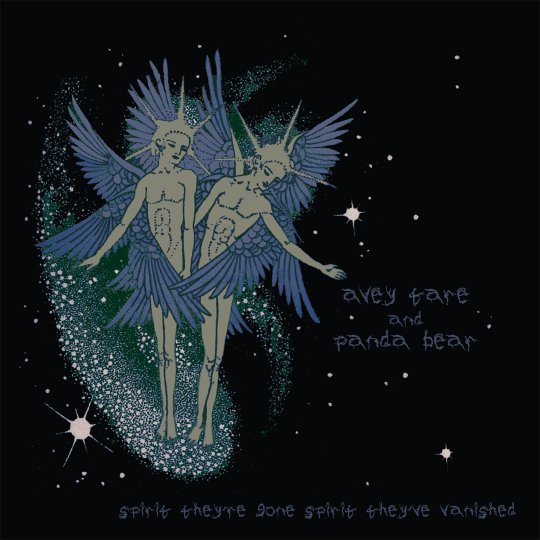
Years before Animal Collective became indie royalty, they were just four Brooklyn via Baltimore transplants that had begun making music with one another throughout high school. The band wasn’t defined as such until Avey Tare (David Portner), Panda Bear (Noah Lennox), Geologist (Brian Weitz) and Deakin (Josh Dibb) first joined forces together for their terrific noise/freak folk record, Ark, in 2003. But before AC was established as a creative force, the various members released a handful of records under the names of the different members playing on them. Avey Tare had written the bulk of what was initially intended to be his first solo LP, Spirit They’ve Gone, Spirit They’ve Vanished, in the first few years that he moved to Brooklyn, but he was so impressed after hearing Panda Bear drum that he recruited him to play drums on the album. Defined by a fusion of psychedelic pop, freak folk, ambient, noise, and experimental rock, STGSTV is a landmark of avant-garde pop that established the idiosyncratic patch that the duo (and later trio/quartet) would follow throughout the rest of their career.
Although all four members of AC didn’t begin releasing music with one another until a few years after Tare moved to Brooklyn, they’ve been playing music with each other for years beforehand. Noah and Josh met in grade school, and at some point in high school Josh introduced Noah to Dave and Brian, whom he had formed an indie rock band called Automine with. From there the four of them began swapping tapes, playing music, and expanding each other’s tastes. After high school Dave and Brian moved to Brooklyn (where Dave began work on STGSTV), and Noah and Josh moved to Boston, where Noah began work on what become his solo debut LP as Panda Bear. Panda Bear is an album comprised of Noah’s high school home recordings that include a variety of instruments including acoustic/electric guitar, a bass synth, a keyboard synth, piano, and cello (but no drums, curiously). It’s a solid first effort that established Noah’s compositional approach, but it doesn’t leave much of an impression, and is easily the most underwhelming record that he’s released as a solo act. Although they had been recording with one another for years, it wasn’t until Noah tracked drums on STGSTV that their collaborations began to manifest into music that would begin to define their artistic careers.
In contrast to Panda’s lo-fi, experimental electronic solo debut, STGSTV is a primarily analog avant-garde pop record with traces of psychedelia, freak folk, noise, ambient, and experimental rock seamlessly folded into its electro-acoustic sprawl. Avey wrote all of the songs, and played all of the instruments save for the drums, which included acoustic guitar, piano, bass synth, keyboard synth, tape loops, and his unmistakable signature shriek, which became one of the most distinctive elements of their sound. Future AC songs would be shaped by Panda’s voice as well, beginning most notably on the stellar second strictly Tare/Bear AC record, Sung Tongs, but on STGSTV it’s just Tare’s voice leading the proceedings. STGSTV is broken up into 10 songs, 2 of which are instrumentals, and the other 8 run the gamut from 3 and a half to 12 minutes, while defying easy classification at every turn.
The album begins with “Spirit They’ve Vanished” which consists of little more than shrill synth tones fluttering alongside Tare’s understated croon. It’s both tender and abrasive, and it perfectly sets the tone for everything to follow. The record balances the duo’s burgeoning avant-garde impulses against Tare’s first real forays into songwriting. There are moments of percussion-heavy propulsion, and moments of mesmerizing drone, but there aren’t any viable singles, or many songs that really even follow a verse-chorus-verse structure. Whether we’re talking about a song with that builds to a more conventional peak, like the lumbering march of the deliriously psychedelic “Penny Dreadfuls”, or something a little bit more amorphous, like the wandering noise interlude “Untitled”, the tracks that form STGSTV are bewitching and eclectic in equal measure, but they never compromise an ounce of Tare’s vision.
Although Tare and Bear would continue recording with one another (and Geologist and Deakin) throughout the next two decades, and would end up releasing many better records, there are still plenty of songs on STGSTV that rank as among the best to be released under the name AC. The record’s second song, “April and the Phantom”, brings Panda’s nimble tribal rhythms into the fold for the first time alongside Tare’s aforementioned shriek, which quickly became a staple of their sound. “Penny Dreadfuls” was written by Tare at 16, and it slowly builds into a euphoric eruption defined by twinkling keys, a barrage of cymbals, and some of Tare’s most expressive singing up to that point.
“Chocolate Girl” is broken down into two movements, the first of which alternates between Tare singing wildly over chiming synths and cymbal rolls and a soft acoustic guitar progression smothered in tape loops and synth texture as Tare begins to serenade the listener. The second movement is a jaunty acoustic guitar and kick/snare bounce with Tare’s restrained melodic delivery hovering above it all, and it’s one of the most infectious moments on the record. And on the bubbly, yet propulsive late-album highlight, “La Rapet”, Avey delivers a surprisingly anthemic vocal melody atop some of Panda’s most complex rhythms for the bulk of the song, before they transition into a waltz propelled by bright synths and Tare’s wistful delivery. The elements of AC’s sound were transparent from the start, but they were never again configured into shapes quite this unconventional while still conveying so much heart.
The sentiments expressed by Tare throughout STGSTV are entirely concerned with the death of childhood. Every song discusses some facet of growing up, and Avey sums up the record’s thematic through line best at the end of the opening track, “Spirit They’re Gone”, with “In spirit they’ve vanished/And I’ll show you why/They’ll make you take elder paths by this time/If we were just dolphins/In the sea and fly/It’s hard to kiss our/Child games goodbye”. The high-pitched frequencies, dense, lo-fi production, and engaging melodies heighten the potency of the nightmare fairy tale aesthetics, but it’s Tare’s poignant observations on the transition into adulthood that gives imbues the record with a sense of timelessness far beyond the instrumental ingenuity.
On “April and the Phantom” Tare sings about a girl named April who longs to escape into nature despite the opportunities that adulthood present “Everybody wants it/Ah, can't you see me waste it?” while on “Penny Dreadful” Tare depicts an encounter with a bully on the bus that’s cut brief when a friend intervenes “It’s a shame to hear the sound/When the penny hit the ground/And I want to go back home”. The song “Chocolate Girl” almost functions as a microcosm of the record’s themes as a whole, with Tare eventually learning to make peace with his parting from the titular character “Bell of the rain who brought the stings and dead/And who will pop the trade/’Cause I can’t see you/I’ll open up my brain again”. The lyrics are generally simple and heartfelt, but as the record progresses the sense of whimsy continues to recede, culminating in the grand epic, “Alvin Row”.
While the vast majority of the songs on STGSTV don’t stand out among their finest offerings, the astonishing 12 minute closer, “Alvin Row”, is still the most ambitious song that Avey has written to date. Throughout the course of nearly 13 minutes Avey and Panda unleash a tour de force of catharsis that begins with a harsh sheet of white noise to signify birth. From there a gentle piano melody begins to pick up steam as Avey depicts his childhood in a state of rapturous awe “Old clapper you can step inside/Accustomed to the rust your silver child”. Within a few minutes “Alvin Row” reaches the point of adolescence, with Tare repeatedly screaming “Run!” in the most devastating and expressive tone that he’s ever delivered over some remarkable cymbal rolls from Panda. After the storm subsidies, and the realities of adulthood begin to settle in, the instrumentation slowly begins to shift into a steady psych-pop shuffle and Avey adopts a contemplative but optimistic tone “I pulled the glass, it dripped too fast for second dawn/Since we passed through the maze as we unlock the stage of my other ride”. The guitars and drums continue to pick up steam until Panda begins to deliver a barrage of cymbal rolls while Tare closes the song out with a resigned acceptance in departing from childhood, vowing never to lose that spark “When I’ll say go, you say go, dear Alvin”.
STGSTV wasn’t a commercial breakthrough for the band despite lighting up the blogs (that wouldn't happen until the pair reconvened for their aforementioned 2004 freak folk classic, ST) but it was without question a creative breakthrough. There were obvious precedents for their music in the work of The Beatles, Pink Floyd, The Olivia Tremor Control, Pavement, and plenty of underground visionaries, but there’s never been a record released before or since that sounds anything like the remarkably cohesive blend of acoustics and electronics that Tare and Bear utilized on STGSTV. The four future members of AC spent the summer before its release engaged in the kind of improvised electro-acoustic jamming that would go on to become inform all of their future recordings, and all of it had a precedent here.
The band rarely returns to songs from STGSTV for their live shows, which is hardly surprising given the overwhelming emotional rawness of the sentiments expressed on it, but every once in a while AC will play various snippets of songs as a kind of tantalizing fan service. Despite the heights that they reached throughout the ensuing decade, STGSTV has continued to loom large on everything that the members of AC have done together, and as solo artists. It not only established the core/scope of their compositional approach and recording process as a band, but it showed what’s possible when two people with boundless creativity join forces under no pretense but that of discovering the boundless possibilities of sound.
Essentials: “Alvin Row”, “La Rapet”, “Chocolate Girl”
1 note
·
View note
Text
tagged by @local36degrees to answer these 15 questions then tag 15 other people. Thank u!!
1. Name (optional): jess
2. Where are you from? uk
3. Name one singer/band who’s well known in your country: literally just name anyone and you’re there like it’s the hecking uk
4. Favourite Male singer/s: robert smith, mark hoppus, alex gaskarth, morrissey, paul klein, nicholas petricca, dave gahan, matty healy, patrick stump, tom delonge, ben barlow, harry styles
5. Favourite Female singer/s: hayley williams, heather baron gracie, siouxsie sioux, tay jardine, taylor swift,
6. Favourite Band/s: blink-182, the cure, pale waves, paramore, siouxsie and the banshees, the smiths, all time low, the 1975, walk the moon, depeche mode, tears for fears, waterparks, green day, day6, neck deep, as it is,
7. Favourite music genre/s: alternative, pop punk, post punk, new wave, indie, alt rock, synth pop, k-pop,
8. Favourite album/s: untitled album- blink-182, wish, the head on the door- the cure, walk the moon- walk the moon, riot, self-titled- paramore, 21st century breakdown- green day, the 1975- the 1975, superstition- siouxsie and the banshees, red- taylor swift, life’s not out to get you- neck deep, violent things- the brobecks, future hearts, don’t panic it’s longer now, nothing personal- all time low, violator- depeche mode, harry styles- harry styles,
9. Favourite song right now: new year’s eve- pale waves, always- blink-182, next in line- walk the moon
10. How many songs do you have in your music player? far too many to count
11. Put your playlist in shuffle mode. What song came first in the queue? Anklebiters- paramore
12. Name 3 underrated musicians: pale waves- they’ve only officially released 3 songs but they’re a great alt band from manchester and if you like the 1975 and the cure you’re probs gonna like em, lany- a cool chilled out alt pop group from la who only bought their first album out near the start of the year, you’d like em if you like troye sivan and the 1975, i don’t know how but they found me- they’ve only bought out 2 songs so far (both of which hit the top 10 on the alt charts on itunes) and they take a lot of their musical and aesthetic inspo from the alt scene from the 70s and 80s
13. Have you memorized a song? far too many
14. Do you listen to music with lyrics that aren’t in English? i like a bit of k-pop
15. Do you have any favourite non-English artists? If so, where is he/she from? day6, bigbang, exo, dreamcatcher, cnblue, ftisland, winner - all from south korea. one ok rock and babymetal - japan
i tag: @all-about-wordswordswords @firesideash @delicatepcy @floralyoungbloods @tracedshadows and anyone who sees this post and hasn’t done it yet
4 notes
·
View notes
Text
Kitchen trends in 2020

Eco-credentials, natural materials and the industrial theme continue to be the focus of kitchen trends in 2020
Natural materials
With the kitchen now being a homogenous part of ground floor living space, the requirement for this functional zone to bring a level of warmth of cosiness is reflected in the growth of natural materials.

Reflecting the trend for marble effects, CRL Stone has introduced the Pacific Grey décor to its line-up of quartz worktops. It comes in 20mm and 30mm thicknesses
Enter timber and wood-effect furniture and the use of natural or stone effect worktops for modern handleless, as well as classic contemporary Shaker kitchens.
Wayne Dance of Inhouse comments on the: “Timber will be high on the must-have list for 2020. Real and wood-effect finishes have increased in popularity and with advanced manufacturing processes, it’s often hard to tell them apart.”
And sales and marketing director at Mereway Kitchens Mark Mills agrees: “With new innovation helping to develop more realistic natural-style finishes, wood and stone-style worktops are becoming big sellers.”
These timeless materials also give longevity to a kitchen design, combining elements of the past with up-to-date technology.
Founder of Ledbury Studio. Charlie Smallbone comments: “Something I see for 2020 is the way we’re looking to the past and reinterpreting it to create the future.
“This is by no means new – but the way we are accessing that past has changed.
“Social media is this amazing research tool that gives us instant access to very visual source materials from 50, 60, 70 years’ ago. This is then inspiring people to revisit those styles and put their own stamp on them.”

Part of the Cucina Colore range by Mereway is the Lastra slab door shown in Natural Oak and Dust Grey Supermatt
Industrial theme
Opposing and yet complementary to the use of wood and stone in the kitchen has been the growth of the industrial trend.

The Zenuno15 range from The 1810 Company features undermount sinks in widths of 400mm, 500mm and 700mm – all available in copper, gunmetal and gold brass PVD finishes. There is also a range of matching PVD accessories
It has seen the introduction of a gamut of metallic finishes, with bronze, copper and gunmetal coming through in sinks, taps and cabinet handles.
Kitchen channel manager at Grohe UK Tony Wilson agrees: “Coloured sinks and taps are starting to emerge and are expected to become far more readily accessible and specified in the home over the next 12 months. The industrial trend is still booming.”
In fact, metal has even made its way onto furniture frontals, such as The Metallics Collection by Ledbury Studio. Charlie Smallbone explains: Metallics came to the forefront in kitchens last year and I see this continuing for some time yet.”
And this trend for urban sophistication is also set to lead to a greater influence of black in the kitchen, report industry experts.
Product designer for Pronorm Gerd Meier says: “Black is going to be an even stronger colour in kitchen design in 2020.
“So far its use has been used largely as design accents but it’s now making its way to full doors, worksurfaces and cabinetry, not only in solid matt black but also in stained fine grain woodgrains. “We’ll see more black, either as full kitchens for an urban contemporary look, or in colour blocking combining black with a contrast colour or warm woodgrain.”

Black is a key kitchen trend for 2020 seen here as a colour block effect in a mix of cabinetry from Pronorm‘s X-line and Proline 128 grid kitchen ranges. Organic platinum in matt texture is framed with open grain oak in black
Pantry storage
Whether a kitchen is based upon an urban style or more classic contemporary design, internal storage is key.
Consider the pantry, which has become high on the wish list of consumers for Shaker-style schemes and the Space Tower concealed behind handleless doors.
Commercial director of Crown Imperial Tony McCarthy comments “Classic larder and pantry storage have also seen a resurgence as consumers create a timeless feel with inspiration from social media, achieving a touch of organised elegance is now a ‘must-have’ kitchen design feature.”
And MD of Stoneham Kitchens Adrian Stoneham agrees: “A popular choice is a wooden oak pantry with open shelving, dovetailed drawers and spice racks fitted to the upper doors. For those who enjoy entertaining, pantry bars are on the rise.”
He adds: “Another pantry option that is being incorporated in kitchen design is the Dynamic Space Tower, maximising internal space.”

Shown in a Coral soft matt lacquer, the Cambia range from Rational has been combined with Topaz units in a white marble-look lacquered laminate. It is shown with a pantry dresser featuring glassware
Eco impact
With climate activists Greta Thunberg and Extinction Rebellion continuing to draw consumer attention towards the green agenda, it’s little surprise environmental credentials are growing in importance to consumers.

Moonscape is one of two marble-inspired decors launched in 2019 and adds to the Mistral worksurface collection. Made from acrylic-based resin compound and natural mineral, the solid surface is repairable as it can be sanded
CEO of Scavolini Fabiana Scavolini comments: “Any predictions for the future must include an ecological message.
“For the kitchen market, it’s all about choosing sustainable materials that don’t sacrifice durability and adopting manufacturing processes that reduce the negative impact on the environment.”
UK design manager of the Formica Group Nina Bailey adds: “As the sustainable movement continues, designs will be eco-conscious while remaining aesthetically pleasing.”
In fact eco-credentials is a huge story for furniture manufacturer Rotpunkt in 2020. Head of UK operations Matt Phillips explains: “We are taking action against climate change and implementing new measures at our production sites in Germany to ensure the manufacture of Rotpunkt kitchens is 100% carbon neutral from January 1.”
Director of Karonia Andrew Pickup says the focus on sustainability is playing a role in worktops too: “The consumer is now paying much more attention to sustainable material choices and the durability of the worksurfaces should be one of the prime considerations along with colour choice and practicality.”
He adds: “Even the replenishment, re-use and recycling of the material should be considered as an important factor when advising people about their product choices.
“The fact that Mistral can be refurbished, repaired and repurposed after many years of use is very important when considering low impact on the environment.”
And of course, with bottles being one of the largest plastic pollutants on the planet, expect a growth in interest in filter water taps in the kitchen.
“Filtered water taps will provide a point of interest for consumers as we continue to move away from single use plastics and seek more eco-friendly alternatives. We believe these will be particularly pertinent in hard water areas where unfiltered tap water quality is often disliked.”

The Grohe Blue Pure range of filtered water tapscomes in a choice of three models, Eurosmart, BauCurve and Minta, which also offers a pull-out spout.
Small spaces
It is well documented newbuild homes, the refurbishment projects of tomorrow, are shrinking in size.
It continues to give rise to unobtrusive kitchens which can be completely concealed and is bolstering the sales of built-in appliances, especially in slimline or compact versions.

Boasting a traditional design, the Reginox Vechi is a 3-in-1 instant boiling water hot tap in polished chrome with white ceramic handles
It has seen a demand for clutter-free worktops with the kettle increasingly replaced by a hot water tap, which also ticks the eco box.
Sales and marketing director of Reginox Dave Mayer comments: “At Reginox, sales of hot taps have quadrupled in the last 12 months and we anticipate they will quadruple again across 2020 and again across 2021.”
There is also a demand for quieter appliances, as noise can be magnified in small spaces and have an effect on consumers’ wellbeing.
According to marketing communications manager of InSinkErator Europe and Russia Anne Kaarela smaller kitchen spaces can also help spur waste disposer sales.
She points out: “Research has shown that the footprint of new homes has significantly decreased; 958sqft n 2016 compared to 1,055sqft in 2003.
“A food waste disposer is a perfect addition to compact dwellings as it eliminates food waste and the unpleasant food odours emitting from, the often numerous, kitchen bins.
Smart appliances
Of course convenience is key for appliance sales, with models offering the benefits of time-saving as well as optimised performances to reduce resource use.
Taking this one step further are smart appliances which can help users better monitor their resource use and offer advice on optimised programmes.

Hoover’s first AI (artificially intelligent) washing machine, the AXI features voice assist which allows the user to choose wash programmes, ask for suggestions about the best washing programme or stain removal advice
And connectivity is growing across product sectors from laundry to cooking and food storage.
Fabiana Scavolini adds: “It would be remiss to ignore the connected kitchen, already driving value growth in the luxury kitchen and now filtering into the mid-market, thanks to more accessibly-priced products.
“Our retailers have reported a rise in the number of smart products being integrated into Scavolini kitchens from voice-activated extractors to fridges with integrated cameras so that consumers can check the contents of their fridge while at the shops.”
Certainly product manager for range cooking at Glen Dimplex Sarah Whitfield says smart technology will continue to influence appliance sales, adding: “Our recent research into the future of range cooking shows that connectivity is a key technology trend for consumers.
“Overall when we asked consumers what would they like to see on their next range cooker, three quarters said they want Artificial Intelligence or connectivity.”
And Matt Phillips of Rotpunkt adds: “We also feel that smart technology will help shape future trends. We are keen to welcome this new era of kitchen design in 2020 and offer automated lighting solutions, which can be controlled through virtual assistants like Alexa or Siri by voice or remote control.”
Also read about the latest trends to impact on bathroom design in 2020.
This content was originally published here.
Interested In a Free Kitchen Design?
For a Limited Time, Sign UP for your own Design and find out what is possible.This Designs Includes a Free Consultation, Floor plan, 3D views and a Quote to complete your Kitchen Project! Click on the Button Below and schedule your time and see if you qualify!
Schedule Now!
Read the full article
0 notes
Text
MA Fashion and Textile Practices Major Project Path - 5th September
Punk and Vivienne Westwood
The punk scene in both the UK and America was of course to continue long after the demise of the Sex Pistols, they were just the catalyst to project the punk sound into the mainstream. In the US bands such as; The Stimulators, Bad Brains - significant for being the first all black punk band, Black Flag - my brothers favourite band, Dead Kennedy’s, Agnostic Front, Minor Threat and more had all drawn inspiration from the like of Iggy Pop and The Stooges, the Ramones and the Sex Pistols and carried punk forward into the future. Bands like Nirvana, Rage Against the Machine and Green Day are bands we know today because they were inspired by those earlier punk pioneers. Billy Joe Armstrong (2010), lead singer of Green Day spoke to Rolling Stone magazine about the Sex Pistols impact on him as a writer:
“The Sex Pistols released just one album … but it punched a huge hole in everything that was bulls*** about rock music, and everything that was going wrong with the world, too, no one else has had that kind of impact with one album. Never Mind the Bollocks is the root of everything that goes on at modern-rock radio. It’s just an amazing thing that no one’s been able to live up to.”
In the UK The Clash and The Damned continued with chart success’s and other bands grew from punks influence such as; Joy Division, Siouxsie and the Banshees - who had been around for some years but were now getting noticed, The Cure, The Fall, Caberet Voltaire and many more. The sound was categorised as alternative and independent music. Johnny Rotten himself was soon to fall foul of Malcolm McLaren who left him stranded in San Francisco without money or a flight home, McLaren was off to forge his own career in pop and to manage other bands such as Adam and the Ants and Bow Wow Wow - both of which were dressed by Vivienne Westwood. Eventually finding his way home to London, Rotten formed his own band called Public Image Ltd, a sarcastic reference to the media machine that McLaren had so desperately pushed the Sex Pistols towards.
youtube
Public Image Ltd [PiL Official, Public Image Ltd]. (2013, Oct 10). Public Image Limited - This Is Not A Love Song (Official Video) [Video file]. Retrieved from https://www.youtube.com/watch?v=Az_GCJnXAI0
Malcolm was to go on and achieve relative chart success with songs such as ‘Buffalo Gals’, ‘Double Dutch’ and ‘Madame Butterfly’ which is one of my favourite songs. Growing up in the 80′s I had no idea who Malcolm McLaren was but I liked the songs he produced. His sound had taken influences from hip hop culture and electronic sounds and mixed them together, much like his attitude towards collaboration amongst bands in his punk days. I get the impression from my research that he wasn’t well liked on the punk scene, The Damned lead vocalist Dave Vanian (2019) once described him as “a Fagin type character”, and we all know how Johnny Rotten felt about him before and after the end of the Sex Pistols. He doesn’t come across as overly likable, but you cannot deny his ability to see the potential in people and the way he utilised his instinct for business.
youtube
Malcolm McLaren [Sherry Wallace]. (2012, Dec 22). "madam butterfly" malcolm mclaren [Video file]. Retrieved from https://www.youtube.com/watch?v=3JN8o8-ZK5s
After the breakup of the Sex Pistols in 1978, Vivienne Westwood had already renamed her and McLaren’s shop SEX on The Kings Road to Seditionaires, and had been selling clothing inspired by fetish and bondage clothing into wearable fashion, utilising zips, pins and straps within her designs. This of course was a huge hit with the punk youth and bands McLaren adorned. In 1980 Vivienne was left disenchanted with the collapse of punk in the UK and renamed the shop Worlds End, as that’s how it must have appeared to be. This name was to be the last incarnation of the shop and is still called Worlds End today.

Westwood, V. (1977). Anarchist Punk Gang – The 1% ers shirt from Seditionaries,1977. [Clothing]. Retrieved from https://www.metmuseum.org/art/collection/search/185218.
In 1981 Westwood and McLaren showed their work for the first time on the major catwalks, this was The Pirate Collection based on a romanticised vision of the pirate. This look was to be seminal in the New Romantic aesthetic, showcased especially by bands such as Visage and Adam and the Ants. Vivienne pioneered her own cutting techniques based on rectangles and taking inspiration from historical cuts. She would make a toile of the garment in smaller scale on a reduced sized dummy, once the fit was correct it was then scaled it up to actual size. Throughout the 80′s Westwood continued to be inspired by different cultures and times, her collection in SS'82 was Buffalo Girls, in AW that year it was Peruvian women, SS’83 was Blade Runner and so on. It was to be what she called her Pagan years. By 1984 her collaboration with Malcolm McLaren had ceased.
Westwood had been with McLaren since her break up from her first husband Derek in 1965. She already had son Ben, whom she’d had with Derek when they moved into a flat in Clapham. They then went on to have son Joseph together in 1967. Prior to meeting Derek she had been a primary school teacher and had made her own jewellery, which she sold on a stall on Portobello Road. Westwood has said that although he was a driving force behind her, she felt he was controlling. Westwood (2014) said of their meeting;
“Malcolm chased me, I didn’t want him for my boyfriend. He didn’t look after himself. And I started trying to cook for him a bit and stuff like that. And, well, that’s how it started. The point is, I didn’t want Malcolm at first, but I did, in fact, end up getting pregnant by him, even then, I didn’t really want him."

Westwood, V. (1977). The Pirate Collection. [Clothing]. Retrieved from https://blog.viviennewestwood.com/the-story-so-far/.
In the late 80′s Westwood’s style changed again, this time her girls were seen sporting fashion which parodied the upper classes. Westwood’s 1987 Harris Tweed collection was inspired by a young ballet dancer she had spotted on the tube wearing her hair up in a plaited bun, ballet shoes in bag and wearing a Harris Tweed jacket. For this collection she used fine wool tweeds and velvet’s - fabrics that the aristocracy would have used. This air of luxury continued to be a feature throughout most of her collections in the 80′s, her signature corsets becoming pieces to aspire to. Her model muse at the time was Sara Stockbridge who had the perfect look to carry Vivienne’s signature aesthetic. I always remember the cover of I-D magazine Sara was on, she was just so quirky and different compared to other models at the time.
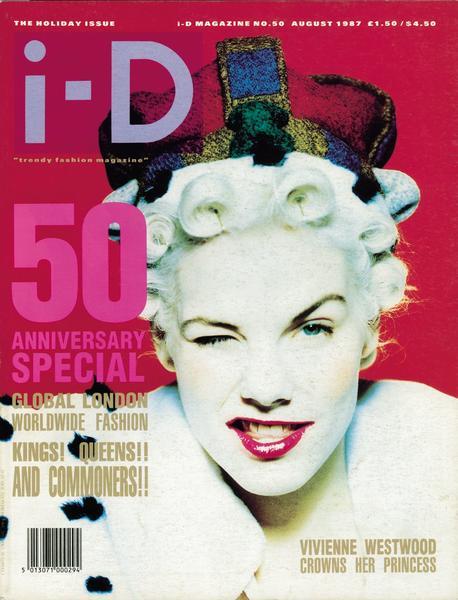
I-D Magazine, n.d. (1987). Sara Stockbridge 50th Anniversary Issue. [Editorial]. Retrieved from https://www.brennan-and-burch.co.uk/blogs/b-and-b-blog/45795267-sara-stockbridge-iconic-muse-of-an-era.
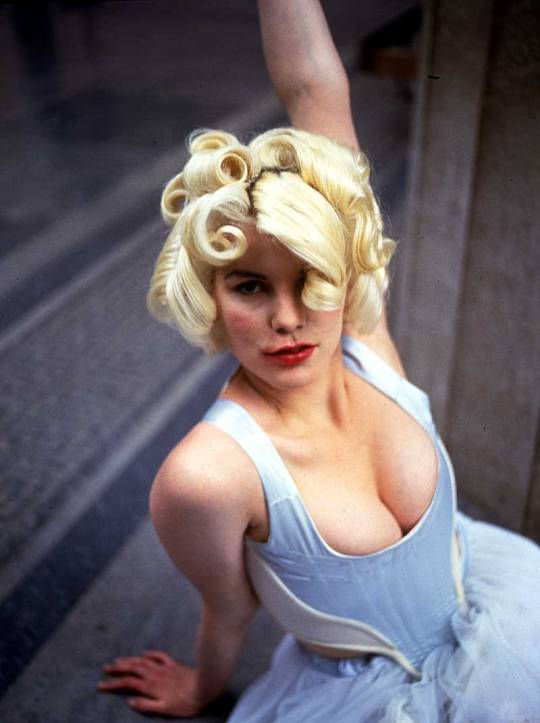
Ryan, D. (1987). Harris Tweed Collection. [Photograph]. Retrieved from http://worldsendshop.co.uk/lips-print/.
The 90′s decade sees her Anglomania years, Westwood’s take on the connection in fashion between the UK and France. She said (1993) of the collection:
“On the English side we have tailoring and an easy charm, on the French side that solidity of design and proportion that comes from never being satisfied because something can always be done to make it better, more refined.”
She took inspiration from Gainsborough’s paintings, country charm and France’s obsession with English tailoring. And in the winter of that year she went all out for tartan - a look we probably most associate with Westwood’s post punk collections. The collection was created in conjunction with her new husband Andreas Kronthaler. They had met previously in 1988 when Westwood was teaching for Fashion Design at the Vienna School of Applied Art. He moved to London to work for her company in 1989, and their first joint collection was the Cut and Slash collection in SS’1991. They married in 1993 and have been married ever since. Whilst he is essentially a silent partner in her business she has since acknowledged him as a major contributor to her Gold Collection for the last 25 years.

Westwood, V. (1993). Andreas Kronthaler for Vivienne Westwood. [Photograph]. Retrieved from https://www.vogue.com/fashion-shows/fall-1993-ready-to-wear/andreas-kronthaler-for-vivienne-westwood.
From 2000 to present Westwood has concentrated on what she calls her Exploration years. She has been fascinated by the properties of different fabrics and what they can bring to her designs, one has fed the other, she has been treating fabric like a living entity. Since her early days on The Kings Road she has been incredibly successful as a designer. She has 12 Vivienne Westwood stores in the UK and another 63 outlets worldwide, as well as a comprehensive e commerce website.
Of late Vivienne has become concerned about the sustainability of her fashion business and ‘fast fashion’ within the fashion industry as a whole. Her new mantra is ‘quality not quantity’ and has no qualms about using her name as leverage to get ethical fashion into the mainstream. In 2014 she put a halt on expanding her business further - despite her business in China doing so well - to concentrate on seeing how her own business was effecting the environment and to work hard to ensure that her own standards of sustainability were met. Westwood (2014) said of this decision:
“Do I feel guilty about all the consumption that the fashion world promotes? Well, I can answer that by saying that I am now trying to make my own business more efficient and self-sustaining. This also means trying to make everybody who works in it happy, if I can."
That same year she launched her ‘Save The Arctic Campaign’ which featured no less than 60 celebrities sporting a specially designed T-Shirt with all proceeds of the sale going towards the charity and climate activists Greenpeace. The campaign featured celebrities such as George Clooney, Chris Martin, Grayson Perry, Kate Moss to name but a few, who were photographed by award-winning celebrity photographer Andy Gotts. Vivienne, along with some of the celebrities traveled the London underground to promote the campaign, and were pictured on the long escalators - lined with the remaining celebrity photographs - which lead up to the main head quarters of Shell Oil.

Gotts, A. (2014). Paloma Faith Save The Arctic. [Photograph]. Retrieved from https://www.viviennewestwood.com/en/westwood-world/save-the-artic-campaign/.

Zimbio, n.d. (2015). Vivienne Westwood, Sadie Frost, Leebo Freeman and Andy Gotts attend the Save The Arctic Collection launch at Waterloo Station on July 13, 2015 in London, England.. [Photograph]. Retrieved from http://www.zimbio.com/photos/Vivienne+Westwood/Andy+Gotts/Save+Arctic+Collection+Launch+Photocall/57Ugwti3R73.
The T-Shirt design featured a heart shaped globe with a flag marking the Arctic region. Vivienne (2014) felt the help of celebrities was beneficial to the campaign:
“Andy is popular with celebrities because he makes it all a pleasant experience. I also really relied on the help of Jerry Hall and Georgia May to do this. Celebrities are often the key to getting a message across, public opinion is very responsive to celebrity.”
The logo for Save The Arctic was also used to launch her SS’14 Gold Label collection show. The campaign has gone part way in ending Shell Oil’s interest on the area. After three years of constant campaigning by Greenpeace and with the support of over 7 million people, Shell Oil have quit drilling in the Arctic. There is still has a long way to go before the pressure is off this magnificent region, which supports human life and animal life not found anywhere else on Earth.
Westwood wasn’t content to leave campaign there however, and in 2019 at London fashion week John Sauven, executive director of Greenpeace UK, along with Vivienne herself took to the catwalk to conduct a climate protest catwalk spectacular. London fashion week was the ideal platform for Westwood, already a seasoned fashion aficionado and Greenpeace to push the need for large fashion brands to start taking sustainability and climate change into consideration, before it’s too late. John Sauven referenced Greta Thunberg - the school girl who made a stand against climate change by sitting outside the parliament building in Sweden, but then had the incredible support of 1.5 million school children around the world when on the 15th March came out of their schools in support of her. Sauven (2019) said of her actions:
"Greta is that shy girl sitting at the back of the classroom, she’s not a leader, she doesn’t see herself in that way. She sees herself as a very shy, quiet girl who doesn’t usually say very much. And you think, wow, that’s immense power, and it gives you immense hope. You need all these different types of people to create change. The people that shout the loudest, they maybe aren’t the people you’re going to see coming forward in the next generation.”
In the last few years Vivienne Westwood has concentrated more on using her fashion and status for campaigning and activism. She has gone on to look at how businesses can reform their policies, looking at climate ecology, looking at the effect of fracking and supporting to anti-fracking campaigns, and giving support to Cool Earth - a charity which helps indigenous communities to halt deforestation. She has her own Climate Revolution website which she fills with information on her campaigning and current fashion related items. She often designs T-Shirt graphics and donates the designs to be used by charities, her latest T-Shirt is for the charity magazine Big Issue. Here Vivienne (2019) explains her reasoning why her new Tao T-Shirt is priced at £120:
youtube
Vivienne Westwood [Vivienne Westwood]. (2019, Aug 19). IoU - Cotton and the Fashion Industry [Video file]. Retrieved from https://www.youtube.com/watch?v=evSoIaootlE
I totally support Vivienne’s attitude on why we should be paying more for our fashion - paying more and buying less. I had to think about the last time I actually bought something new, most of my purchases are from eBay or charity shops, being poor certainly helps you budget for fashion! I also love her mantra of ‘Buy well, choose well and make it last’, which applies to us as the consumer and also to fashion industry brands who need to look at the materials they are using and the way they are manufacturing their products. £120 is a lot for a T-Shirt but I can see the reasoning behind the price tag, you are paying for a more sustainable product which should have the longevity to be worn for many years, and the skilled workers who are paid fair wages to make it. As well as the proceeds going towards the Big Issue - a charity which has helped homeless people in the UK for many years.

The Big Issue, n.d. (2019). Vivienne Westwood's exclusive design just for The Big Issue is available from her store for £120 with all proceeds going to The Big Issue. [Fashion]. Retrieved from https://www.bigissue.com/latest/why-vivienne-westwood-collaborated-with-the-big-issue-on-a-limited-edition-t-shirt/.
The T-Shirt is really nice actually, it’s a call to the younger generation to build their characters, because it’s their characters which shape them as human beings, they are the ones who are going to create the future. I based my practice work on Vivienne’s Climate Revolution T-Shirt because I liked the simple sleeveless shape and raw edges, clearly based around the use of the rectangle that she has used in many of her collections.
Vivienne Westwood has always used the T-Shirt as the affordable and accessible way of buying her fashion, as with many high fashion designers, it is the one product which enables the consumer to purchase a piece of them. It’s the one product which is wearable by so many, it’s a unisex item which appeals to a broad range of people - and the more the merrier if it’s promoting a good cause.
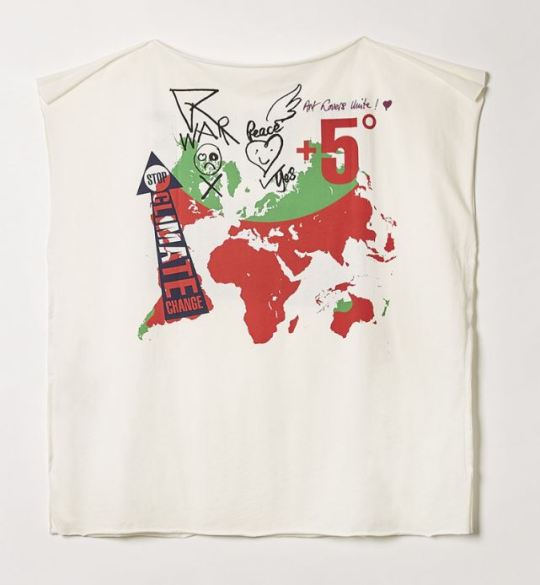
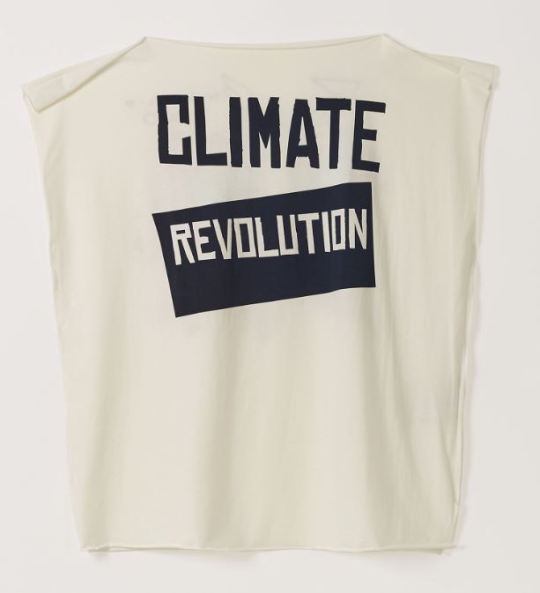
https://www.viviennewestwood.com/en/women/clothing/t-shirts/square-t-shirt-climate-revolution-white-nat-white-CLA305AW550168.html?cgid=women-clothing-tshirts#page=1&start=5
Vivienne Westwood became a Dame in 1992 when she received her OBE from Queen Elizabeth II. Always the one to make a statement, she went commando to the awards ceremony and apparently forgot her lack of underwear when twirling in her skirt for the photographers! Making a statement has been a way of life for Vivienne Westwood, from her early designs in her shop Let It Rock and then SEX to showing her support for numerous campaigns as a charity activist - she is the ultimate fashion queen of punk and long may she reign!

The Big Issue, n.d. (2019). Vivienne Westwood is making a fashion statement with the Big Issue. [Editorial]. Retrieved from http://climaterevolution.co.uk/wp/hero-post/vivienne-westwood-is-making-a-fashion-statement-with-the-big-issue/.
Websites:
Pavarini, M.C. (2014). Vivienne Westwood designs logo for Greenpeace. Retrieved from https://www.sportswear-international.com/news/stories/Vivienne-Westwood-designs-logo-for-Greenpeace-7945.
Thorpe, V. (2014). Vivienne Westwood: climate change, not fashion, is now my priority. Retrieved from https://www.theguardian.com/lifeandstyle/2014/feb/08/vivienne-westwood-arctic-campaign.
Alexander, E. (2014). Vivienne Westwood 'didn’t want' to have a relationship with Malcolm McLaren: 'I thought that maybe he’d got the wrong idea and it was my fault. Retrieved from https://www.independent.co.uk/news/people/vivienne-westwood-didn-t-want-to-have-a-relationship-with-malcolm-mclaren-i-thought-that-maybe-he-d-9746980.html.
Westwood, V. (n.d). The story so far. Retrieved from https://blog.viviennewestwood.com/the-story-so-far/.
Westwood, V. (n.d). Climate Revolution. Retrieved from http://climaterevolution.co.uk/wp/hero-post/vivienne-westwood-is-making-a-fashion-statement-with-the-big-issue/.
Hall, H. (2014). Vivienne Westwood launches star-studded Save the Arctic Campaign. Retrieved from https://www.stylist.co.uk/life/vivienne-westwood-launches-star-studded-save-the-arctic-campaign-featuring-kate-moss-naomi-campbell-and-david-gandy/60901.
Whitehouse, M. (2019). vivienne westwood and greenpeace talk staying angry and finding hope. Retrieved from https://i-d.vice.com/en_uk/article/ywy4gg/vivienne-westwood-greenpeace-john-sauven-climate-crisis.
Whitmore, G. (2013). Vivienne Westwood: Her life and career so far - in pictures. Retrieved from Whitmore, G. (2013). Vivienne Westwood: Her life and career so far - in pictures. Retrieved from https://www.theguardian.com/lifeandstyle/gallery/2013/nov/30/vivienne-westwood-sexpistols.
Petrusich, A. (2016). Where Punk Rock Begins. Retrieved from https://www.newyorker.com/culture/cultural-comment/where-punk-rock-begins.
Chick, S. (2017). MC5 – 10 of the best. Retrieved from https://www.theguardian.com/music/2017/aug/17/mc5-10-of-the-best.
Uhelszki, J. (2018). MC5 on ‘Kick Out The Jams’: “We weren’t on a meth power trip… just a power trip”. Retrieved from https://www.uncut.co.uk/features/the-making-of-mc5-s-kick-out-the-jams-33061.
Gibson, C. (2016). What happened in Chicago in 1968, and why is everyone talking about it now?. Retrieved from https://www.washingtonpost.com/news/arts-and-entertainment/wp/2016/07/18/what-happened-in-chicago-in-1968-and-why-is-everyone-talking-about-it-now/?noredirect=on.
BBC News. (2018). 1968 Democratic National Convention: A 'week of hate'. Retrieved from https://www.bbc.co.uk/news/world-us-canada-45226132.
Ramone, M. (n.d). Marky Ramone. Retrieved from http://www.markyramone.com/biography/.
Rowley, S. (2017). The Damned: an epic tale of fast living and faster music. Retrieved from https://www.loudersound.com/features/the-damned-an-epic-tale-of-fast-living-and-faster-music.
Phillips, S. (2013). Robert Golden's best photograph: the 1976 Notting Hill carnival riots. Retrieved from https://www.theguardian.com/artanddesign/2013/mar/13/robert-golden-best-photograph.
Song Facts. (n.d). White Riot by The Clash. Retrieved from https://www.songfacts.com/facts/the-clash/white-riot.
Ward, O. (2019). British politics is (Johnny) rotten—no wonder punk music is making a comeback. Retrieved from https://www.prospectmagazine.co.uk/arts-and-books/british-politics-is-johnny-rotten-no-wonder-punk-music-is-making-a-comeback.
Lauderdale, B. (2015). A Brief Political History Of The United Kingdom. Retrieved from https://fivethirtyeight.com/features/a-brief-political-history-of-the-united-kingdom/.
BBC News. (2011). Smashed Hits: Is London Calling the best anthem for a city?. Retrieved from https://www.bbc.co.uk/news/magazine-14324385.
Welch, J. (2016). Sex Pistols: Anarchy in the UK and the tour they tried to ban. Retrieved from https://www.bbc.co.uk/news/uk-england-norfolk-38165091.
Serena, K. (2018). The Short, Tragic Romance Of Sid Vicious And Nancy Spungen. Retrieved from https://allthatsinteresting.com/nancy-spungen.
Alt Press. (2018). WAS THE SEX PISTOLS’ FIRST US TOUR AS DESTRUCTIVE AS REPORTS SAY?. Retrieved from https://www.altpress.com/features/sex_pistols_first_u-s-_tour_destructive_1978/.
Wawzenek, B. (2017). Influence and Infamy: How the Sex Pistols Impacted the Future of Music. Retrieved from https://diffuser.fm/sex-pistols-influence/.
Perry, A. (2018). The end of the Sex Pistols: how punk died 40 years ago today, and John Lydon rose from its ashes. Retrieved from https://www.telegraph.co.uk/music/what-to-listen-to/end-sex-pistols-punk-died-40-years-ago-today-john-lydon-rose/.
Documentaries:
Miller, J.J. , MacDonald, E. , Barbisan, J. , Tabata, S. (Writers) & Miller, J.J. (Director). (2019). Punk: Part 1 [Television series episode]. In D. Murray (Producer), Punk. Canada, North America: Sky Arts.
Miller, J.J. , MacDonald, E. , Barbisan, J. , Tabata, S. (Writers) & Miller, J.J. (Director). (2019). Punk: Part 2 [Television series episode]. In D. Murray (Producer), Punk. Canada, North America: Sky Arts.
Miller, J.J. , MacDonald, E. , Barbisan, J. , Tabata, S. (Writers) & Miller, J.J. (Director). (2019). Punk: Part 3 [Television series episode]. In D. Murray (Producer), Punk. Canada, North America: Sky Arts.
Miller, J.J. , MacDonald, E. , Barbisan, J. , Tabata, S. (Writers) & Miller, J.J. (Director). (2019). Punk: Part 4 [Television series episode]. In D. Murray (Producer), Punk. Canada, North America: Sky Arts.
0 notes
Text
Reaper: References
Alright so that “The game’s in the refrigerator” full audio came back around on my dash and I realized that not everyone probably recognizes Reaper’s references, so I figured I’d make this post to help pool sources and quotes, and also as a potential resource guide in the future.
Lots more under the cut!
A little bit of context
So as most Reaper/Gabriel Reyes fans know, Gabriel is from Los Angeles, California. Los Angeles is the second-most-populated city in the United States (second only to New York City). When the Spanish came, they founded a mission in the region named “Mission San Gabriel Arcángel” (wink wink) for the Archangel Gabriel, messenger of God. For those of you unaware, the original route connecting for the 21 Californian Missions is called “El Camino Real,” or “The Way of Kings”/ “The Royal Way” - whether intentional or not, Gabriel’s last name of “Reyes” means “Kings” in Spanish. The route is now historic and marked with bells that denote the way.
There are two major “valleys” in California - the Great Valley or Central Valley which spans the majority of the state, and is where the majority of California’s agriculture is grown, and the San Fernando Valley, which is the smaller valley where Los Angeles is located. Californians can refer to either as simply “The Valley,” but more often than not when someone says they “went to the Valley,” or are “heading to the Valley,” they are referring to the San Fernando Valley. Among American pop culture, “going to the Valley” is often a reference to someone heading to Los Angeles or Hollywood to try and become famous.
Lastly, Blizzard’s headquarters are located in Irvine, California, which is one smaller cities that make up the “Los Angeles metropolitan area.” This is cheekily referenced in the Numbani map, where a flight from “Irvine, CA” is listed as “delayed” on the Airport’s board. Meanwhile, the Los Angeles flight is still “on time” on the map’s flight board.
Gabriel’s first reference to his ties to L.A. is on the Hollywood map, where he will say the line “Home sweet home” occasionally.
The Los Angeles Lakers
It’s not surprising then that Gabriel is a fan of the Lakers, one of Los Angeles’ two professional NBA basketball teams. The Lakers have been known to be a strong team for some time (although we can nitpicks over fluctuations in their status), and regardless of how someone might feel about them (...like me), the team has produced some of the greatest players and basketball games in the sport’s history.
Second Reference: “The game’s in the refrigerator.”
The full line is: “The game's in the refrigerator: the door’s closed, the lights out, the eggs are cooling, the butter's getting hard, and the Jell-O's jigglin'!” (note that this is Reaper’s exact line). This is a nearly dead-on word-for-word quote from a LA Lakers’ commentator, Chick Hearn, who was known for his unique phrases.
https://en.wikipedia.org/wiki/Chick_Hearn
You can watch the original quote here: https://www.youtube.com/watch?v=XVi98BZ2OwA (against the Sacramento Kings!)
The meaning of the phrase is basically that “the game is pretty much over, we pretty much know who won.”
What’s fucking HILARIOUS about this is that by the time the “game” of Overwatch takes place (roughly 2076-2078) the line is almost NINETY YEARS OLD. Reaper is making a fucking sports reference that, for him, occurred almost a century ago.
BUT THAT’S NOT ALL.
Third reference (that may not be finalized): “Kobe, eat your heart out.”
https://clyp.it/y34uzzv0?token=d18fc817b96d0f98c6fd8b1e461a28a7
About 7 months ago, a user on reddit pulled a bunch of then-unused audio lines from the game ( https://www.reddit.com/r/Overwatch/comments/4sz7o8/i_extracted_some_of_the_audio_files_from_the/ ). Some of them have been used (the Halloween and CNY lines). Reaper, Lúcio, and Reinhardt have basketball reference audio lines that may or may not make to the game (March Madness event, maybe?). Reaper’s line is a reference to one of the greatest basketball players of all time, Kobe Bryant, who just retired in 2016. Kobe spent all 20 years of his professional basketball career on the Lakers and among most Americans is simply referred to as “Kobe.” A fairly popular “slang term” among Californians (and other Americans) is to say the phrase “Kobe!” when taking a shot - at the hoop, at the trashcan, at...anything really. The slang version was first popularized by Dave Chapelle, an American comedian.
http://full-lifeconsequences.tumblr.com/post/152446878702
Here, the McElroy Brothers demonstrate how the term is supposed to be used.
...It does not guarantee skill.
Sports, sports, sports!
And this is the one that got me thinkin’ about writing this, because I have yet to see ANYONE talk about this:
Fourth reference: “Welcome to the black hole.” / “Welcome to the Black Hole.”
I’ve offered an alternate version where the words “black hole” are capitalized because the phrase is almost certainly another sports reference.
Another Californian sports reference.
https://youtu.be/X_2hsVvBPS8?t=391 (time 6:30 - I haven’t actually heard him say this in-game tbh)
https://www.youtube.com/watch?v=l8rdZ8wBsr4
The most diehard, intense fans of the Oakland Raiders have been called “The Black Hole” for sometime now, due to the fact that they dress in the team’s dominant color of black, accented with silver and/or grey. These are the primary colors Reaper dresses in as well. The phrase “Welcome to the Black Hole” is used by these fans as, well, a greeting or a statement.
Oakland is pretty damn far from Los Angeles, but the LA Rams are...not as notorious as the Oakland Raiders. Oakland is far closer to San Francisco in Northern California (on the other side of the San Francisco Bay). It has quite the reputation in the U.S. for being a “rough city,” but recently there’s been quite a bit of changes in the area (the gentrification of Oakland and SF Bay as a whole is really not the point of this post). The Raiders’ entire aesthetic matches Reaper’s to a tee.
Which comes to the next one:
Fifth Reference: “Just win, baby!”
“Just win, baby!” was the catchphrase of one of the most well-known Raiders’ coach Al Davis, who led the team to a era of success in the 60’s and 70’s. This makes the quote literally over a century old for Reaper (dude’s a nerd, I’m telling you).
“Under Davis' management, the Raiders became one of the most successful teams in professional sports. His motto for the team was "Just win, baby."[1] Davis was active in civil rights, refusing to allow the Raiders to play in any city where black and white players had to stay in separate hotels. He was the first NFL owner to hire an African American head coach and a female chief executive. He was also the second NFL owner to hire a Latino head coach. He remains the only executive in NFL history to be an assistant coach, head coach, general manager, commissioner, and owner.” - Wikipedia on Al Davis
https://www.youtube.com/watch?v=0RAlrzcdfRY
The Raiders are unfortunately currently in the process of trying to move to Las Vegas, Nevada unless the city of Oakland can meet the team’s requirements for staying.
Lights, camera, action
And just to round out the group, I’m gonna cover all my bases and get the easier ones out of the way too.
Sixth Reference: “I’m back in black.”
I kinda assume most people are familiar with this one, but in case you are not, this is a reference to the song “Back in Black” by AC/DC.
https://www.youtube.com/watch?v=pAgnJDJN4VA
(God damn, what a fucking good song)
Another song titled “Hell’s Bells” also came from the same album (“Back in Black”) as the song “Back in Black”...yeah it gets a little confusing at times. The album “art” is easily among the most iconic albums of all time for both its drama and its simplicity:
https://upload.wikimedia.org/wikipedia/commons/9/92/ACDC_Back_in_Black.png
Seventh Reference: “If it lives, I can kill it.”
This one is a reference to Arnold Schwarzenegger's line “If it bleeds, we can kill it.” from the movie Predator.
https://www.youtube.com/watch?v=eNr0WXQ3Ho4
Notably, Schwarzenegger is one of the more recent “Hollywood movie stars” to have become a prominent Californian politician. (Also notably, the Soldier: 76 skin “Commando” is another reference to another Schwarzenegger film “Commando” - aka the original “Taken”.)
Eighth Reference: Death Blossom
This one was new to me too!
https://www.reddit.com/r/Overwatch/comments/5ufces/til_death_blossom_is_in_fact_an_actual_military/ddtjbzy/
“Death Blossom” is a reference from the movie “The Last Starfighter” as a “last-minute surprise attack” where all enemies are obliterated in a “guns-blazing” “death spin.”
https://youtu.be/nmPGuMGs8cg?t=125 (time: 2:05)
(Seriously, please watch the link, I’m begging you)
The term has been picked up by American military members as a reference to surprise attacks where someone goes in “guns-blazing” as a final-resort attack.
Ninth Reference: “I’m not a psychopath - I’m a high-functioning psychopath.”
Finally - a reference that isn’t already thirty to forty years old. This one comes from the BBC series “Sherlock,” in which the modern version of Sherlock Holmes says as a retort to accusations that he’s a “crazy psychopath”: “I’m not a psychopath - I’m a high-functioning sociopath.” (I believe modern psychology does not differentiate between the two anymore, although really, neither term is particularly medical or scholarly.)
Reaper’s turn-of-phrasing on this one is meant to be cheeky and sarcastic: he’s correcting people by pointing out that he’s not “not just a psychopath” but an “ultra, high-functioning psychopath.” Interestingly, there’s a concept among the modern theories of psychopathy that there are “successful psychopaths” - people who have low empathy abilities, exhibit ruthless behaviors, and may manipulate others to get what they want, but typically have the social skills to stay out of jail for any crimes they may (or may not) commit. The hypothesis argues that many CEOs, politicians, lawyers, etc. are possibly “successful psychopaths” who channel their behaviors into economic or social successes.
http://www.psychologicalscience.org/news/were-only-human/psychopath-successful-psychopath.html
“They found that fearless dominance was significantly associated with overall presidential performance, leadership, public persuasiveness, communication ability and willingness to take risks. Scientists have examined the relation between fearless dominance and “everyday heroism”—that is, altruism entailing social or physical risk, like administering CPR to a stranger in need. Fearless dominance was associated with such everyday heroism, and it was also associated with early wartime heroism among U.S. presidents.
“So are psychopaths and heroes simply “twigs from the same branch”? Perhaps, although the successful psychopath remains something of a scientific enigma. This provisional evidence points to some tantalizing possibilities, but we still do not know for sure why one person with pronounced psychopathic traits ends up as a habitual and cold-blooded criminal, while another ends up as the prototype for Agent 007.”
(Please note that this is not an academic, scholarly, or medical piece - merely a conversation-starter)
And last but not least:
Keith Ferguson, Reaper’s American voice actor, was born and continues to live in Los Angeles.
http://thebageltron.tumblr.com/post/145037436303/i-still-cant-believe-reaper-and-bloo-share-the
So the real question we need to be asking Blizzard is:
WHEN WILL REAPER GET A “It’s hot in Topeka” LINE.
https://www.youtube.com/watch?v=L_IlsPypwZs
#Reaper#gabriel reyes#references#quotes#audio#sources#there's more#like the nevermore line#but I'm tired and at that point we're getting into American literature and like#not all that interested in writing those ones up#same with what doesn't kill you makes you stronger#like do I wanna talk about Nietzsche today?#no#no i do not#I might do some for Soldier or D.va#soldier's are kinda boring though#like how do you explain stay frosty?#HIS SKINS THOUGH#like holy shit#talk about fucking REFERENCES
188 notes
·
View notes
Text
Stop Trying to Be Productive
The internet wants you to believe you aren’t doing enough with all that “extra time” you have now. But staying inside and attending to basic needs is plenty.
By Taylor Lorenz
April 1, 2020
When Dave Kyu, 34, an arts administrator in Philadelphia, realized that he would be working from home for the foreseeable future, he began to fantasize about the projects he could now complete around the house.
“We went and bought all this paint and cabinet hardware and thought we were going to do the kitchen cabinet project we had wanted to do forever,” he said. Two weeks later, he and his wife haven’t touched their supplies. They have two children and demanding jobs. There’s no extra time.
“We realize now it was a silly thought,” Mr. Kyu said. “It’s a lot more stressful than I expected.”
As the coronavirus outbreak has brought life largely indoors, many people are feeling pressure to organize every room in their homes, become expert home chefs (or bakers), write the next “King Lear” and get in shape. The internet — with its constant stream of how-to headlines and viral challenges — has only reinforced the demand to get things done.
“It’s everywhere,” said Julie Ulstrup, 57, a photographer in Colorado. “It’s in blog posts, it’s on social media, it’s in emails I get from people like, ‘use this time productively!’ As if I usually don’t.”
But in the midst of a global pandemic that has upended nearly every facet of modern life, people are finding it harder and harder to get things done.
“It’s tough enough to be productive in the best of times let alone when we’re in a global crisis,” said Chris Bailey, a productivity consultant and the author of “Hyperfocus: How to Manage Your Attention in a World of Distraction.” “The idea that we have so much time available during the day now is fantastic, but these days it’s the opposite of a luxury. We’re home because we have to be home, and we have much less attention because we’re living through so much.”
Unlock more free articles.
Create an account or log in
After her office announced that it would be going remote, Sara Johnson, 30, who works in philanthropy, created a detailed schedule of all the things she’d do with the extra three hours a day that she would no longer spend commuting. “I sat down last weekend and just felt like I hadn’t been maximizing this time that I have that I don’t usually have on my hands,” she said.
“I set an hour on my cal every day for a home workout. Then I’d be on calls for three hours, then I’d make a homemade breakfast, take a walk at lunchtime, work on something non-screen-related in the evening, cook dinner and go on a run,” she said. So far, she admitted, “none of this has stuck.”
This urge to overachieve, even in times of global crisis, is reflective of America’s always-on work culture. In a recent article for The New Republic, the journalist Nick Martin writes that “this mind-set is the natural endpoint of America’s hustle culture — the idea that every nanosecond of our lives must be commodified and pointed toward profit and self-improvement.” Drew Millard put it more directly in an essay for The Outline: If you are lucky enough to be employed, the only person who cares what you’re doing right now is your boss.
Editors’ Picks
How to Make Your Work-Neighbors Be Quiet (In 3 Lies or Less)
The Alternate Aesthetic Realities of ‘Tiger King’
The World’s Great Photographers, Many Stuck Inside, Have Snapped
Anne Helen Petersen, a journalist and the author of the forthcoming book “Can’t Even: How Millennials Became the Burnout Generation,” seconded his assertion. “We’re so used to making every moment of ours productive in some capacity,” she said. “Like, I’m on a walk, I should listen to this information podcast that makes me more informed or a better person.”
Dr. Petersen said that the impulse to optimize every minute is especially common in millennials, many of whom are now balancing work and child care at home. “I think for millennials, our brains are particularly broken in terms of productivity,” she said. “Either you give up or feel bad about it all the time.”
Maggie Schuman, 32, is facing that very quandary now that her family is taking part in a Peloton challenge through the workout platform’s app.
“Every day everyone sends around a green check mark, and for some reason, now that I have that in my head of this thing I’m supposed to be doing, I’m not doing it,” Ms. Schuman, a product specialist in California, said. “I feel a bit like a failure.” She also ignored her sister when she tagged her in a push-up challenge on Instagram.
Instead, Ms. Schuman has started a gratitude journal and is working on practicing acceptance. “You’re supposed to be inventing something or coming up with the next big business idea or doing something great that’s going to be worthy of time spent at home,” she said. “I’m trying to be more OK with just being.”
Noelle Kelso, 38, a scientific consultant in Georgia, said that she’s “trying to find productivity in the small moments” but that the recent events have given her perspective.
“For a lot of Americans, everyone’s job is at stake right now whether you thought you were upper middle class, middle or working class, everyone’s livelihood is at stake,” she said. Right now she is focusing on not allowing her mind to “drift to a place of fear, concern, panic or stress,” she said, and instead encouraging herself to “keep the faith and remain grateful.”
“Putting all this pressure and stress on myself, it’s incredibly counterproductive,” said Ms. Ulstrup. “I’m putting stress on myself during a time that’s already stressful.”
Adam Hasham, 40, a product manager in Washington, said that it’s only a matter of time before more people realize that self-optimization in this time is futile. “I stopped seeing the light at the end of the tunnel,” he said, adding that his optimism about the situation had “gone out the window.”
“It’s like you’re underwater,” Mr. Hasham said.
Dr. Petersen said having compassion during these times is key. “I think that everyone is coping with this differently, and there’s a real tendency to shame people who aren’t coping with it the way you are or have different circumstances,” she said.
Finding small pleasures helps, too. Mr. Bailey offered one suggestion: “Get yourself some Indian food and drink a bottle of wine with your spouse. We’re going through a lot and we all just need to take it easy.”
https://www.nytimes.com/2020/04/01/style/productivity-coronavirus.html?referringSource=articleShare
0 notes